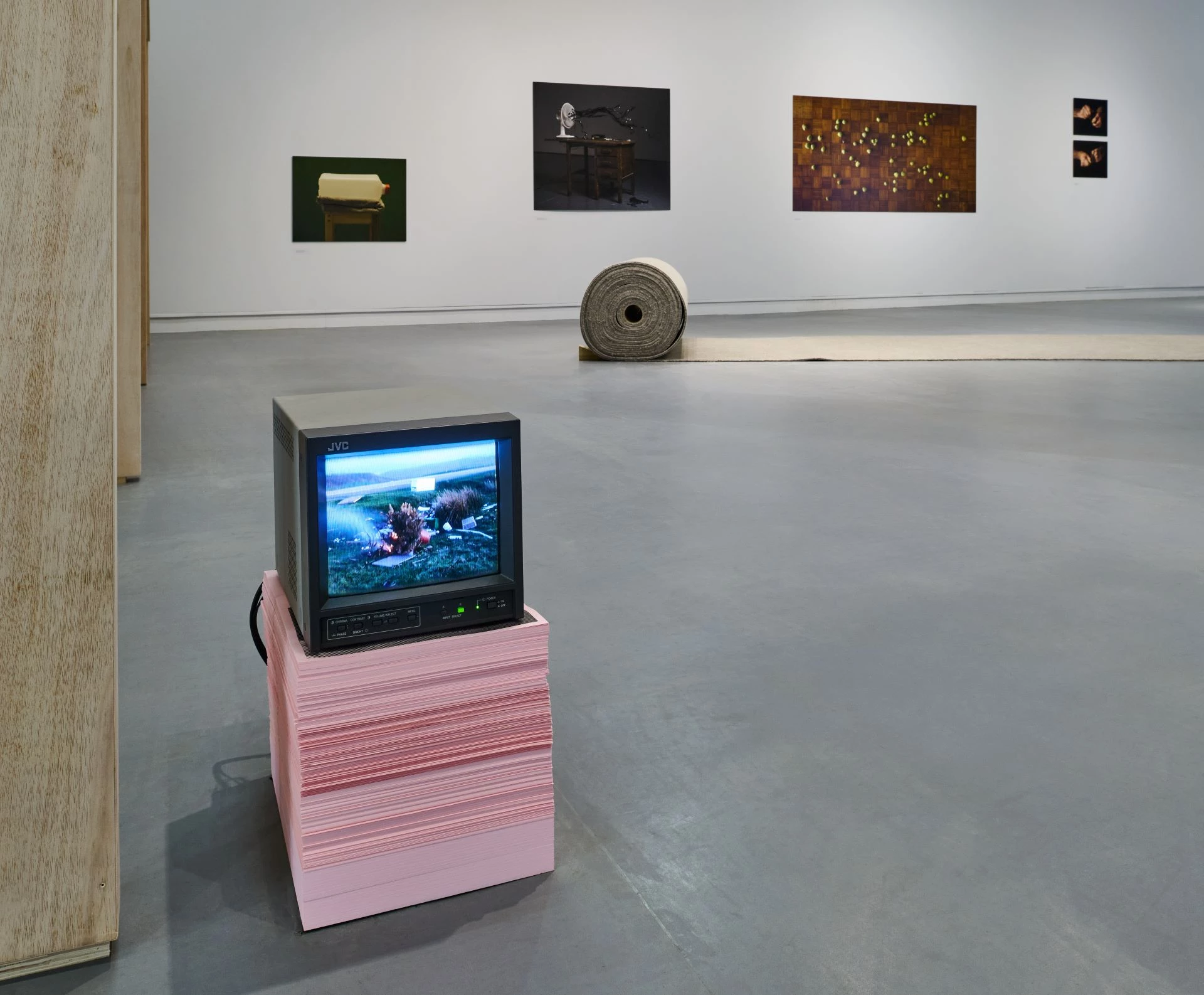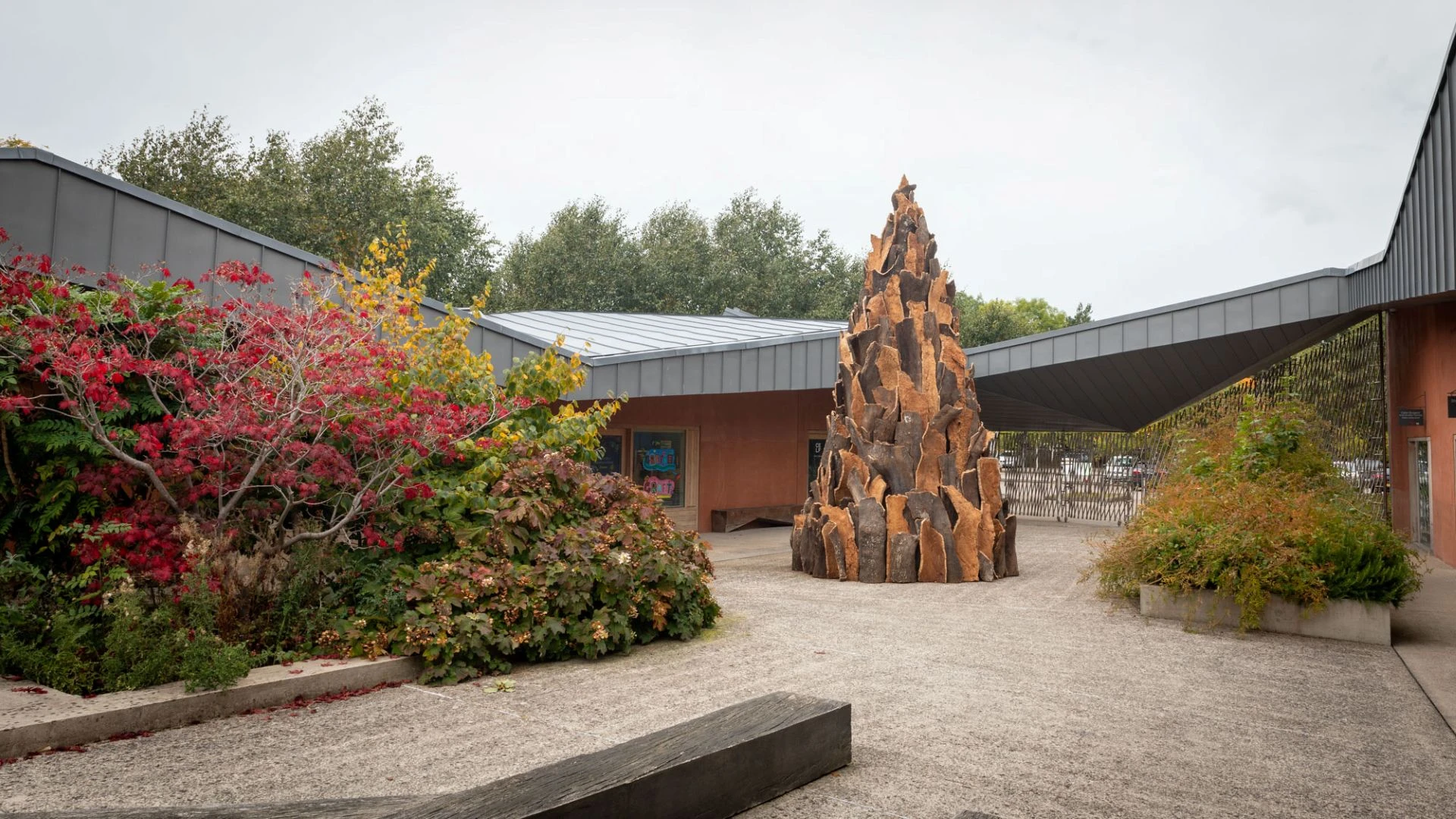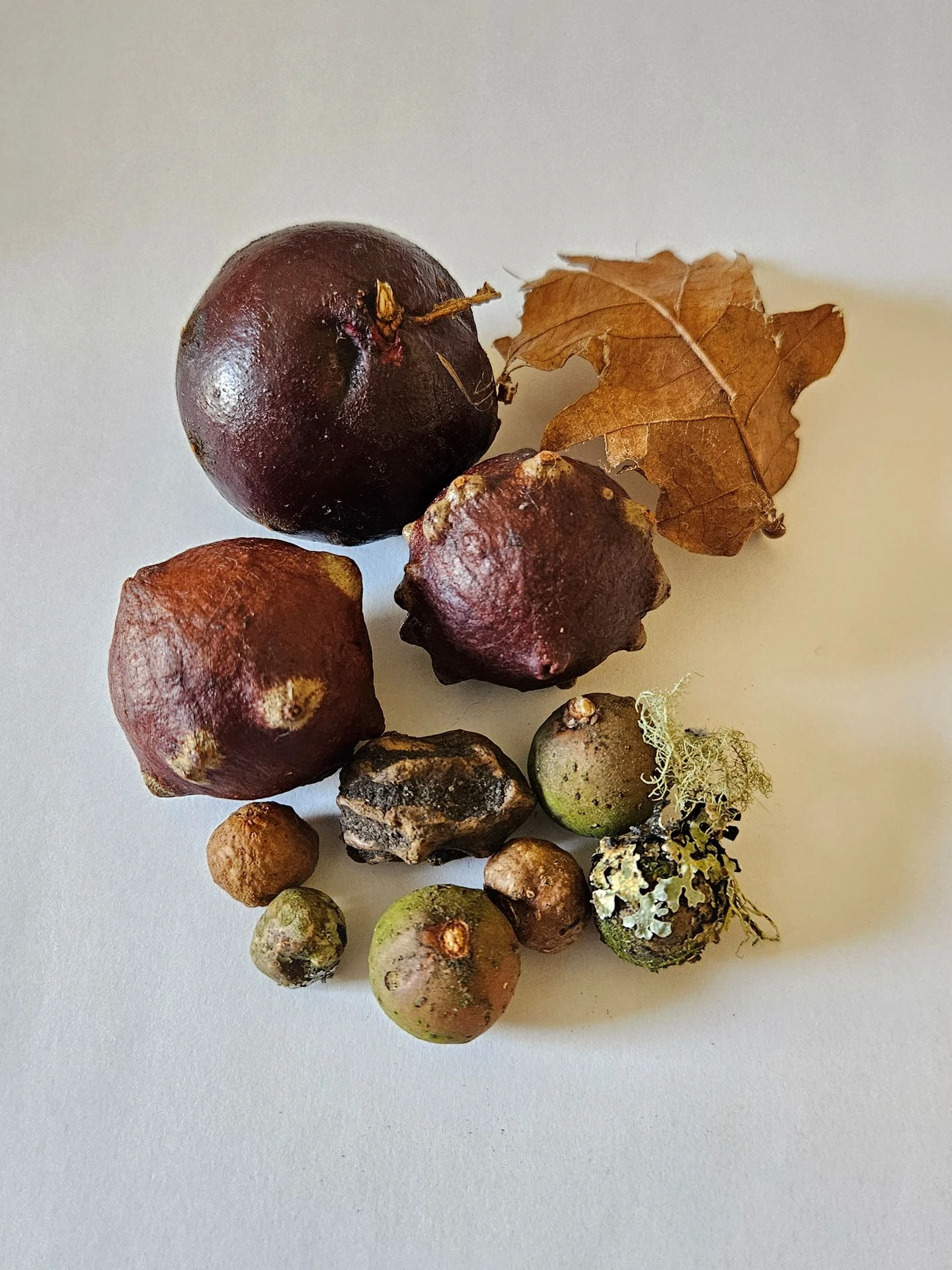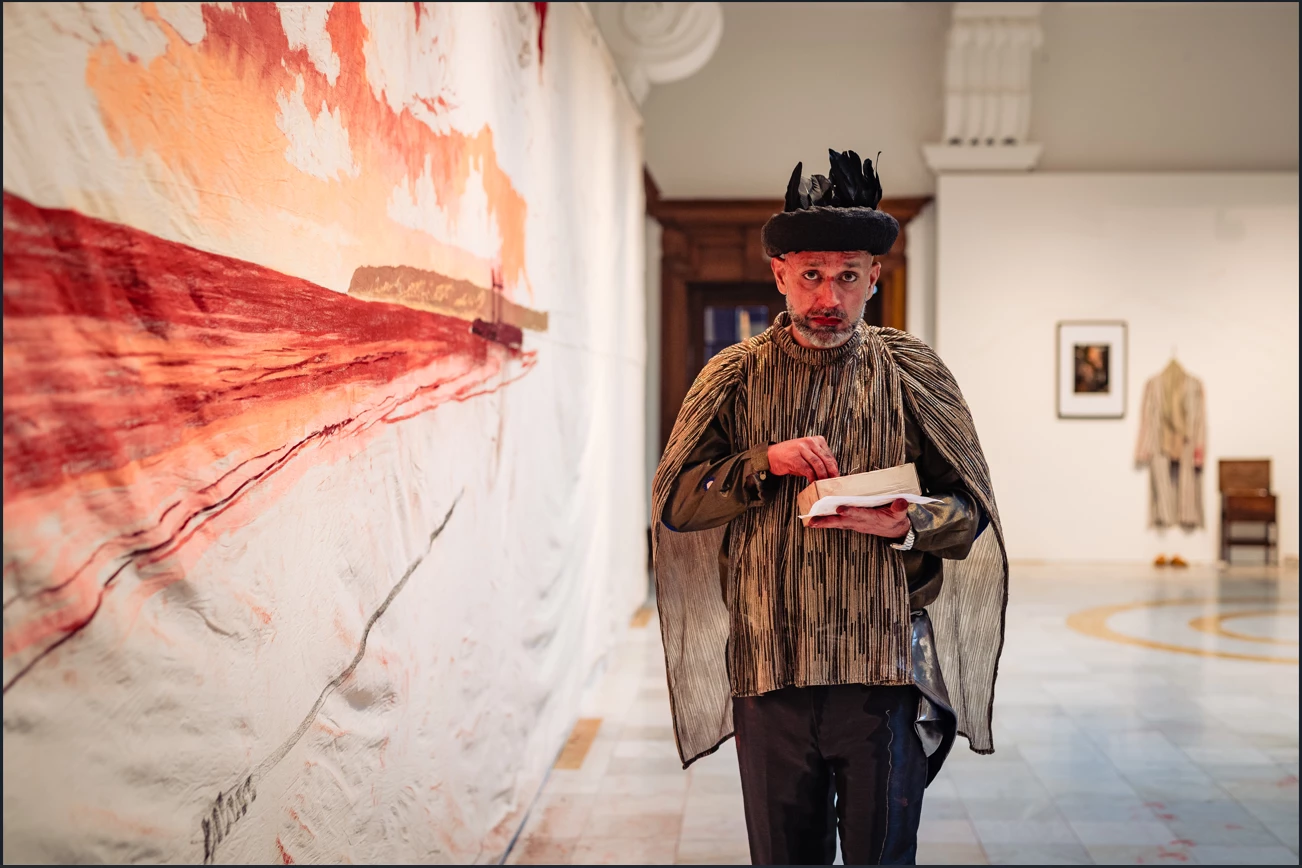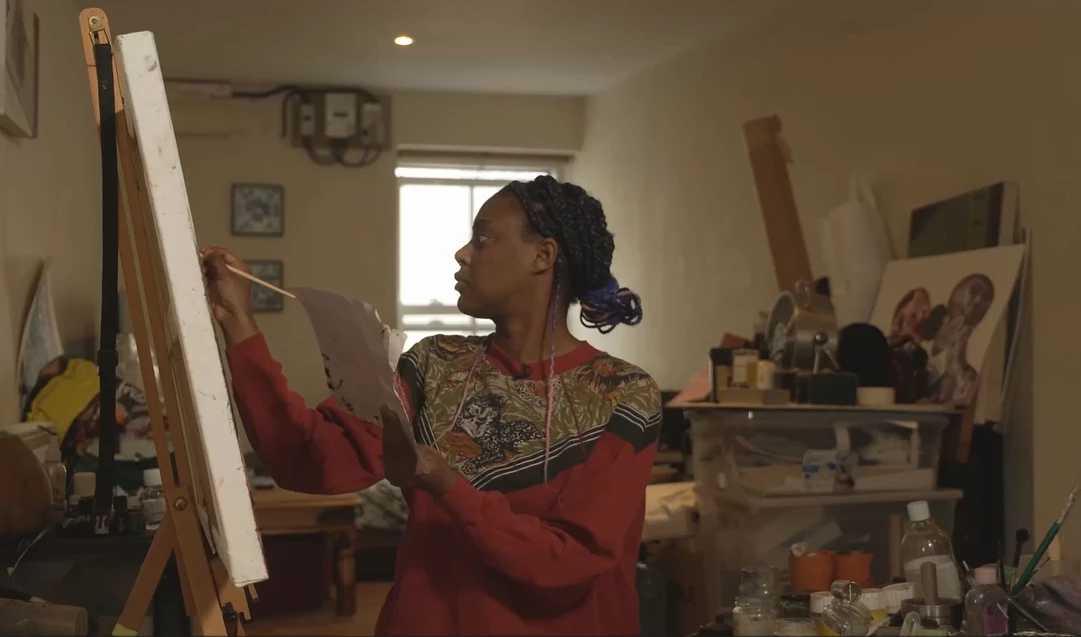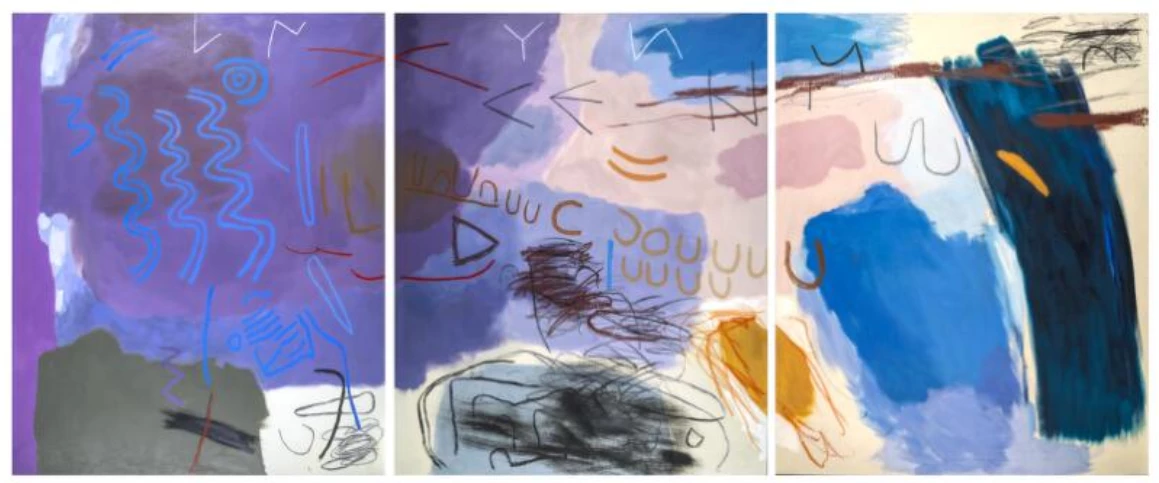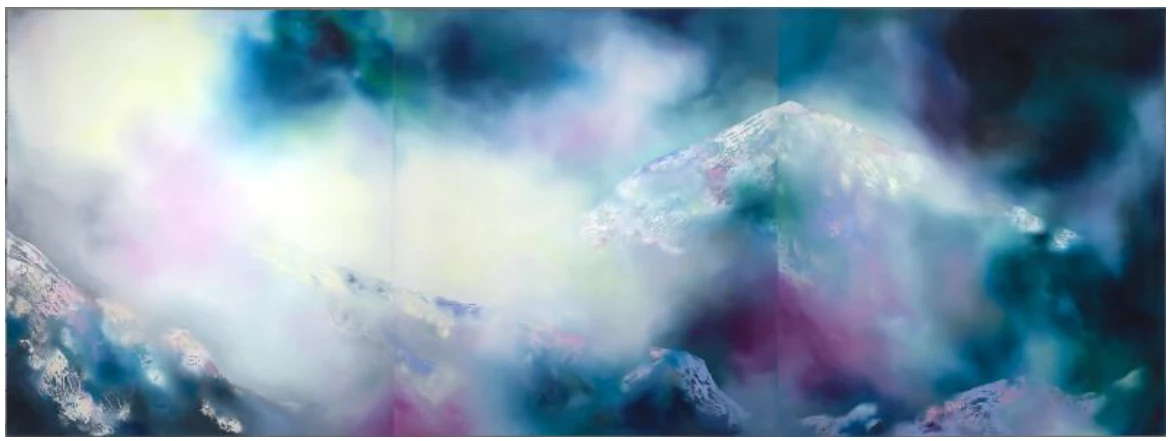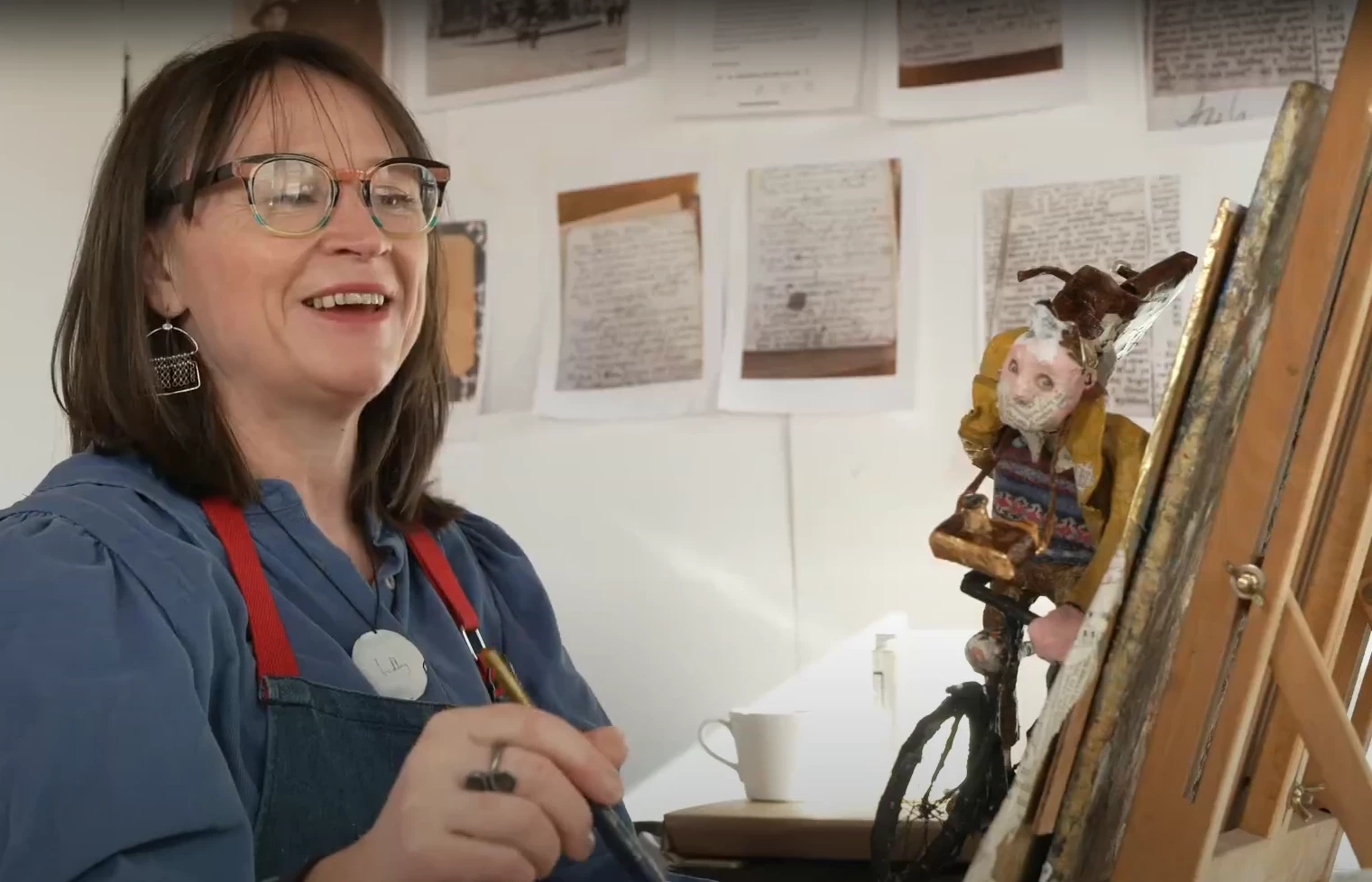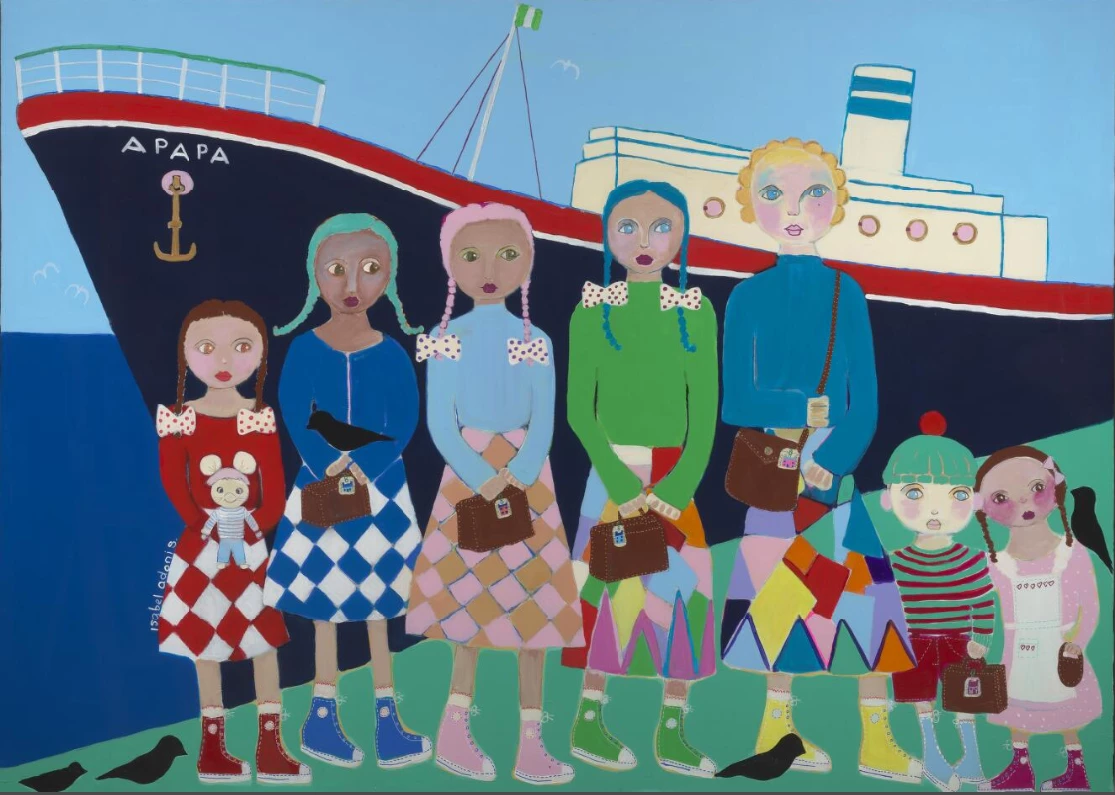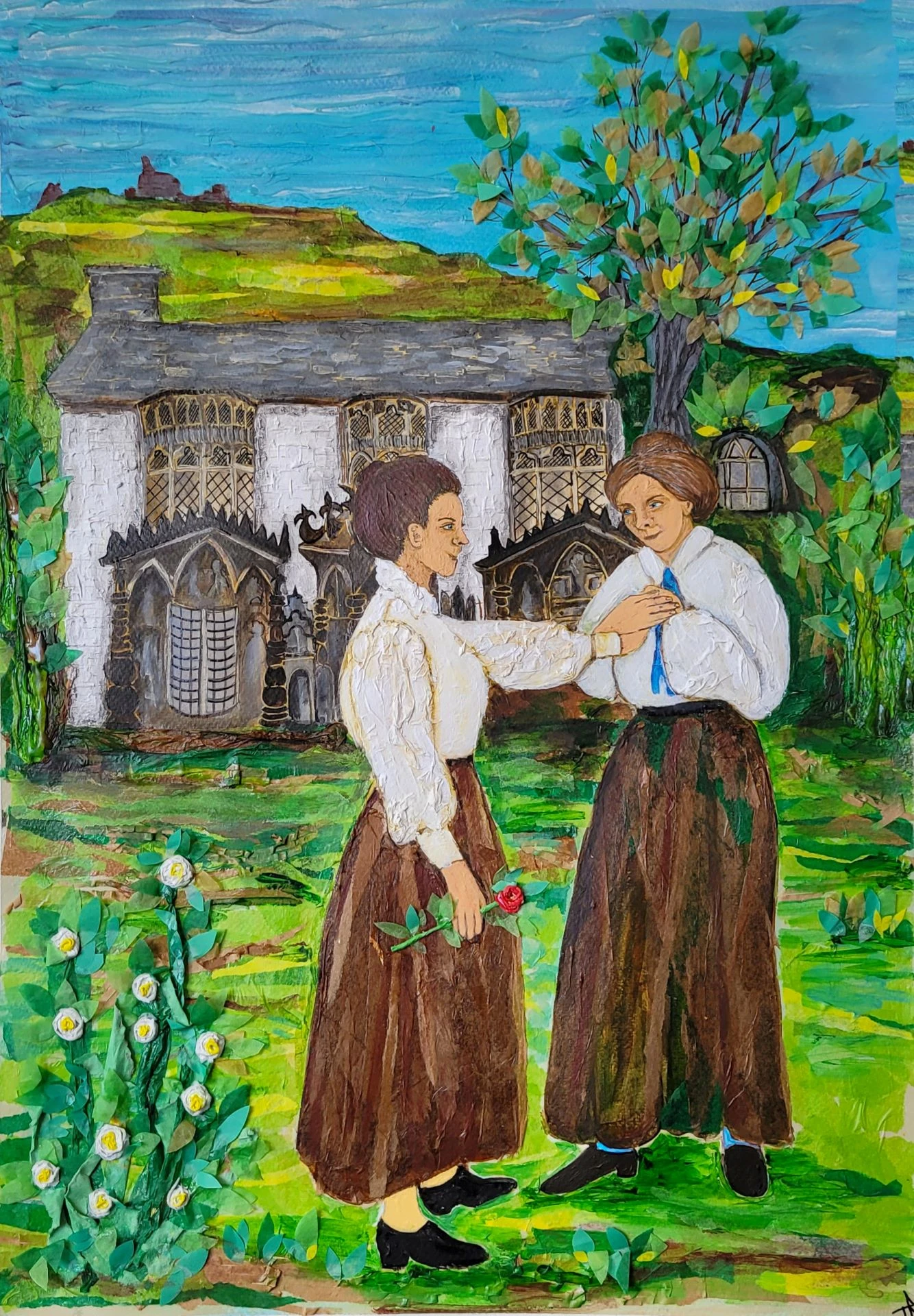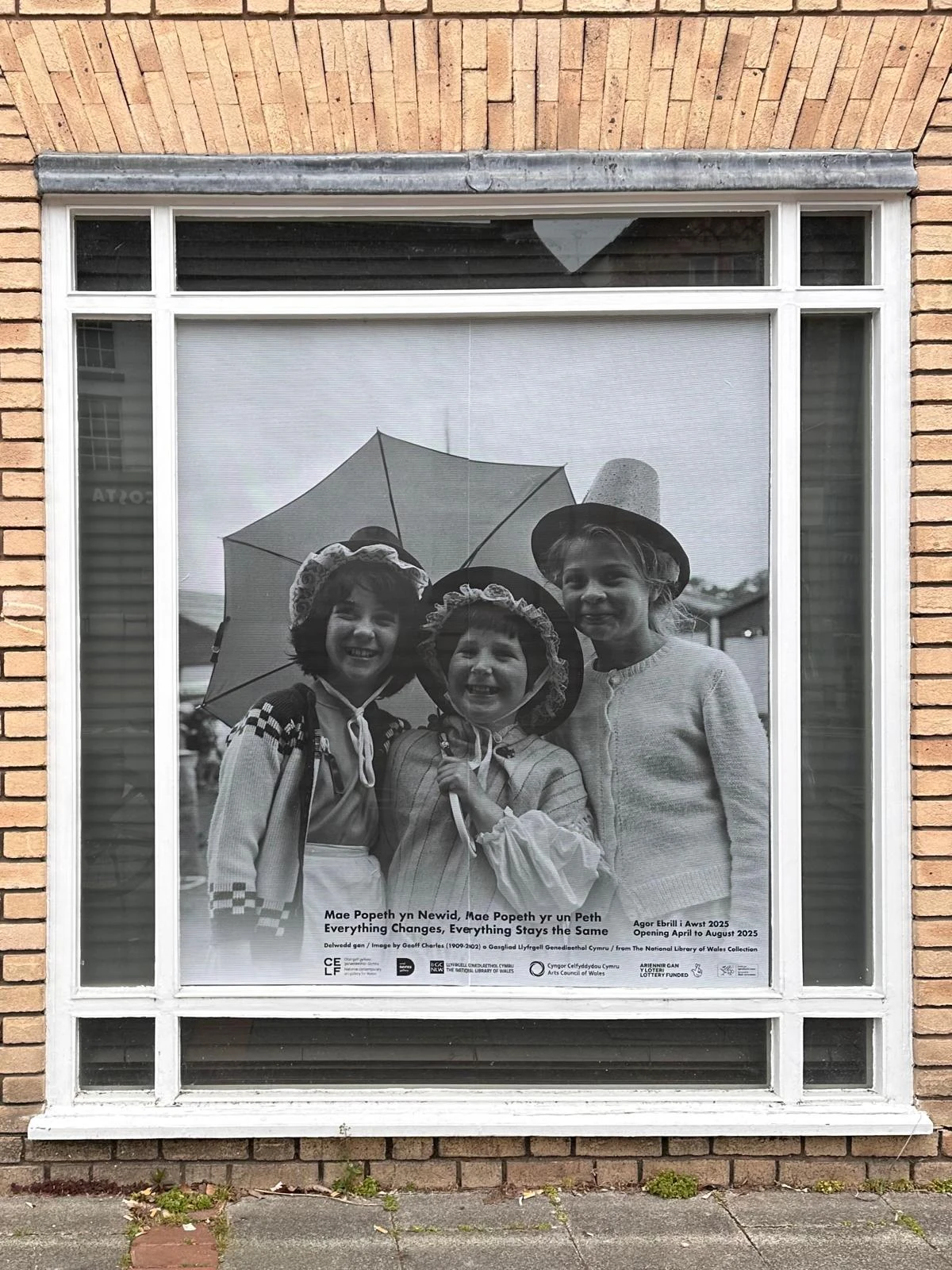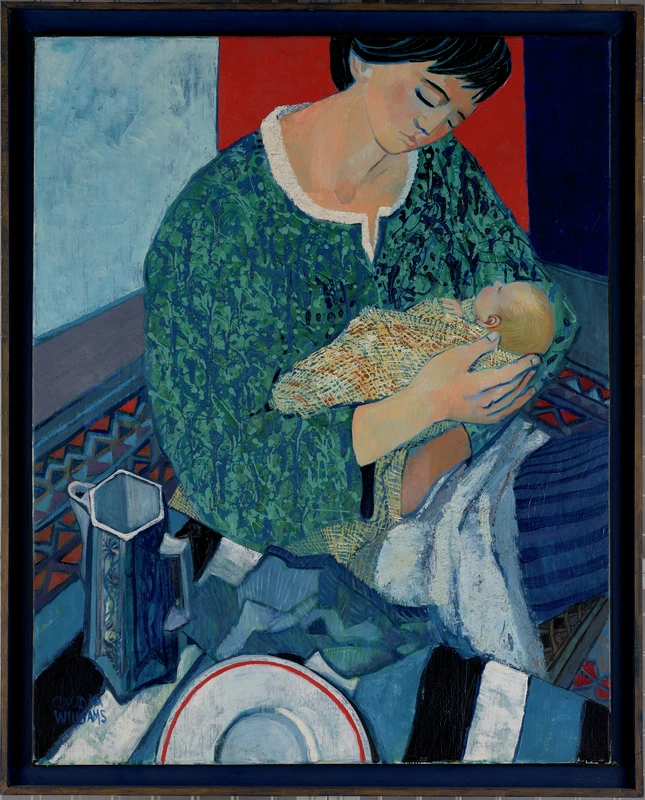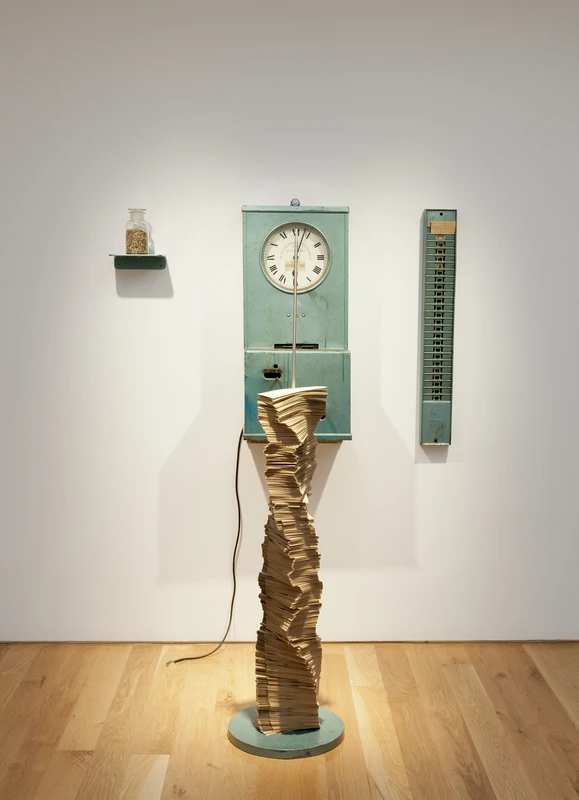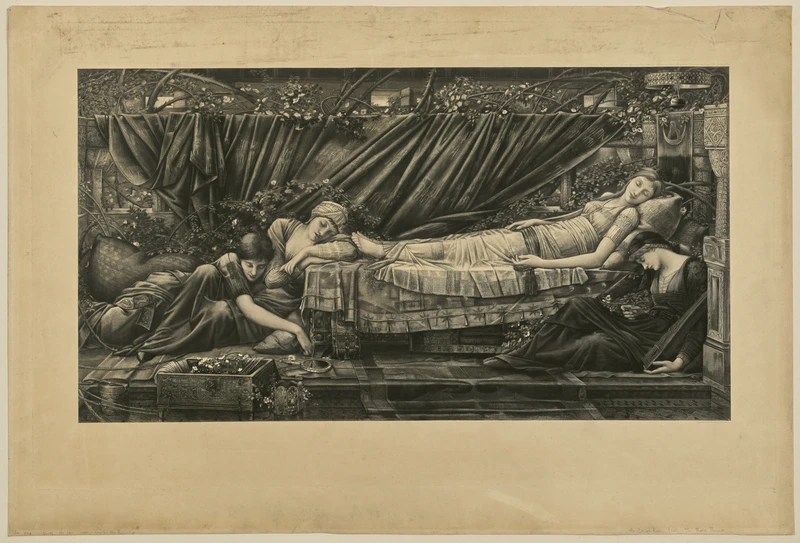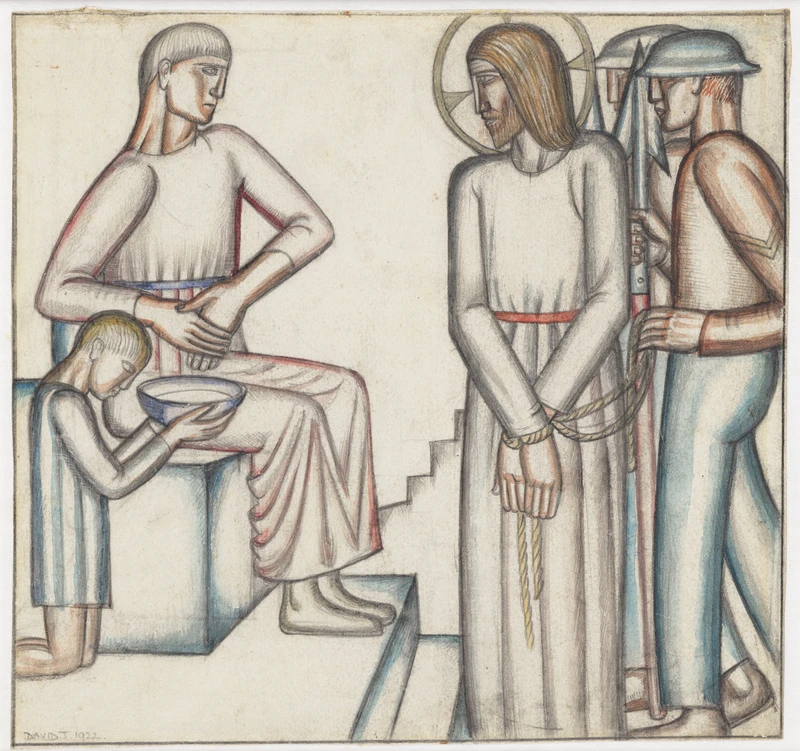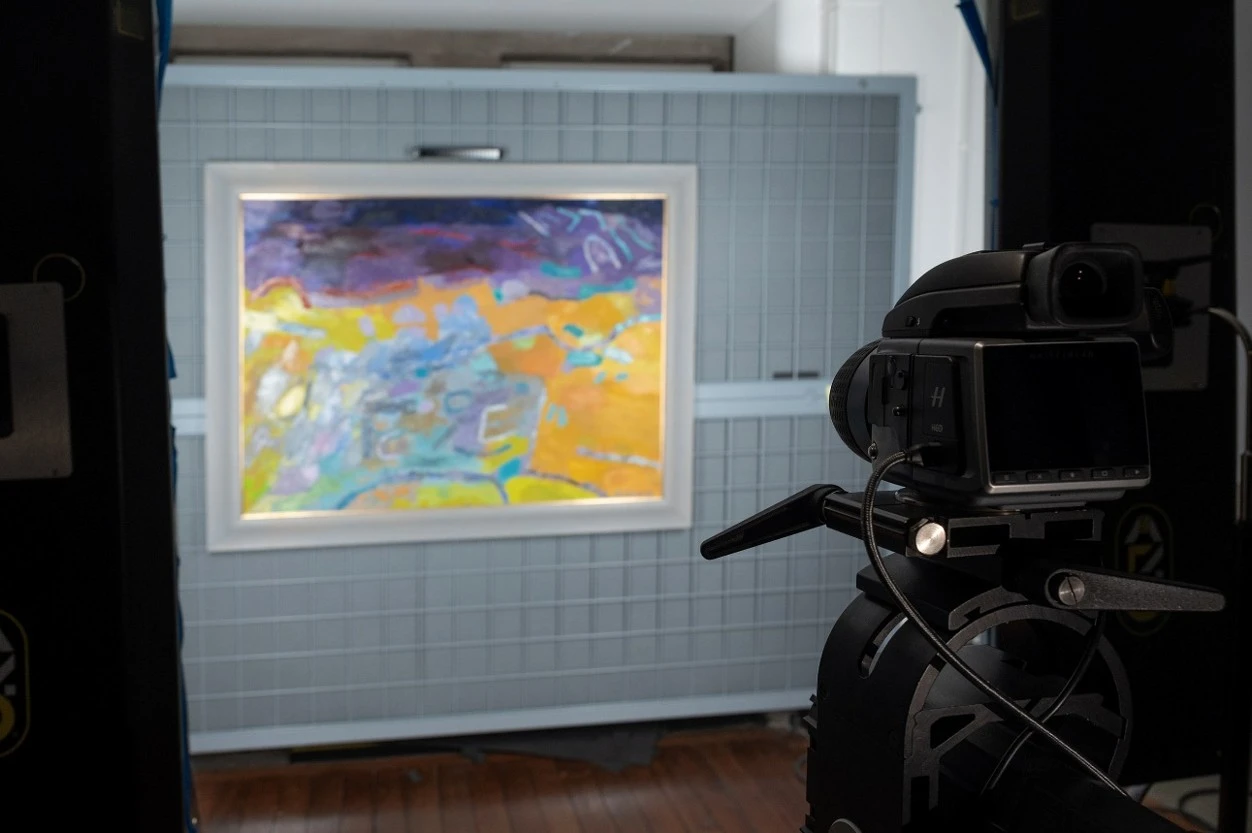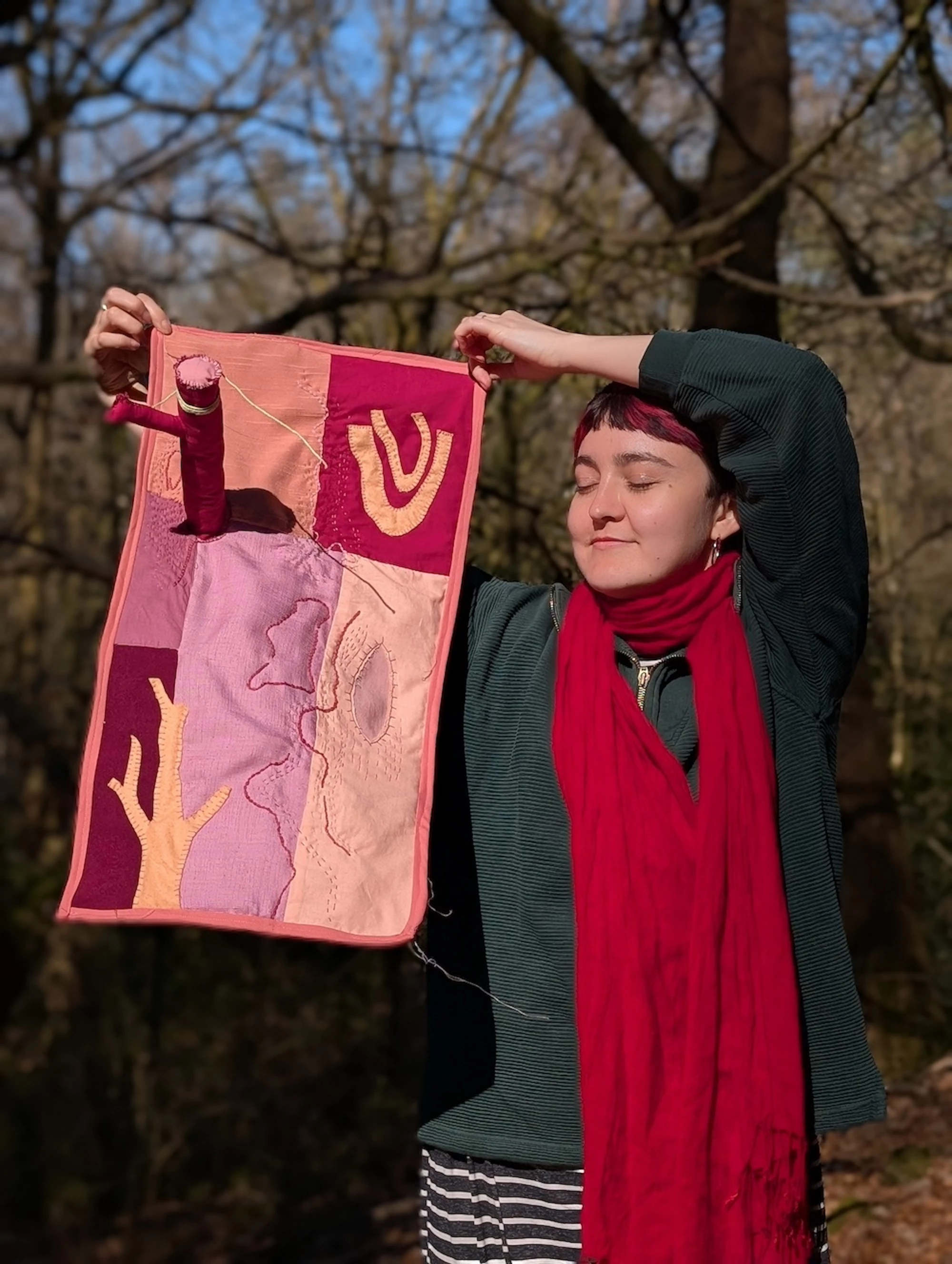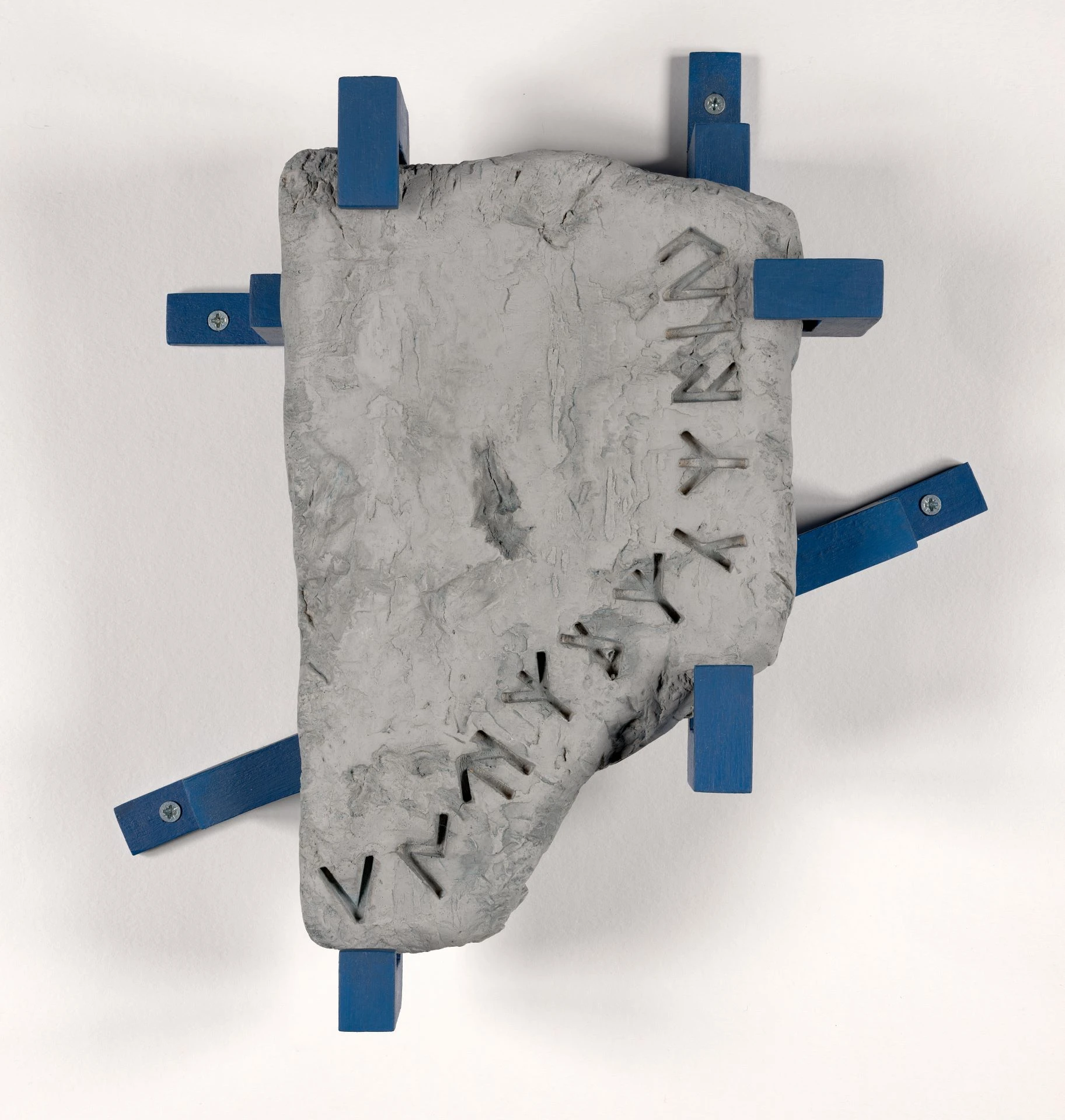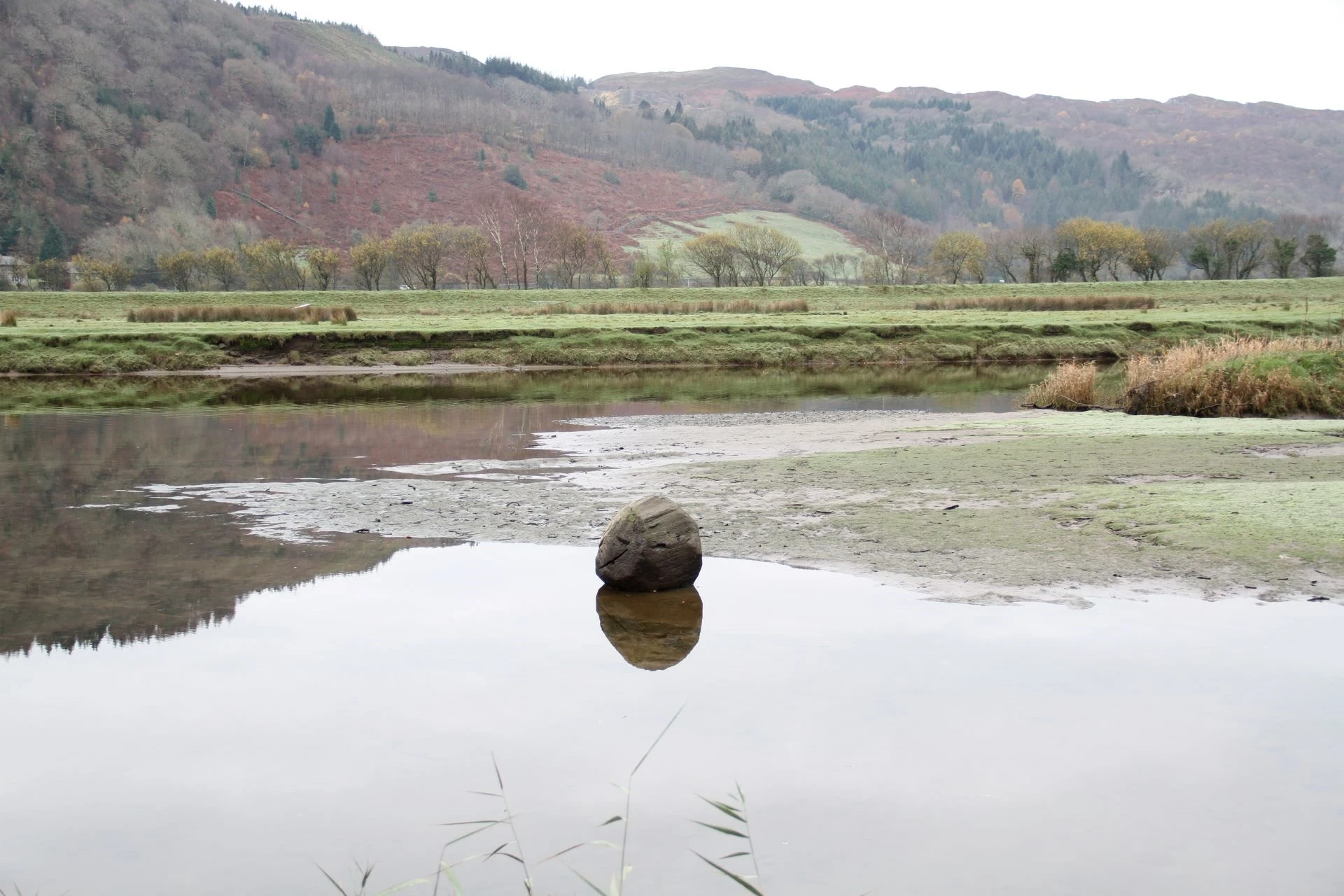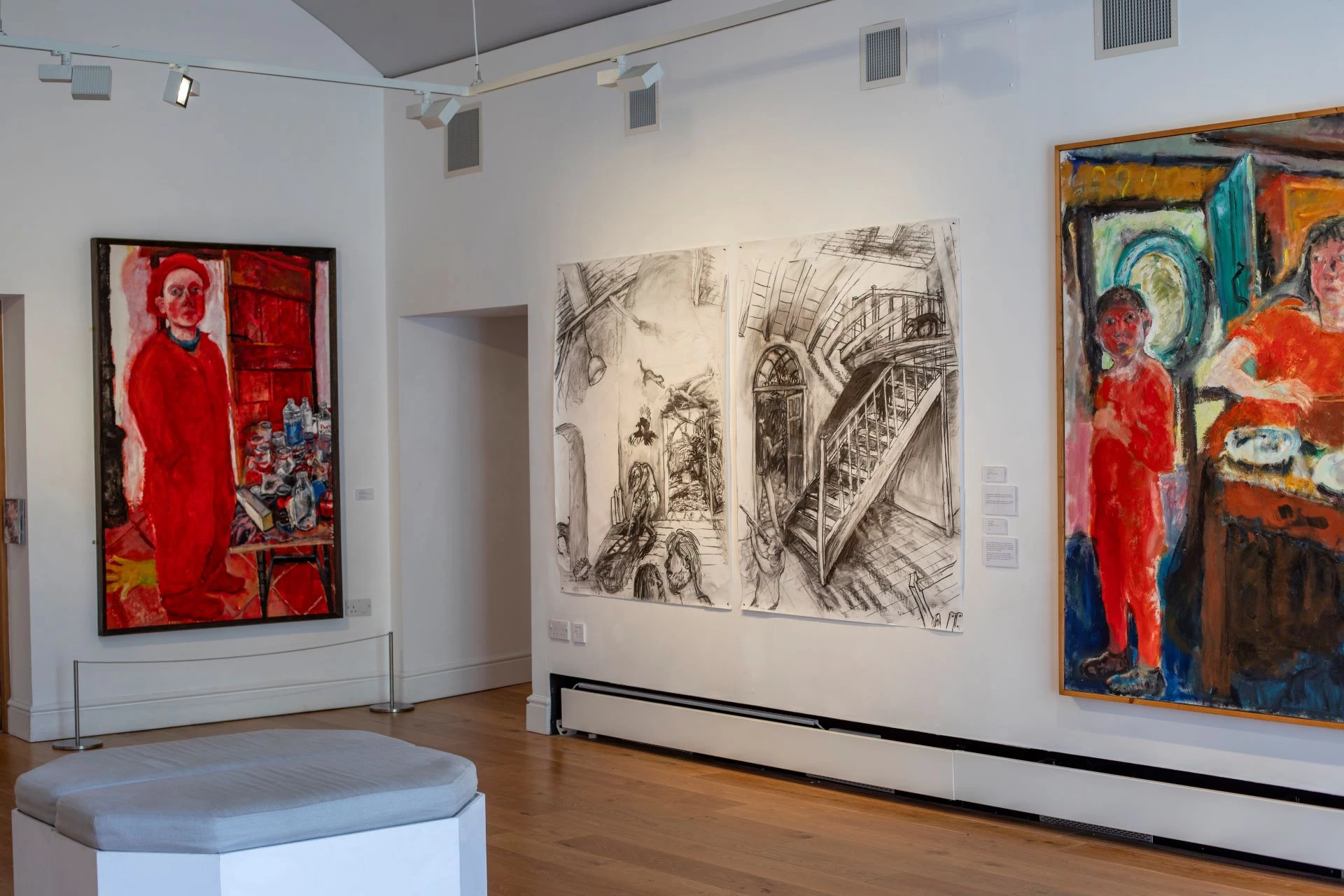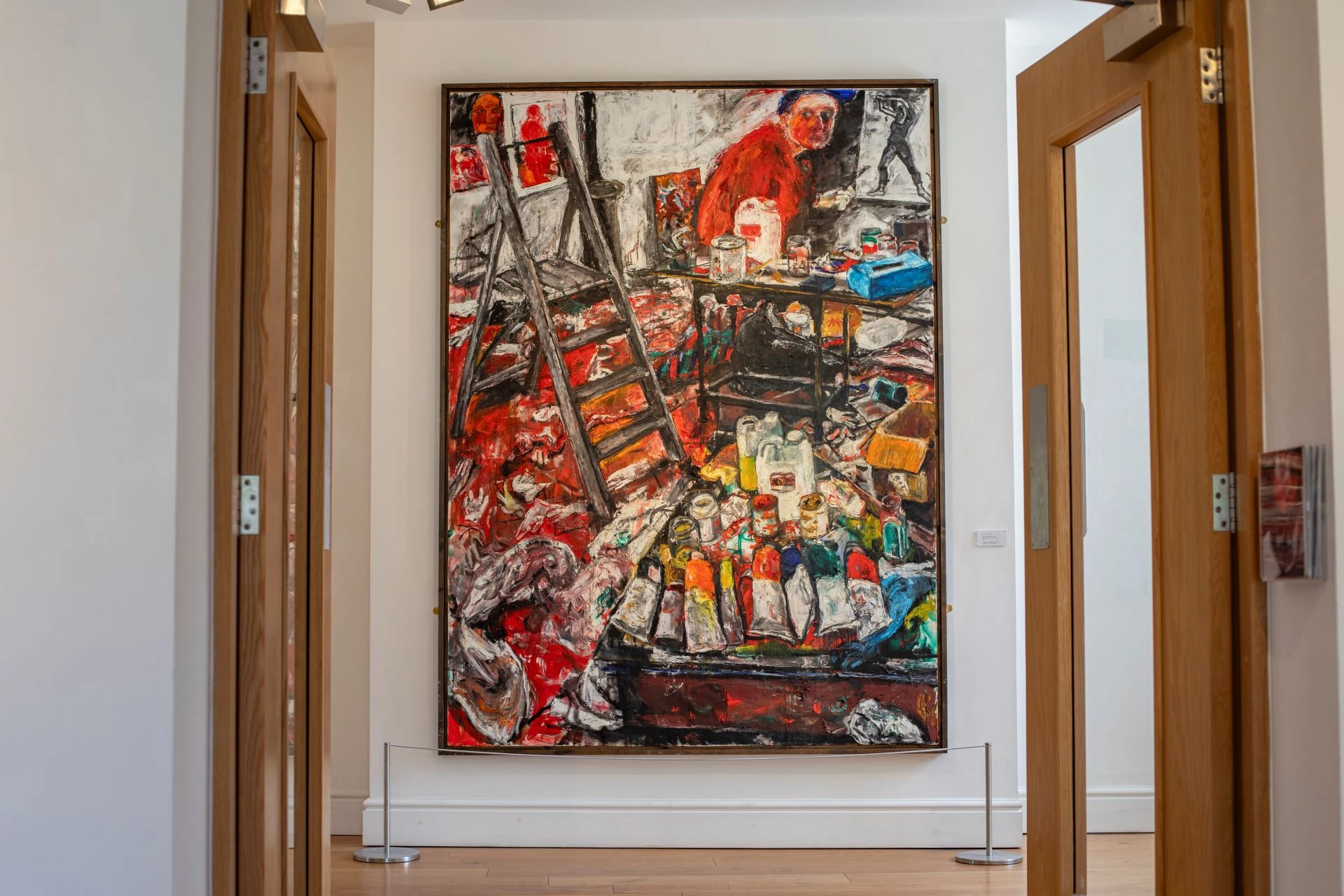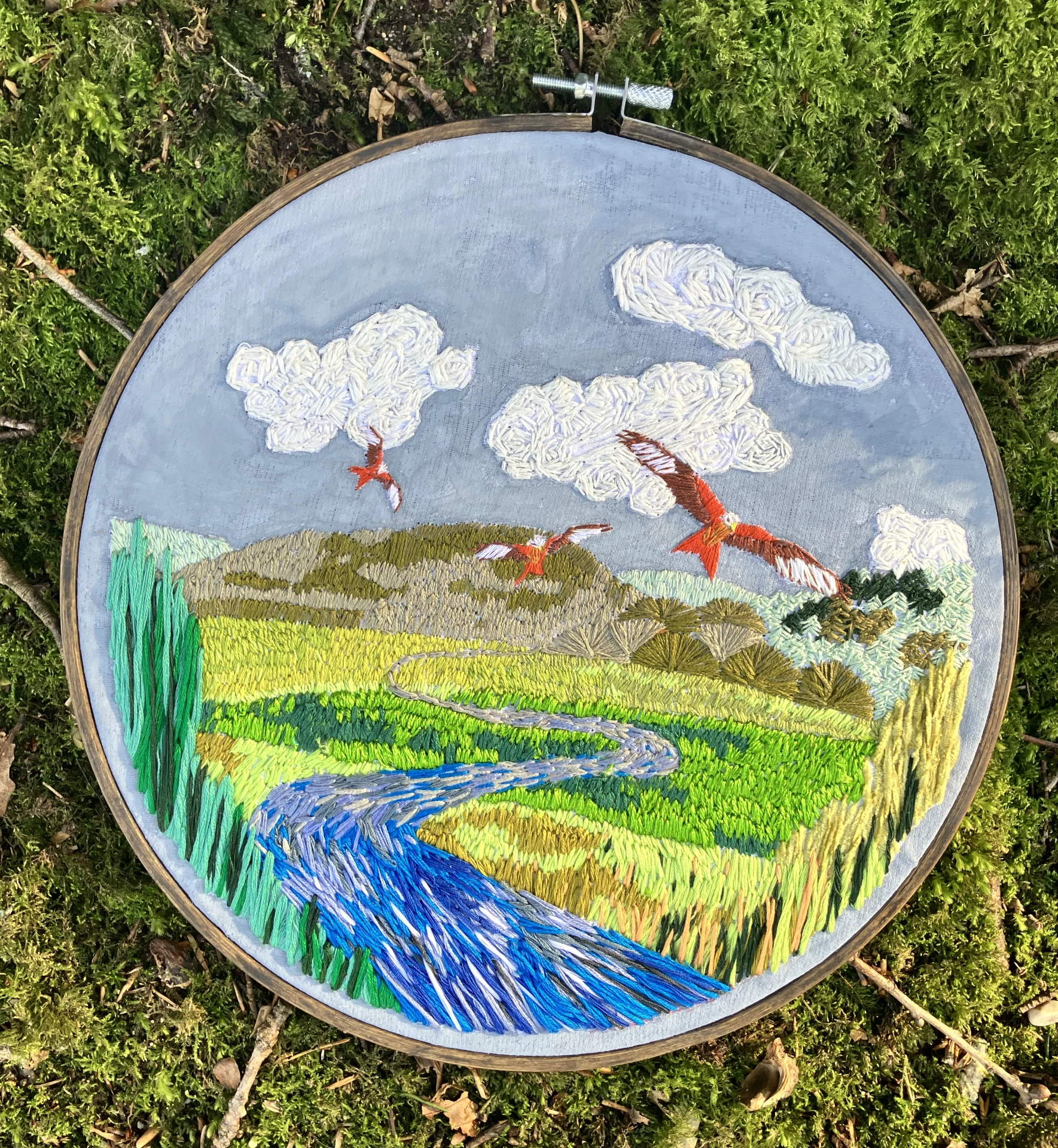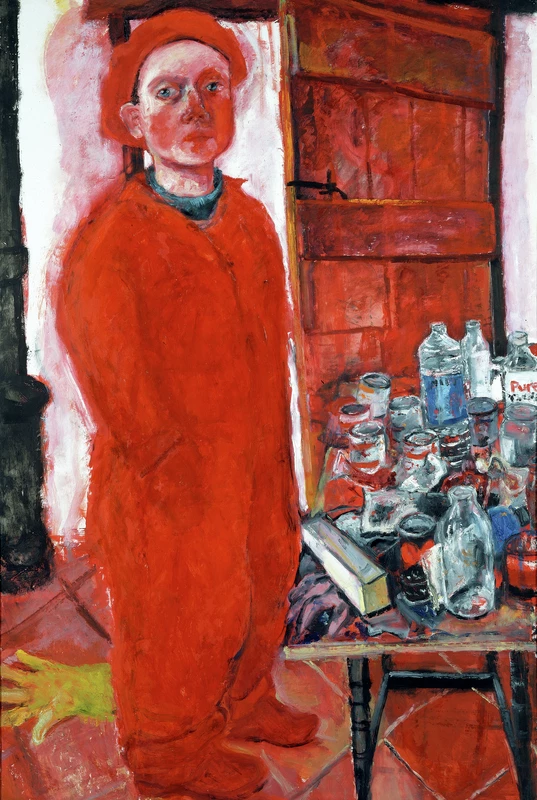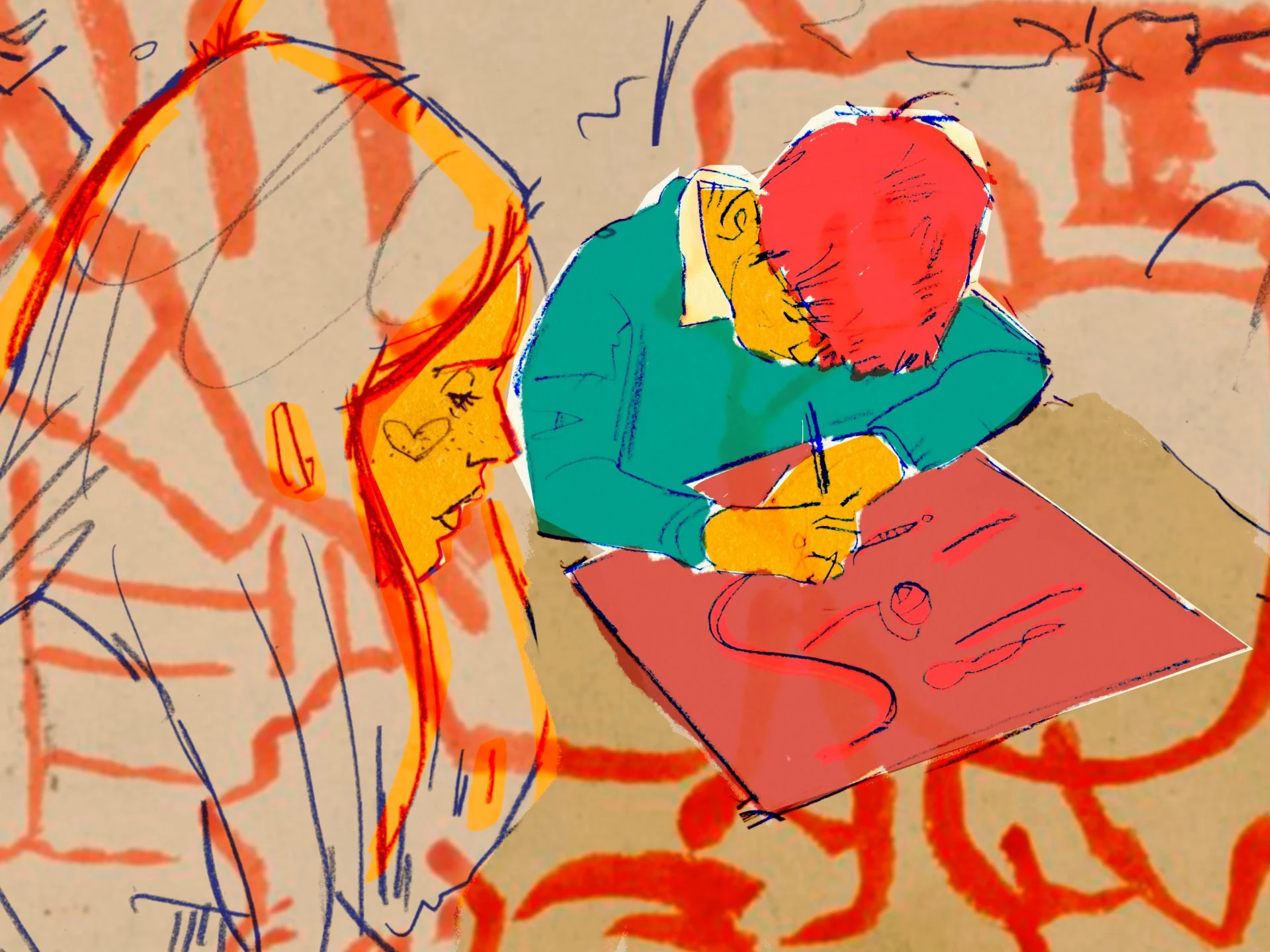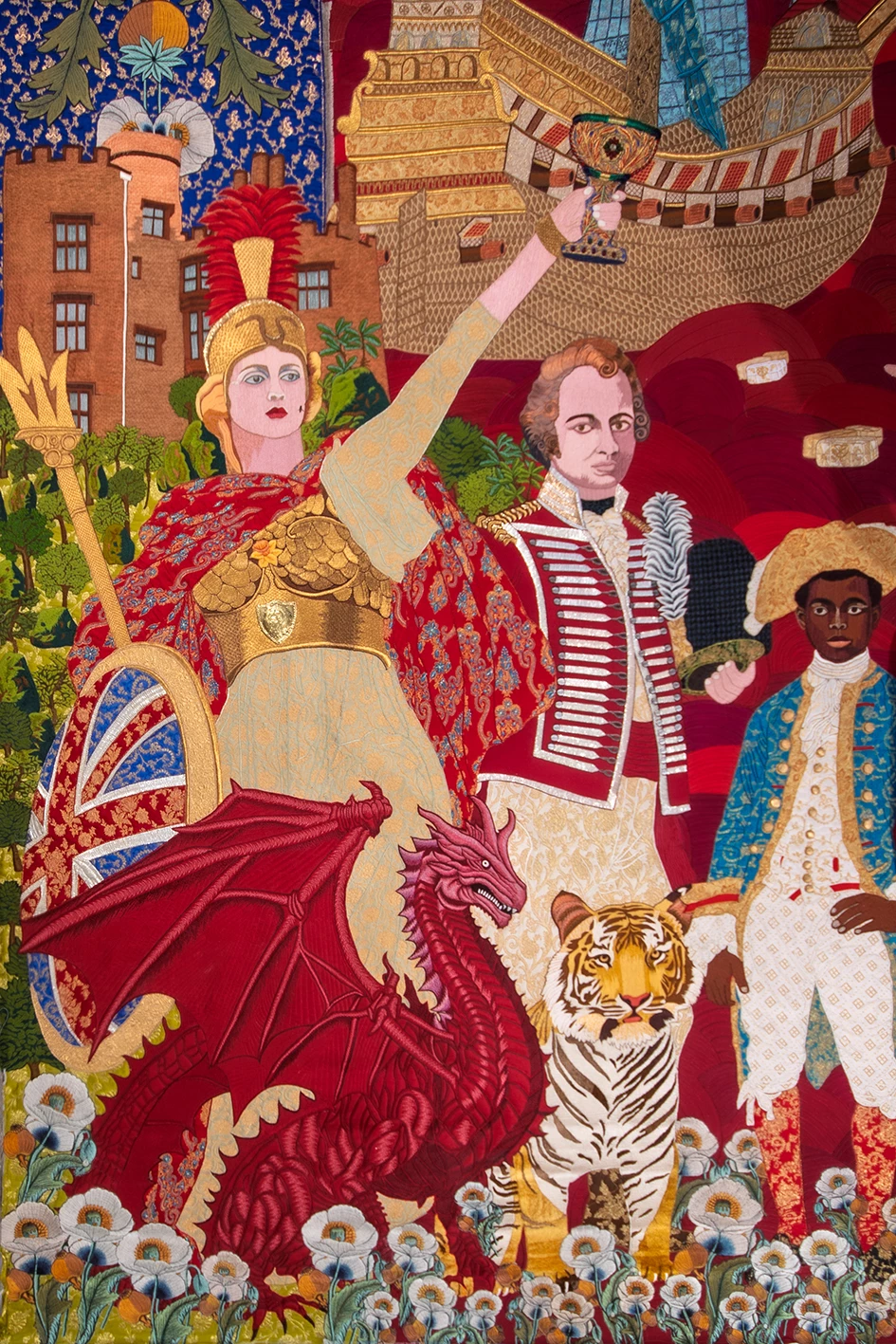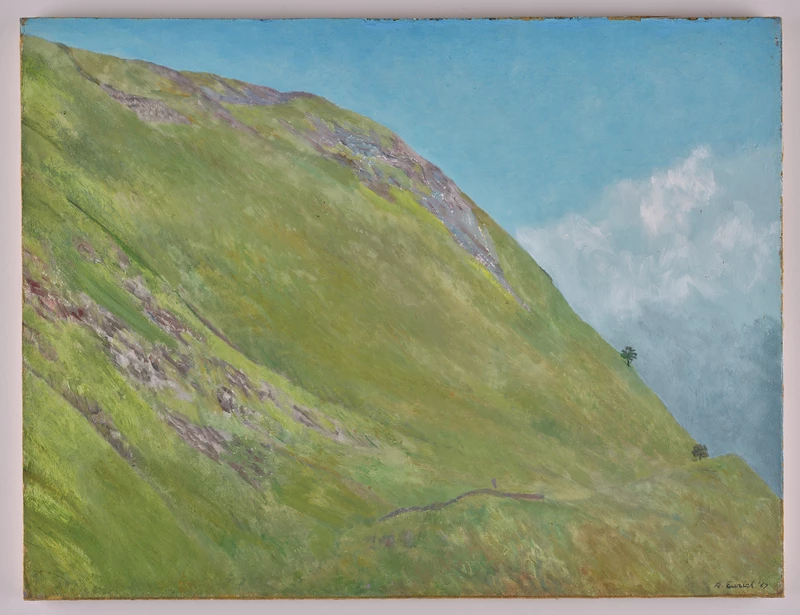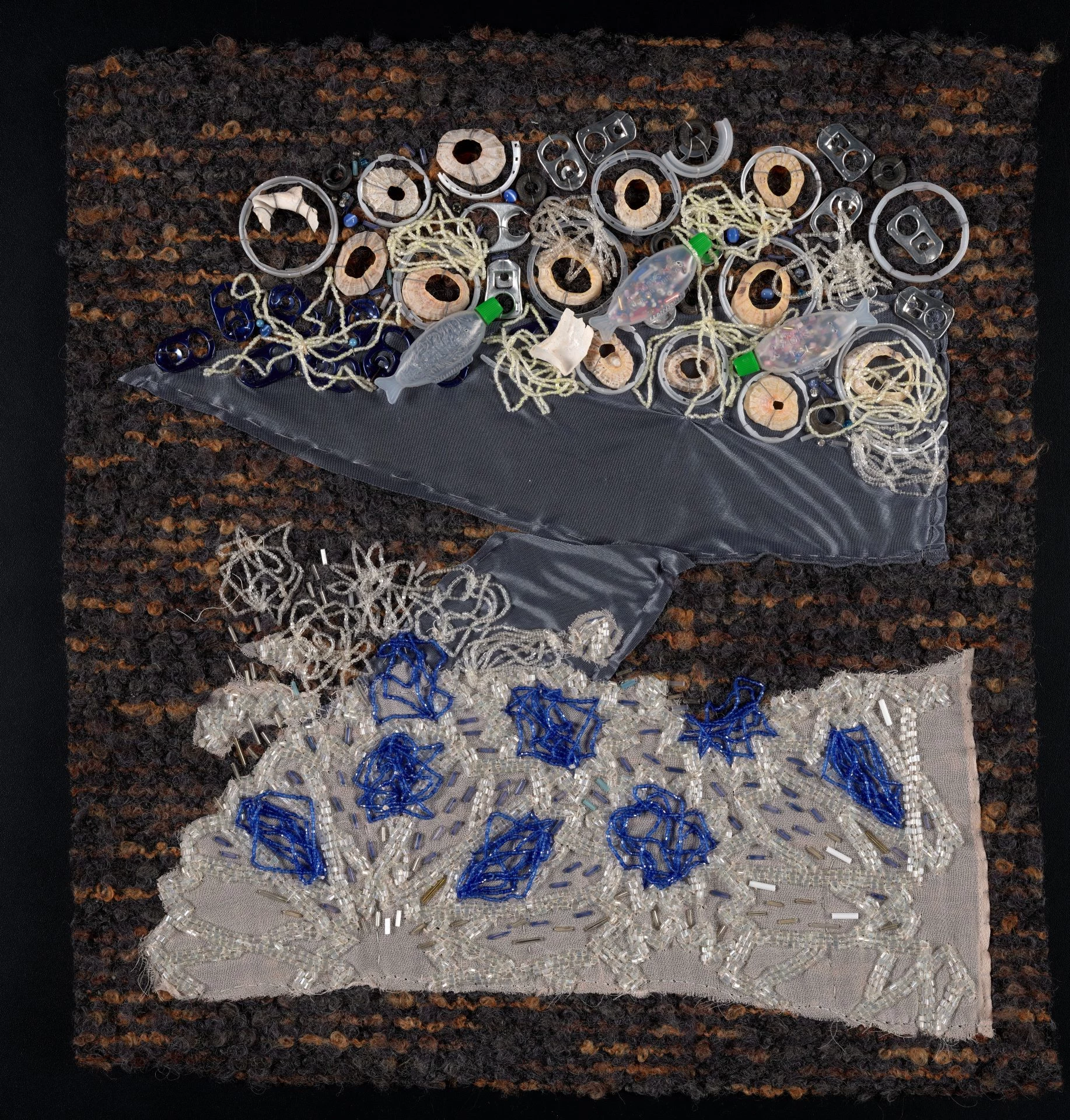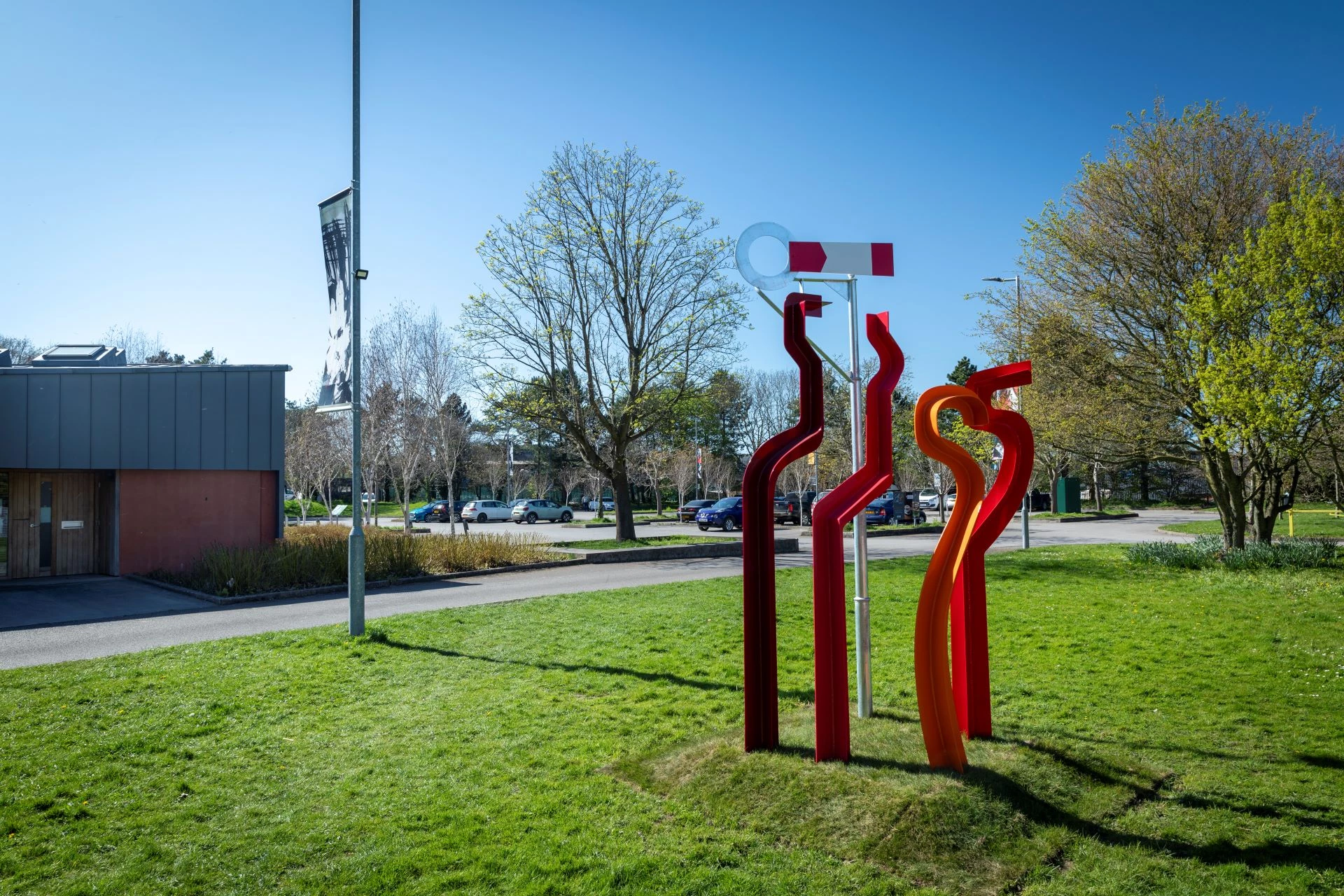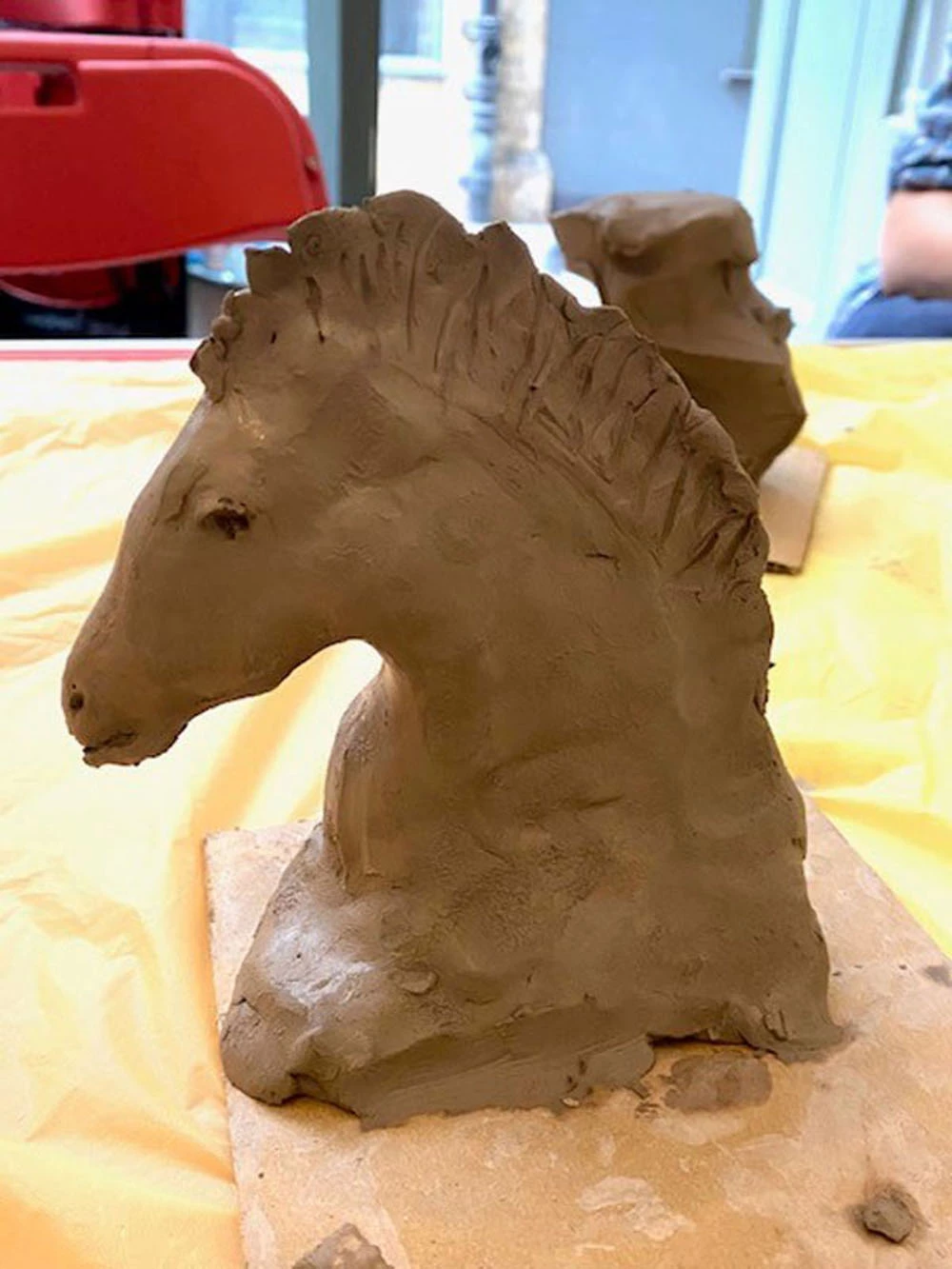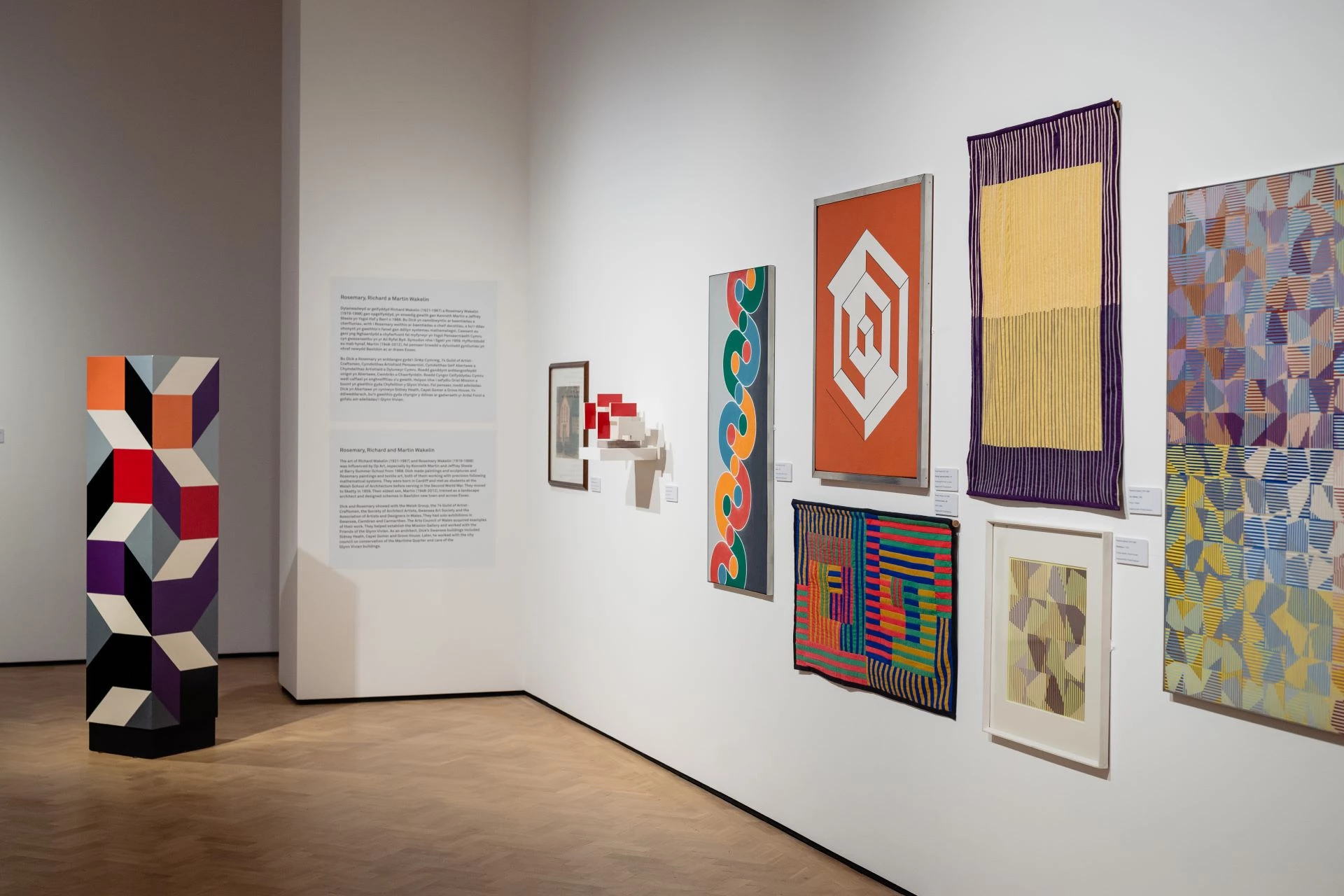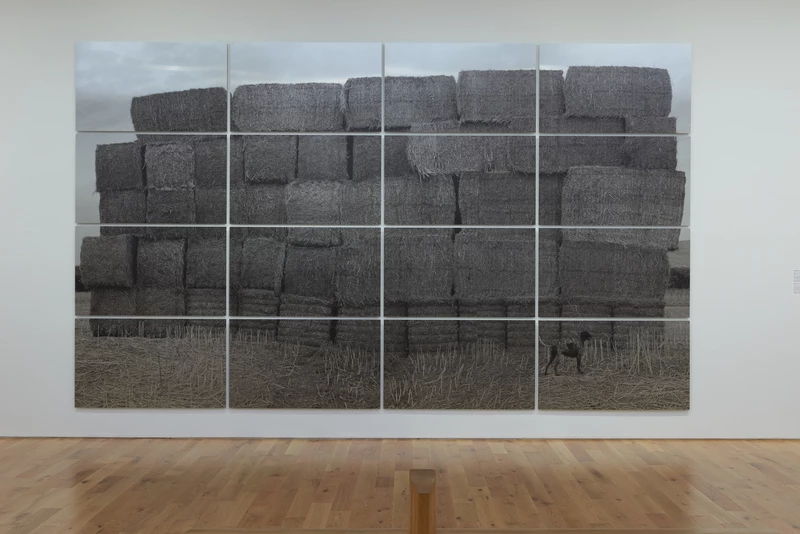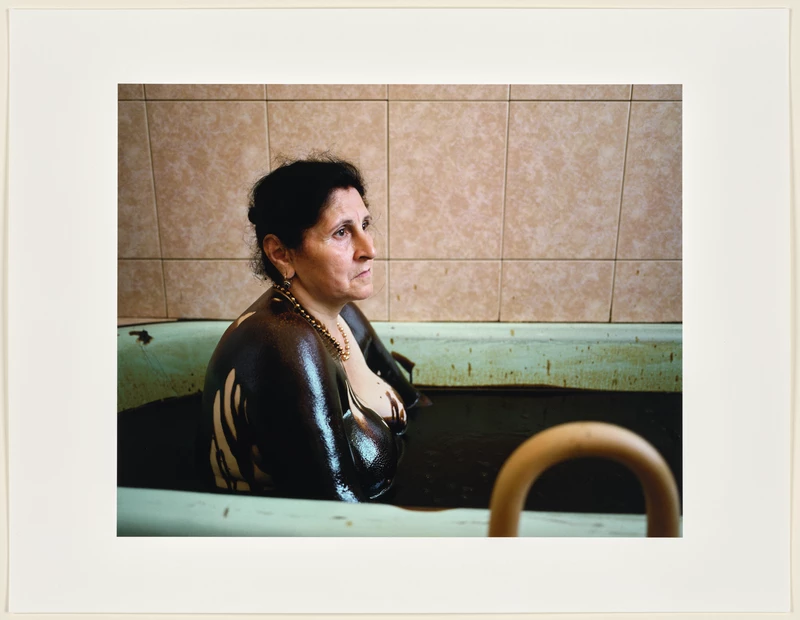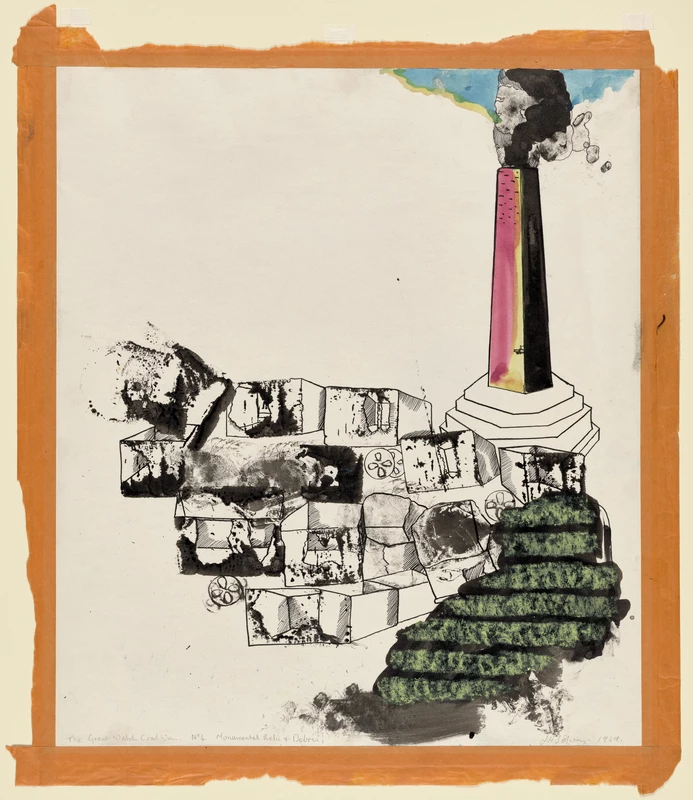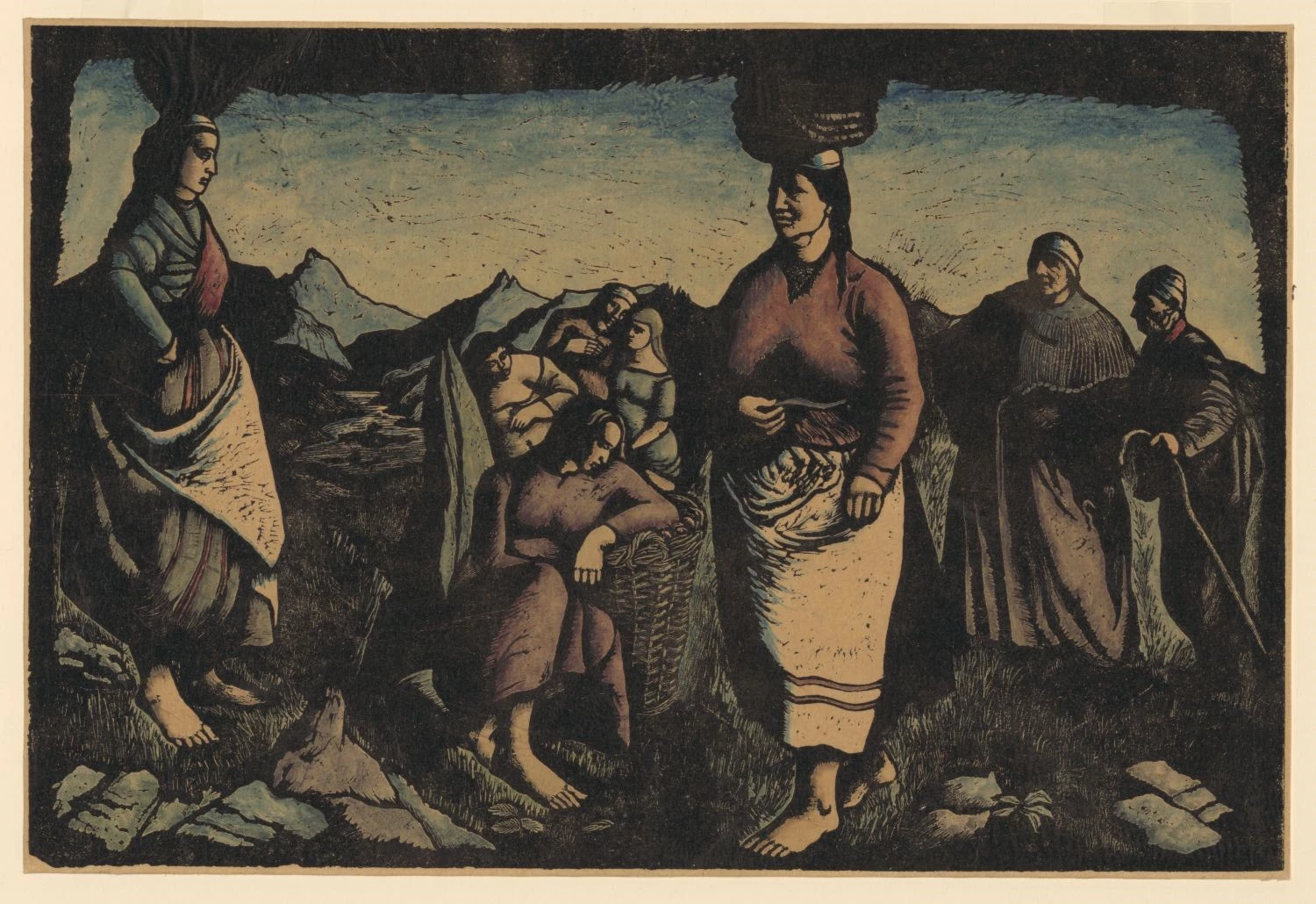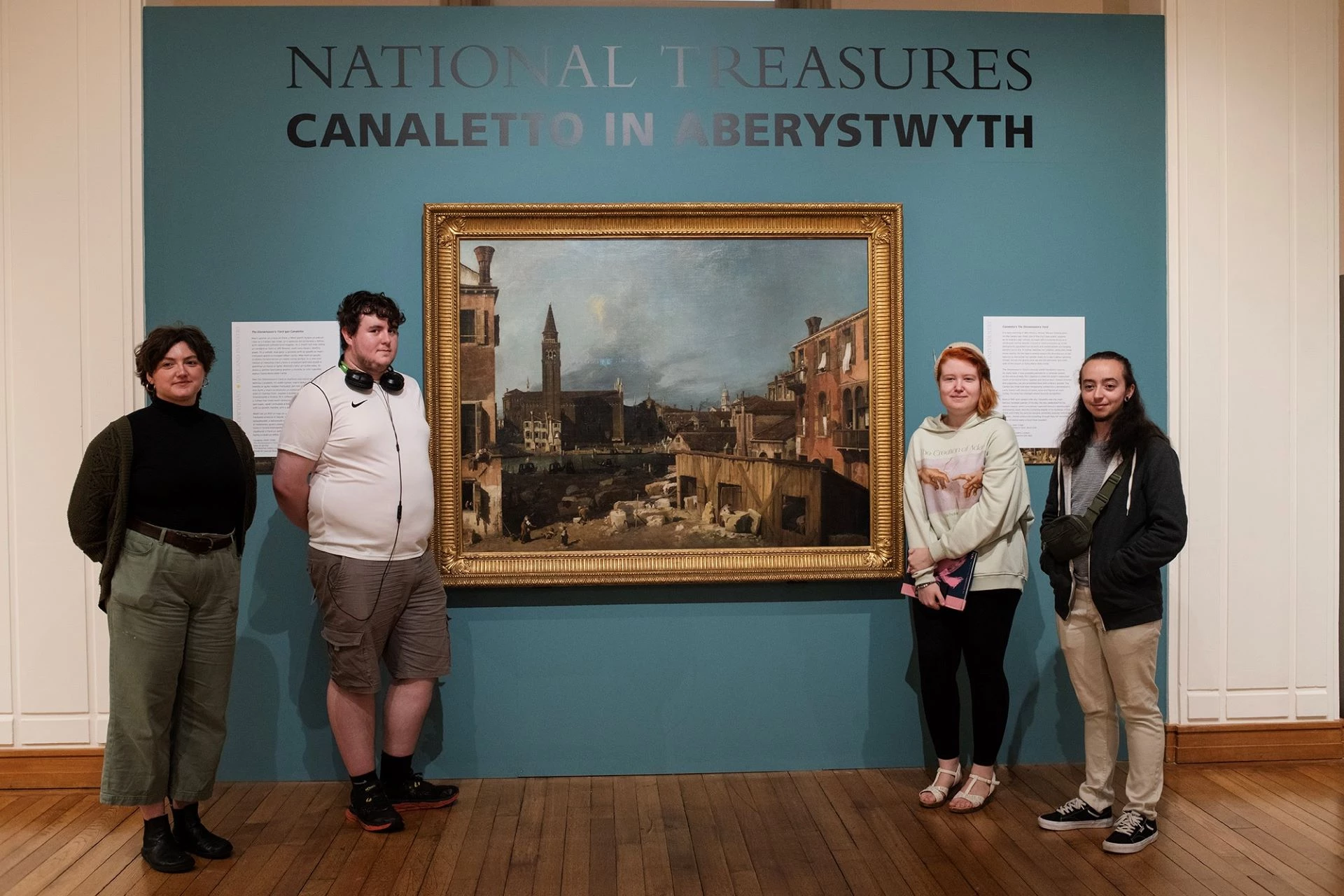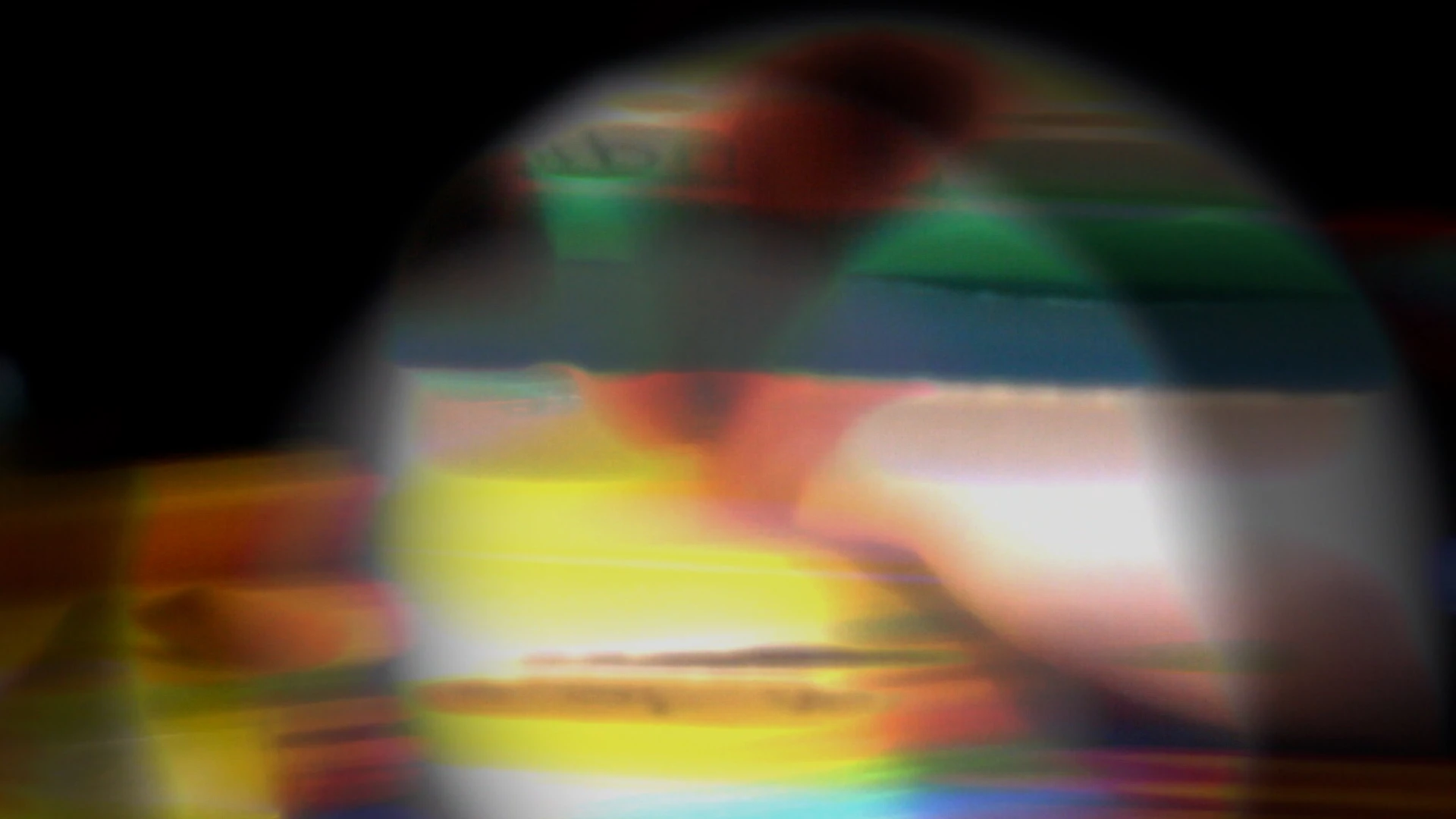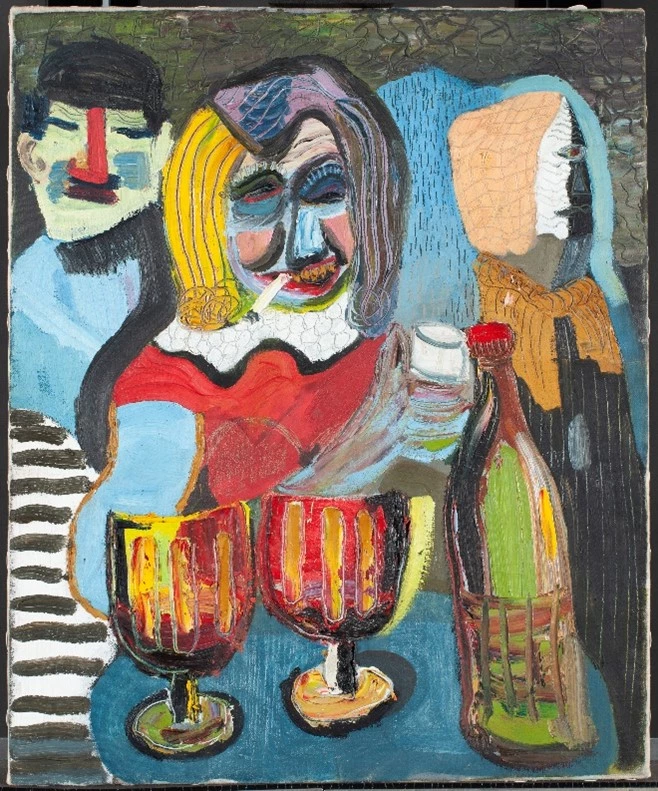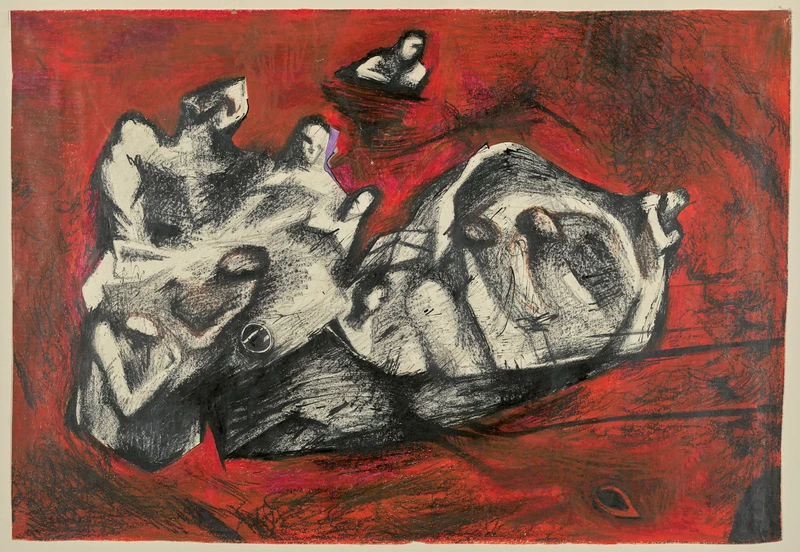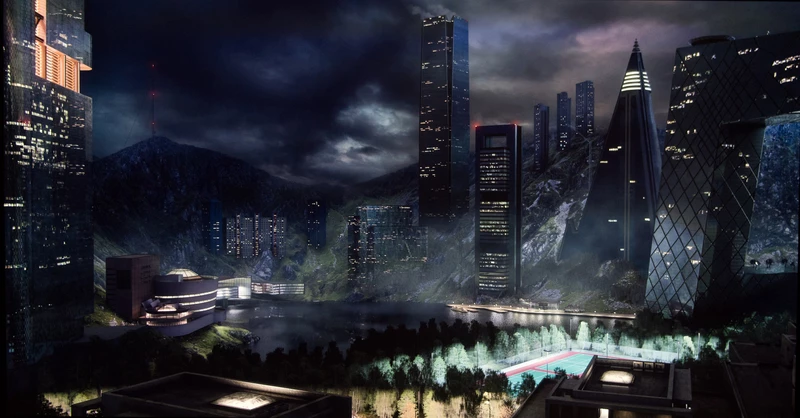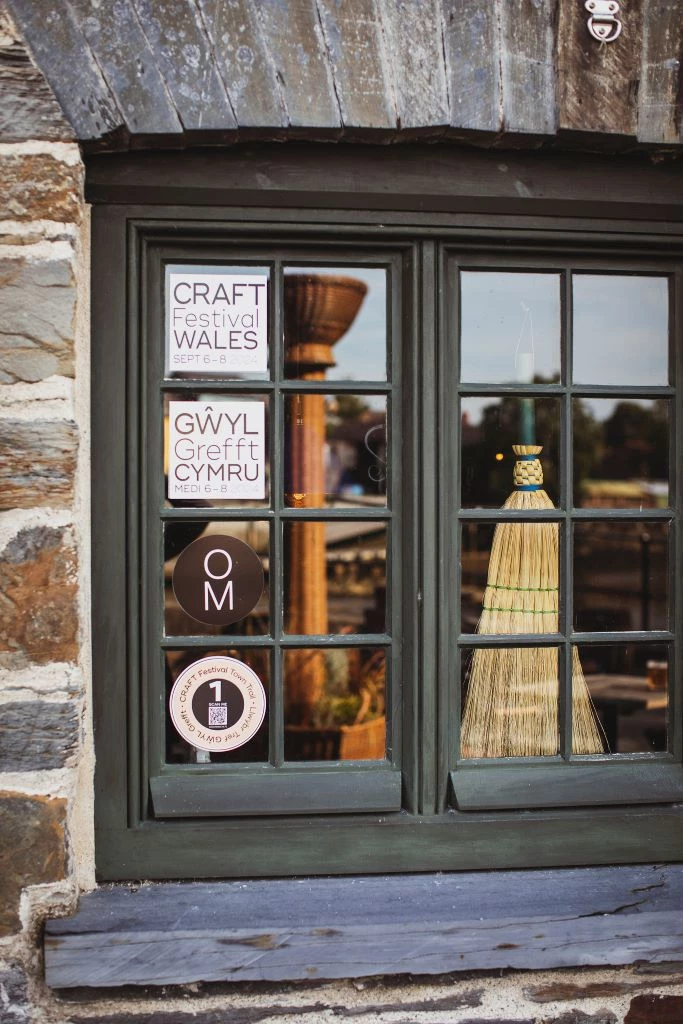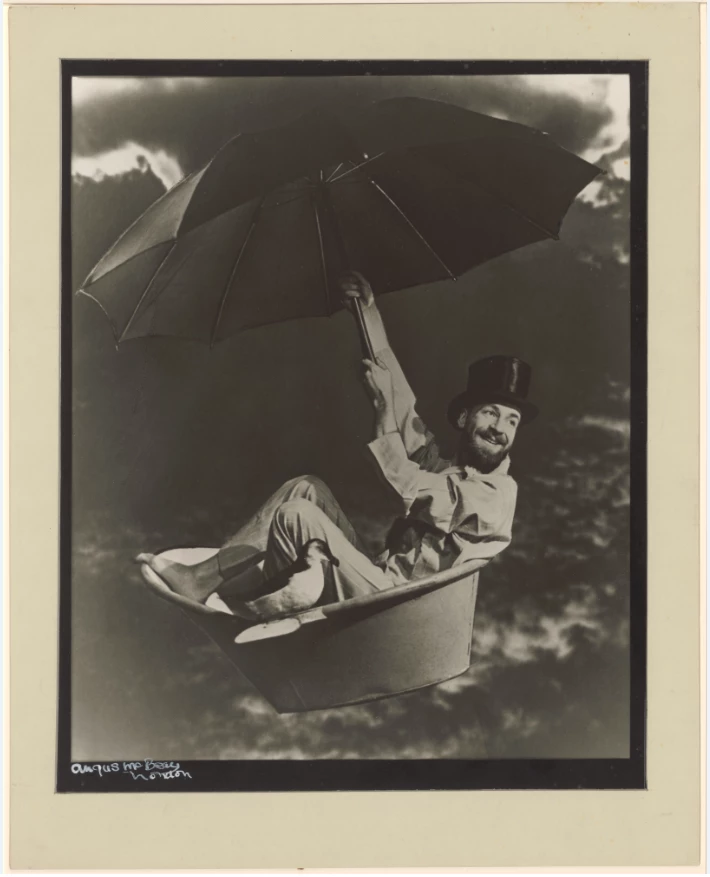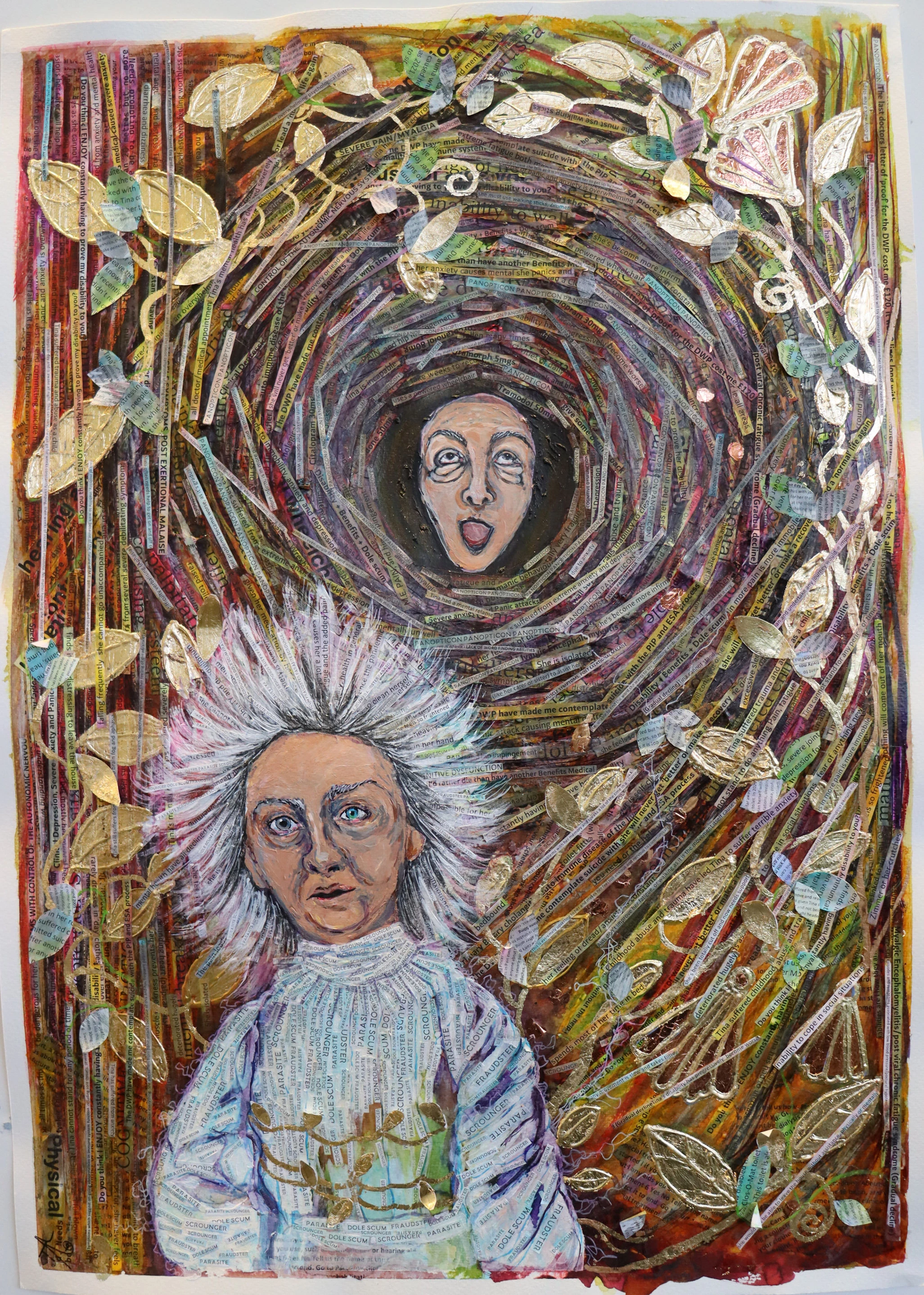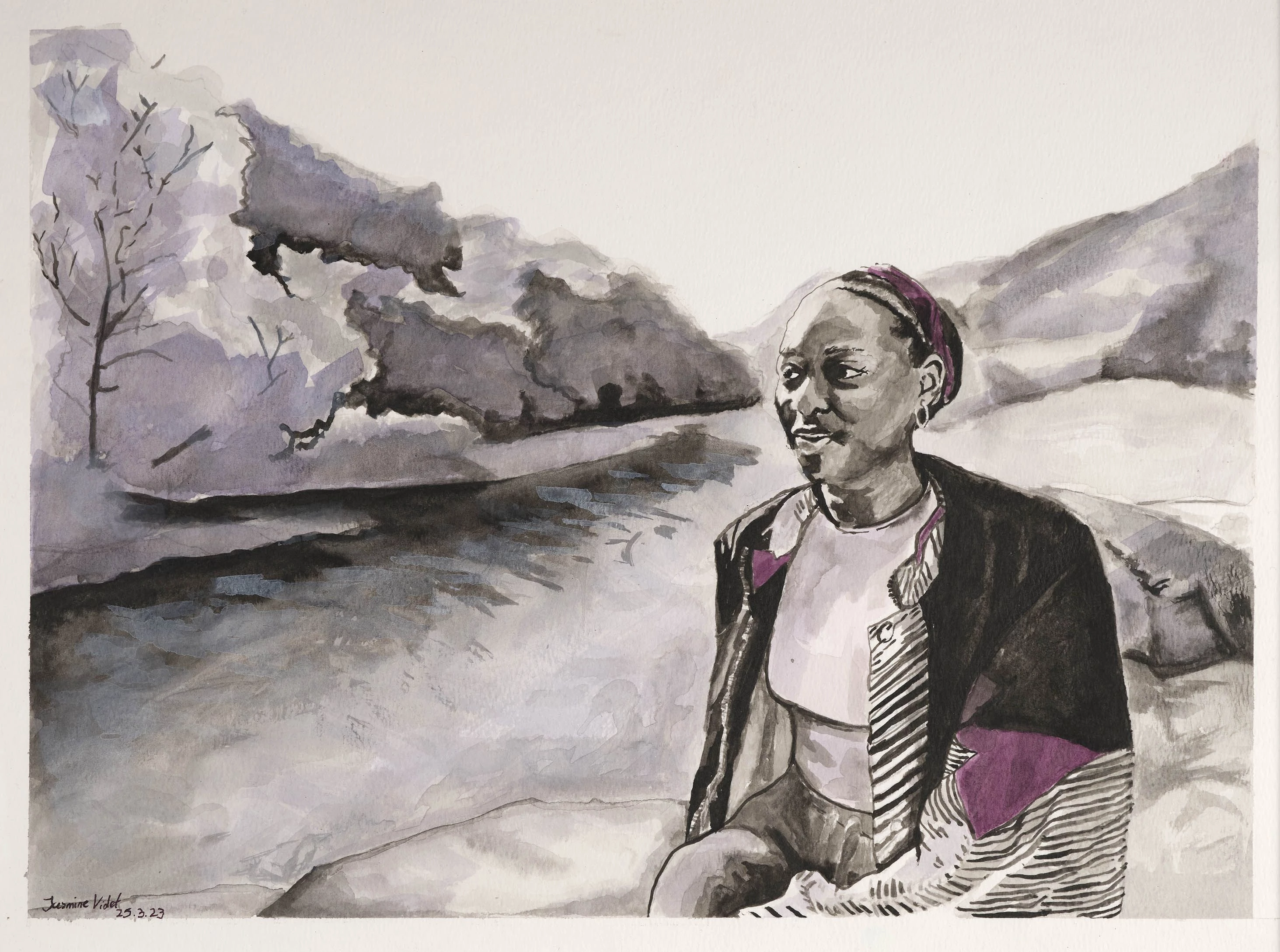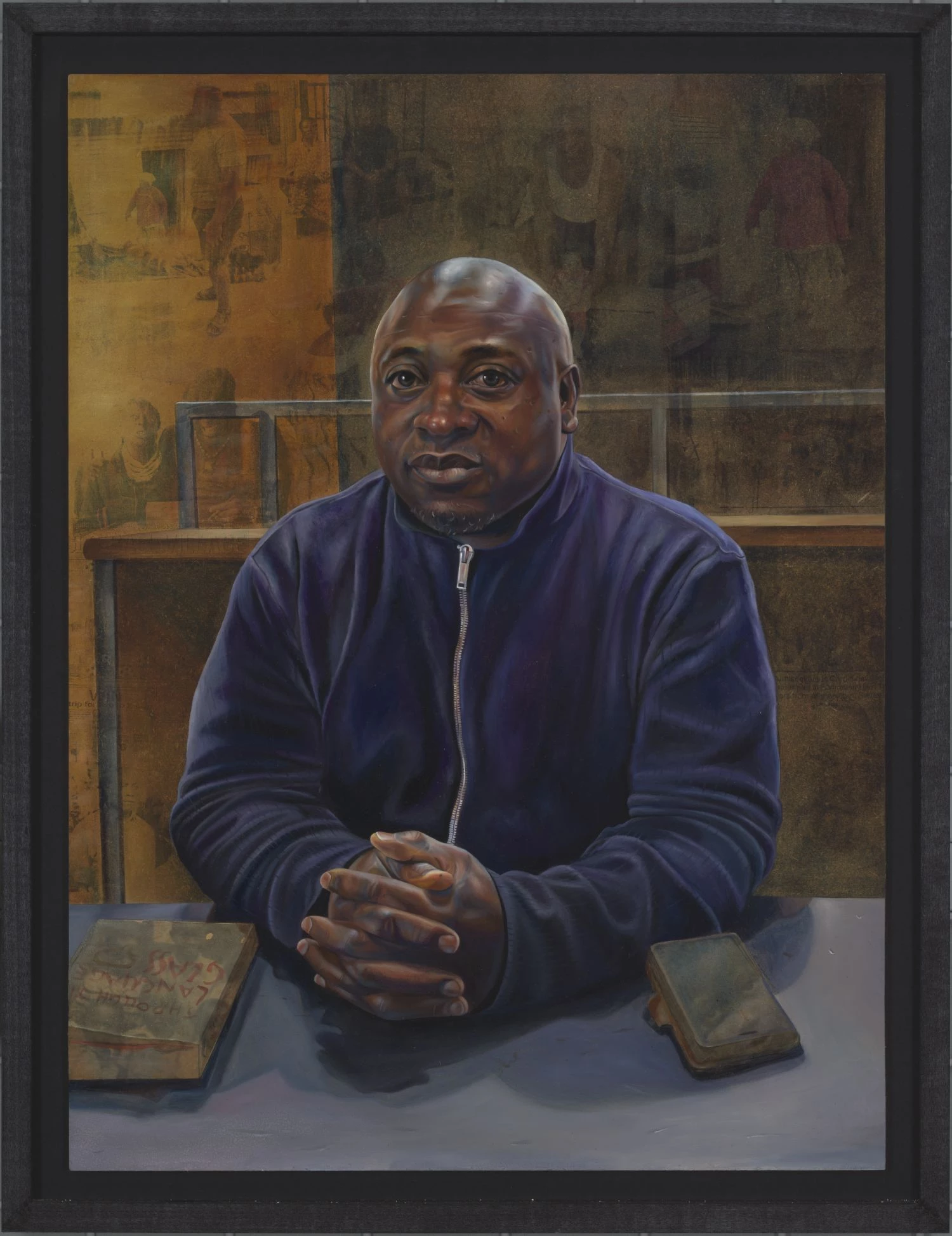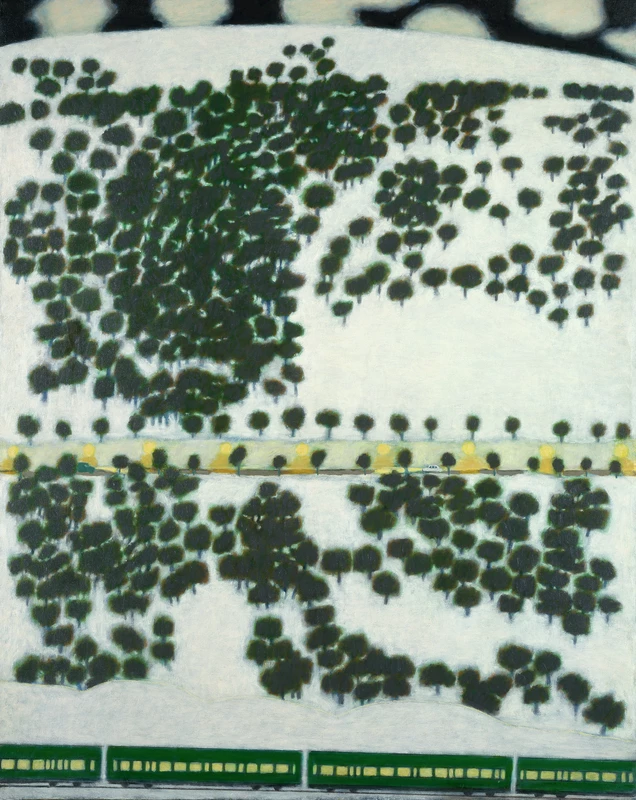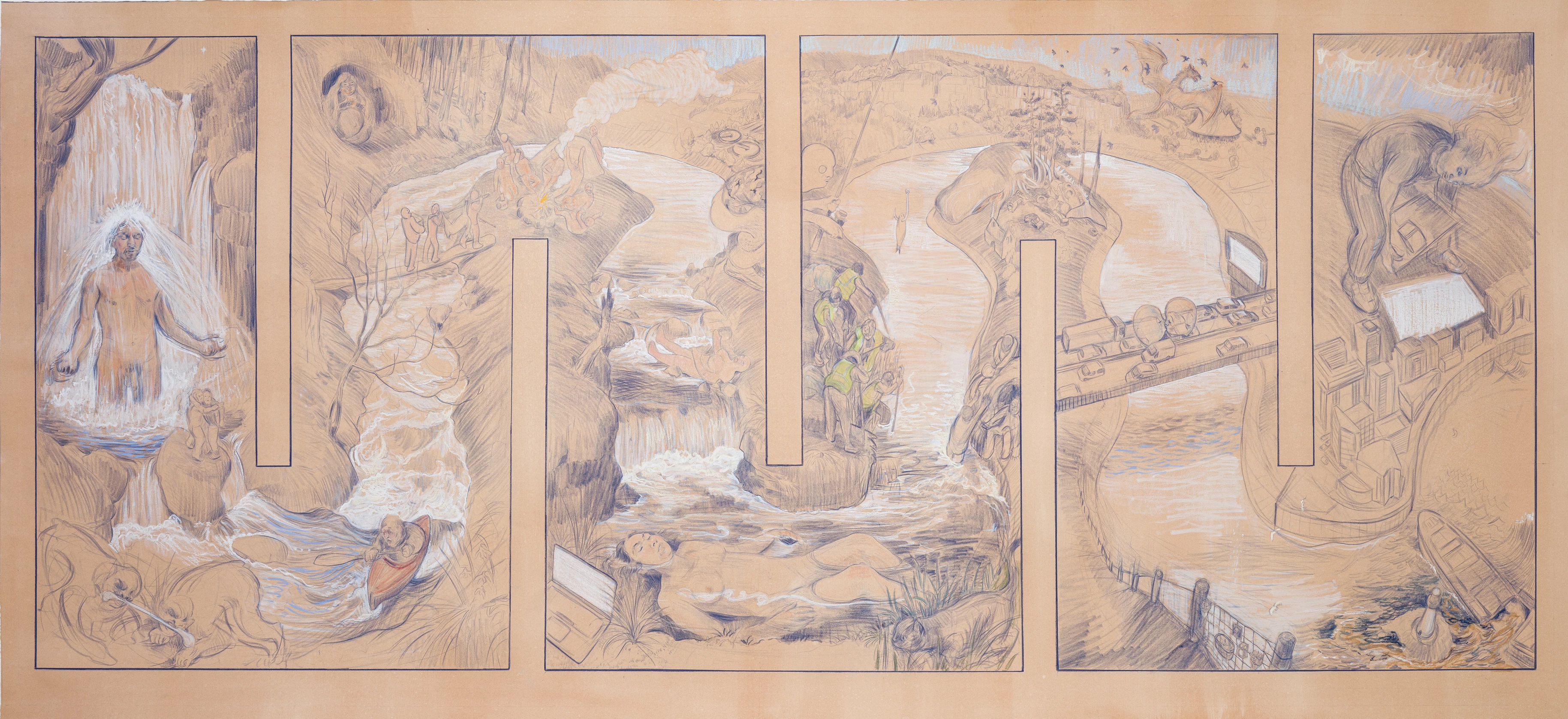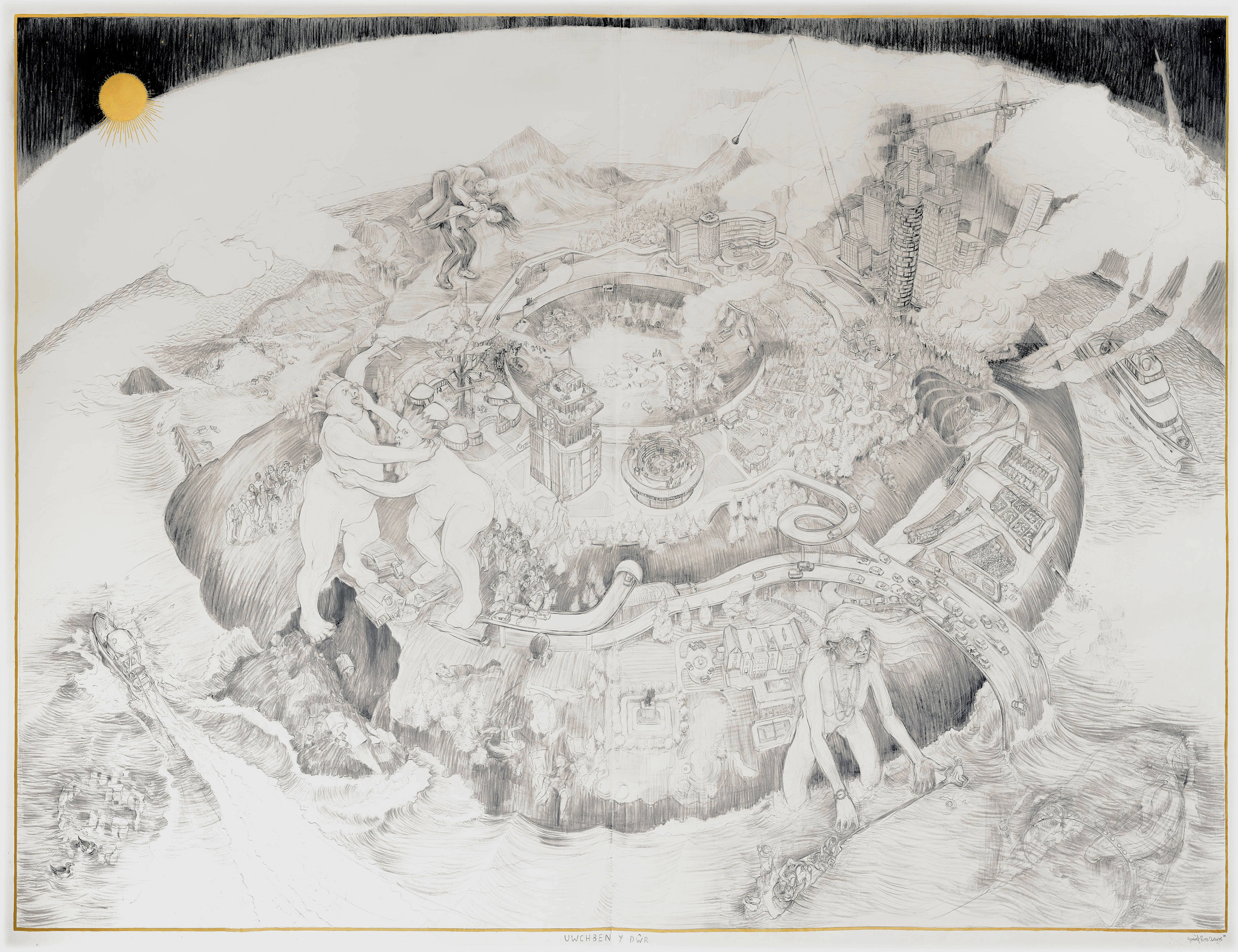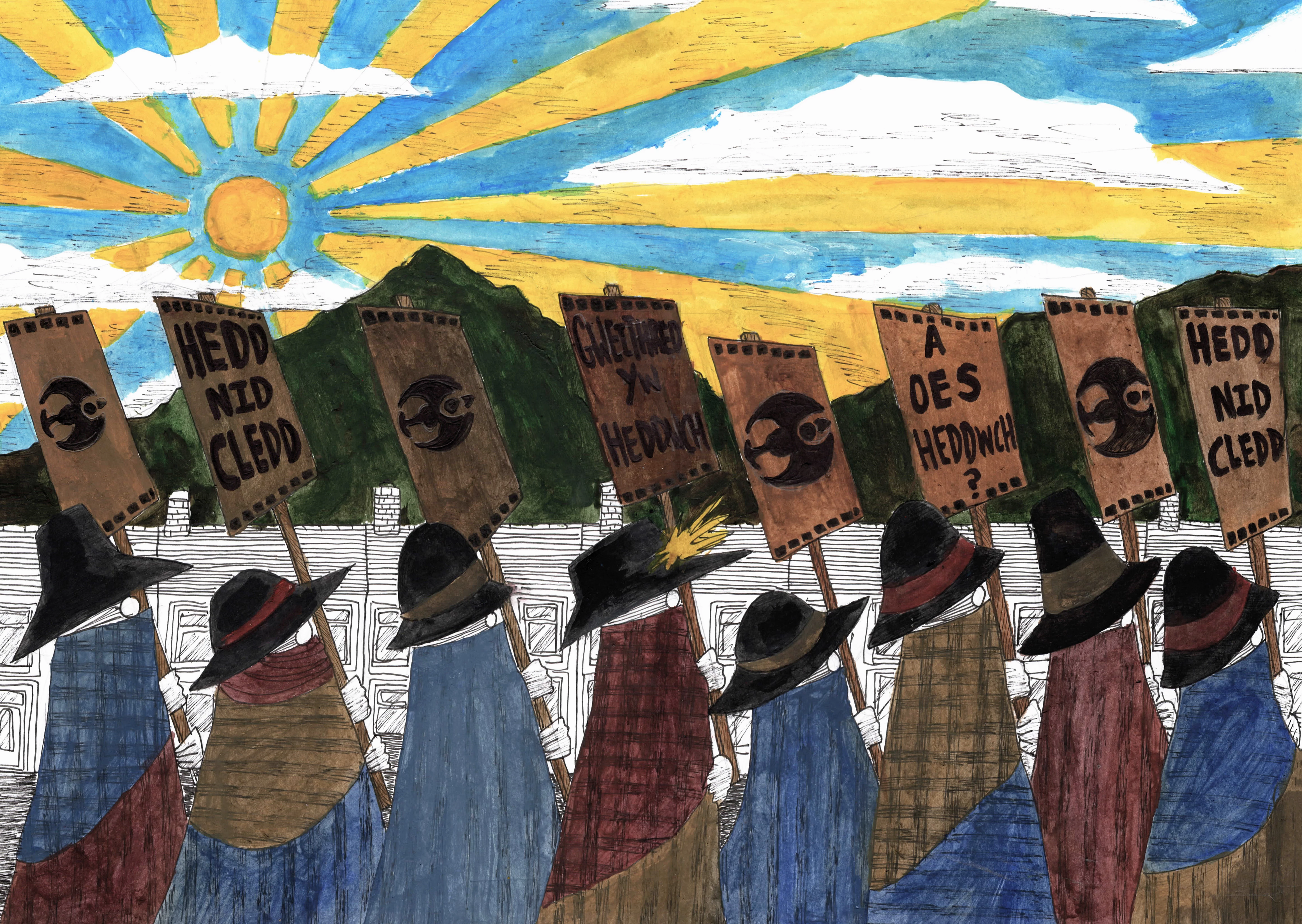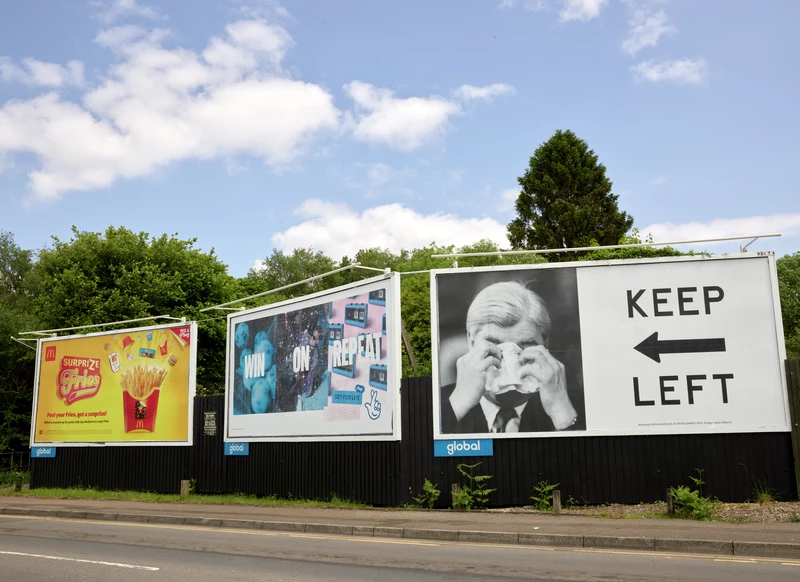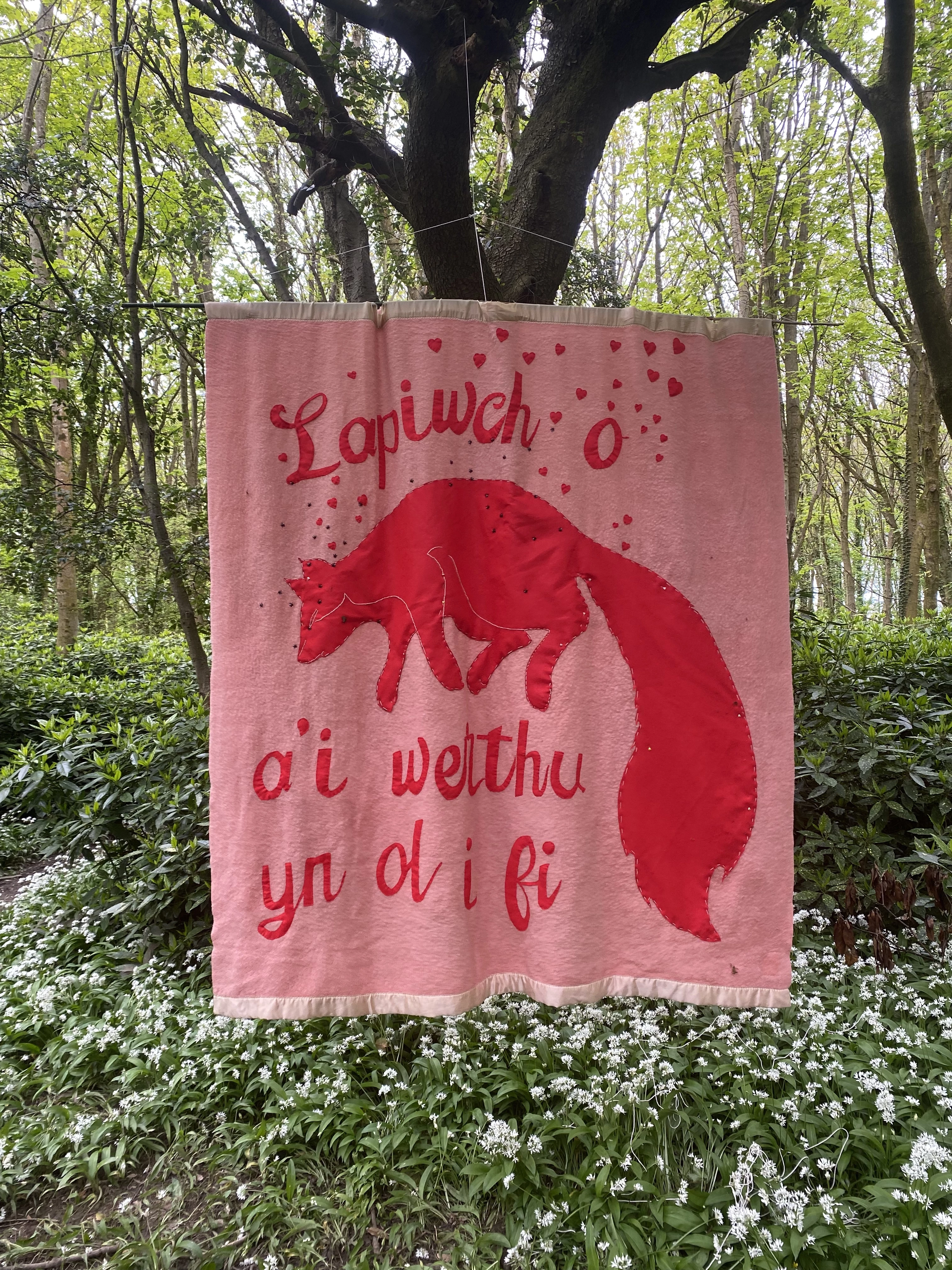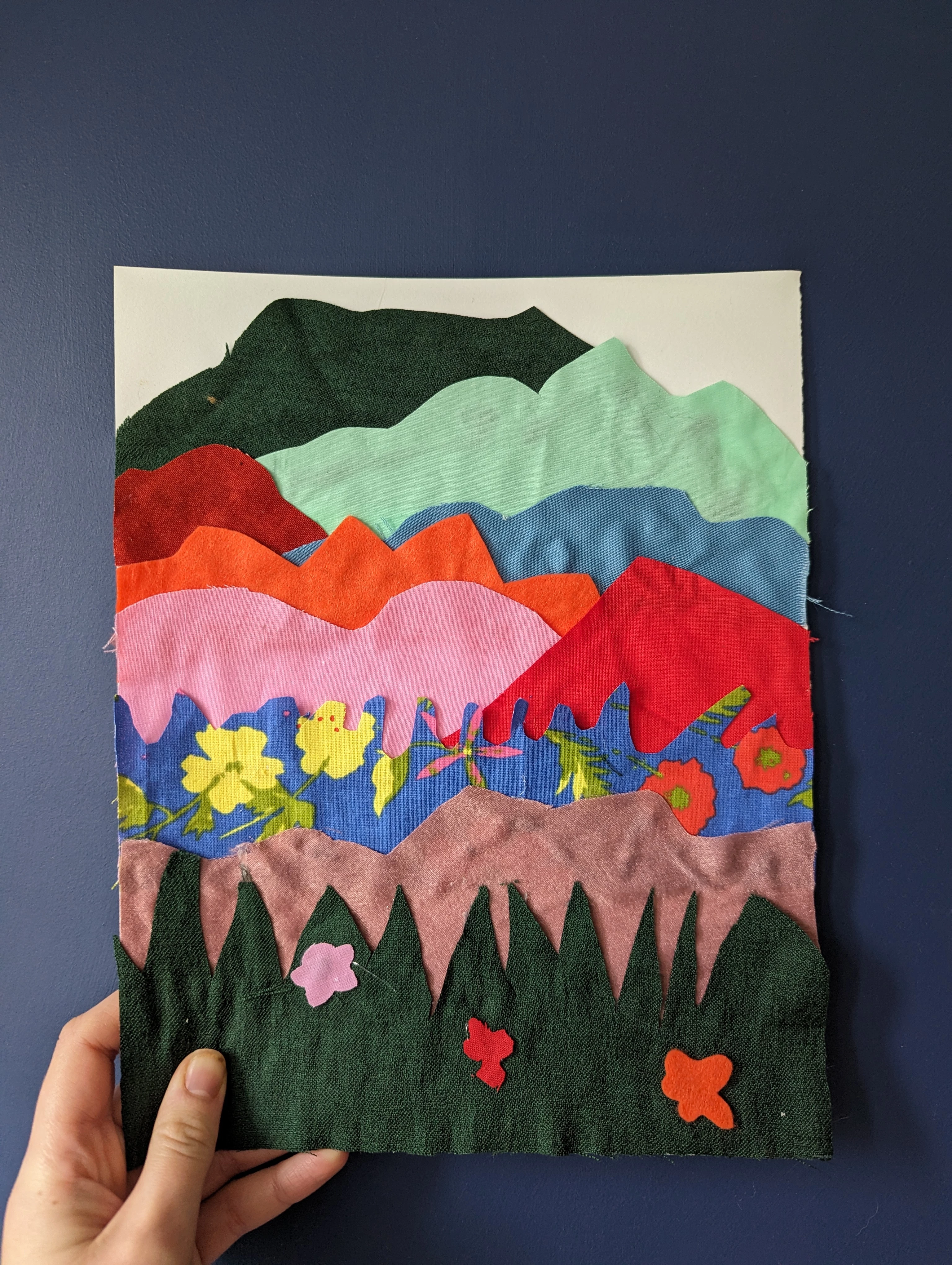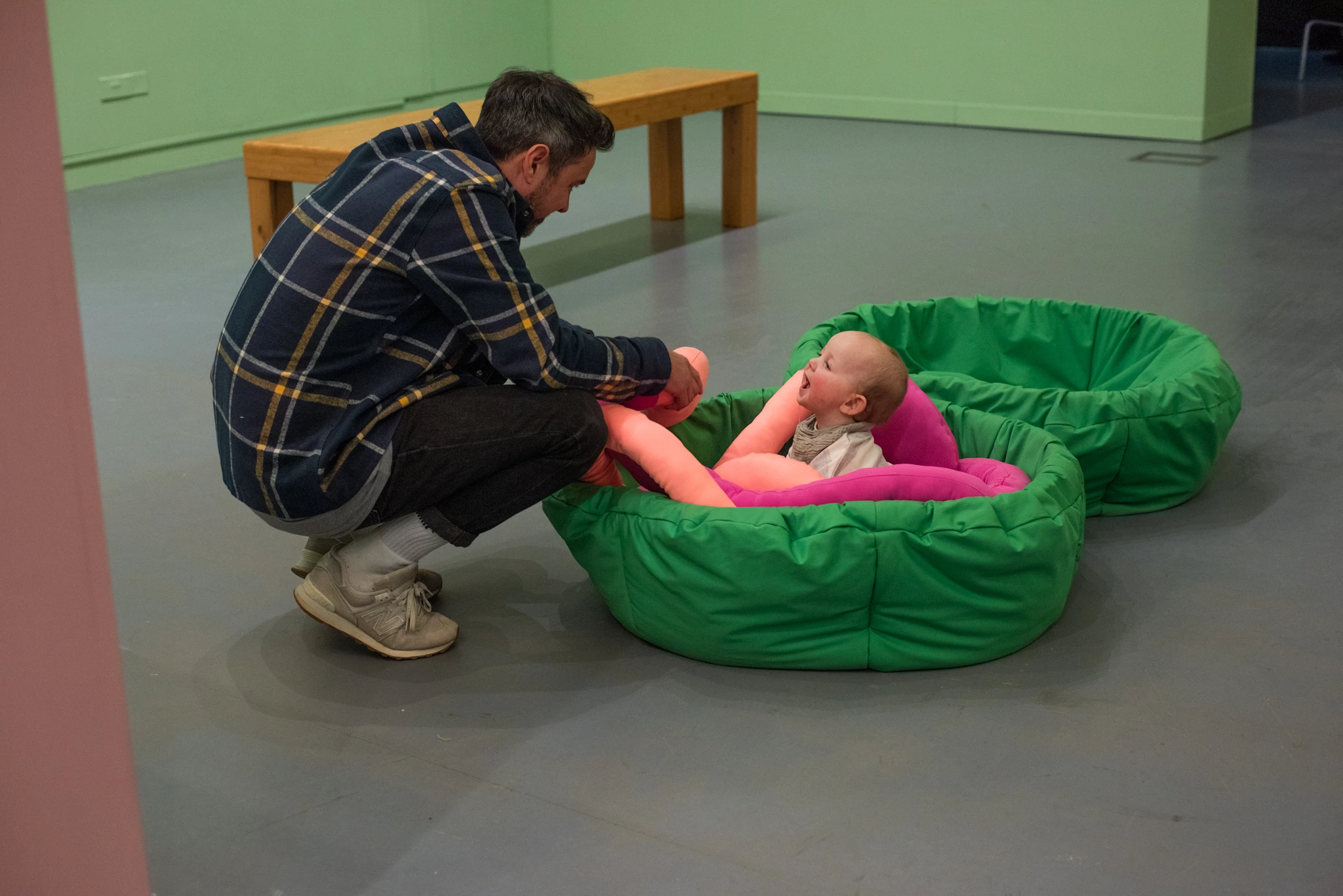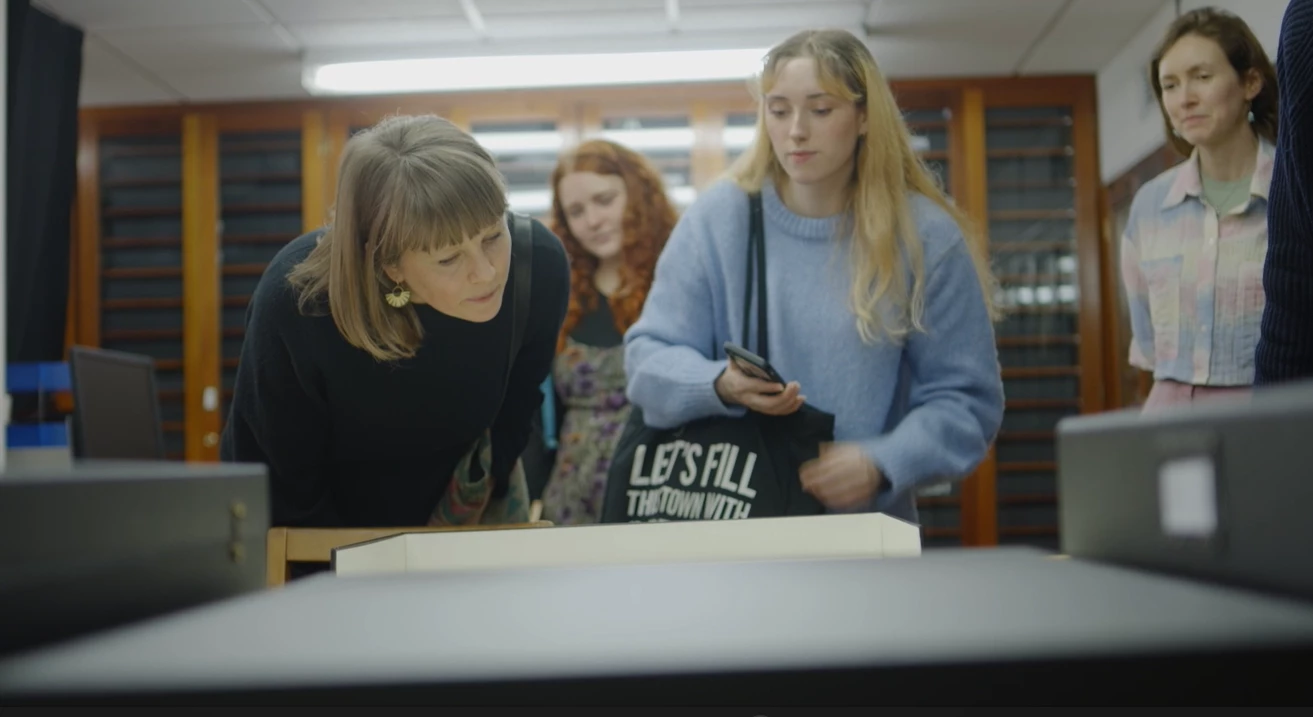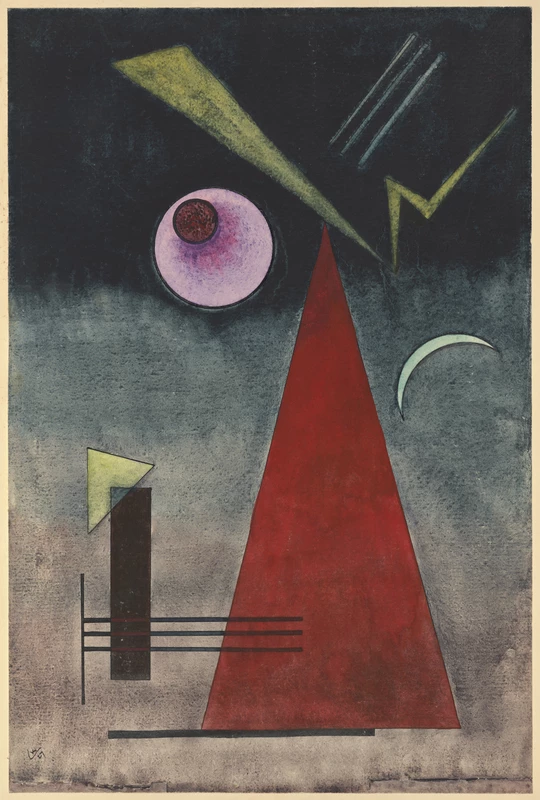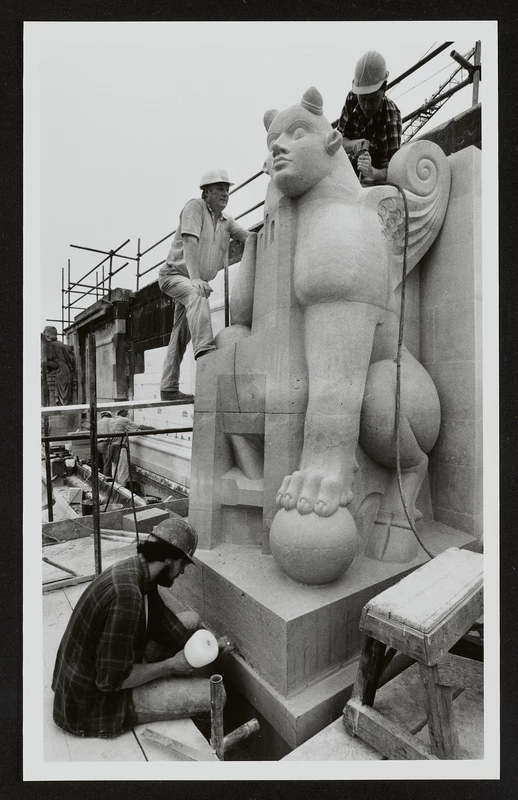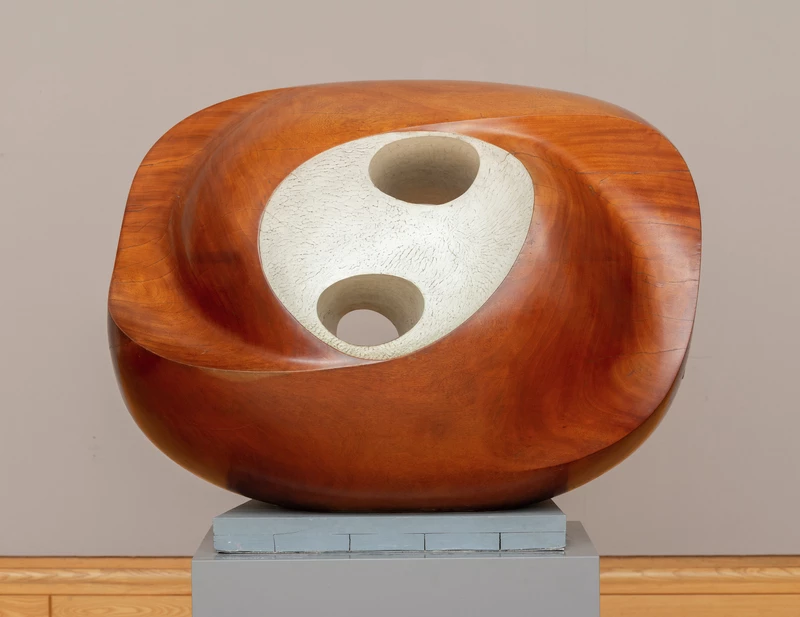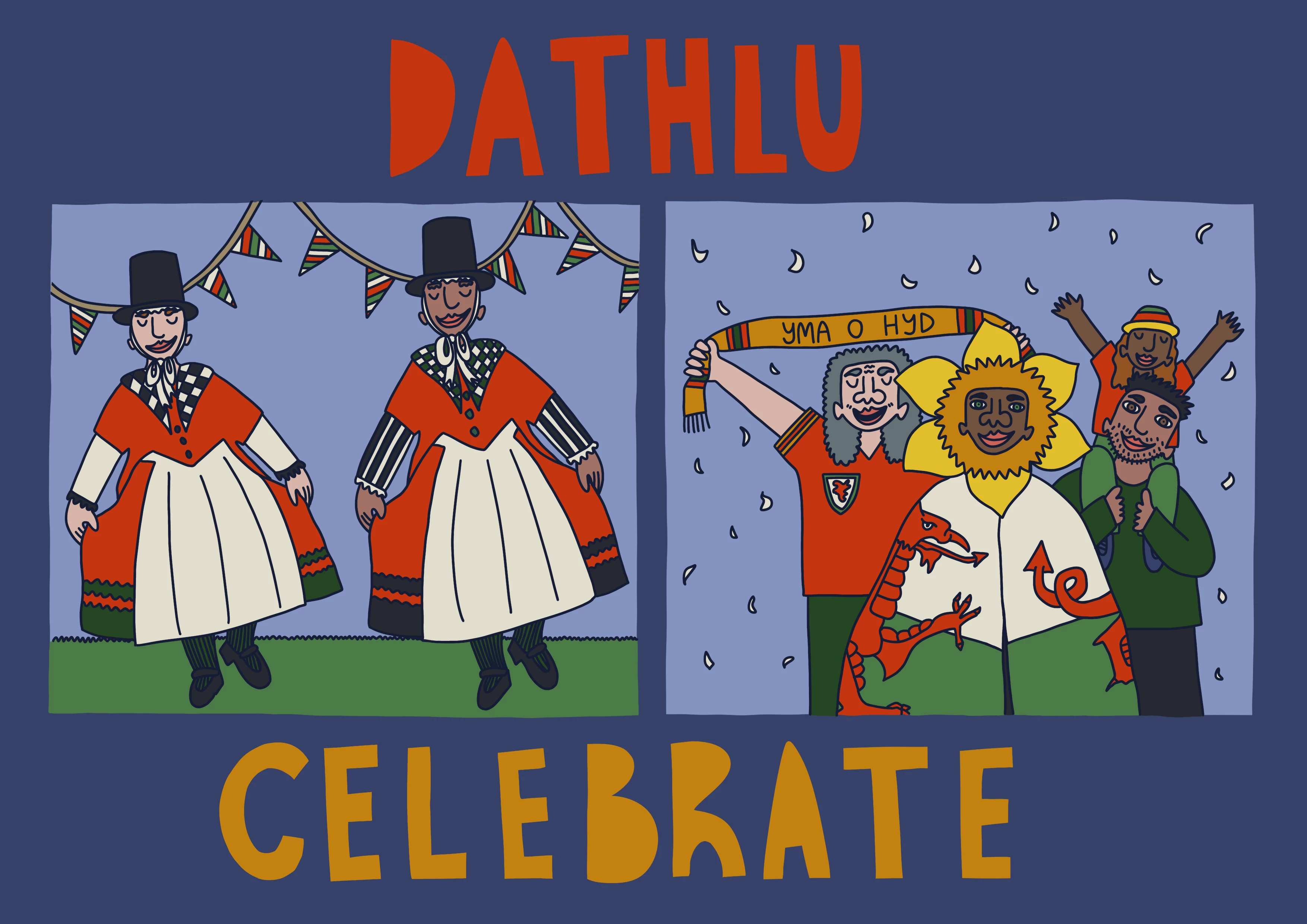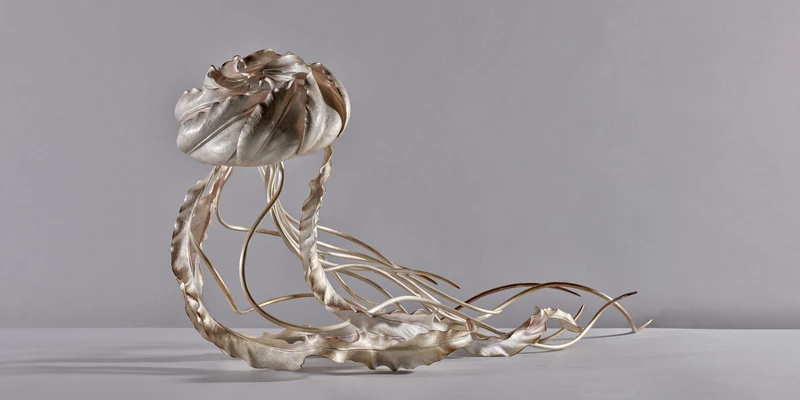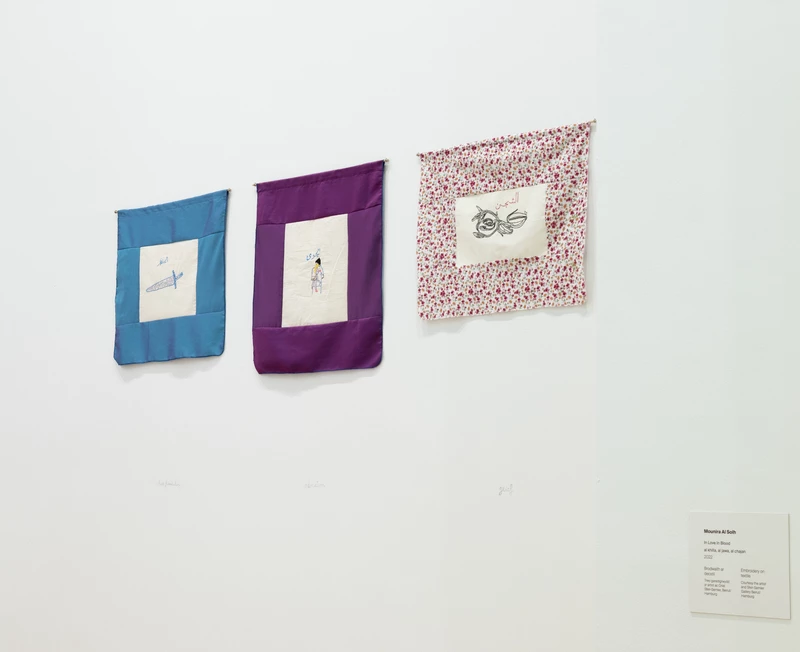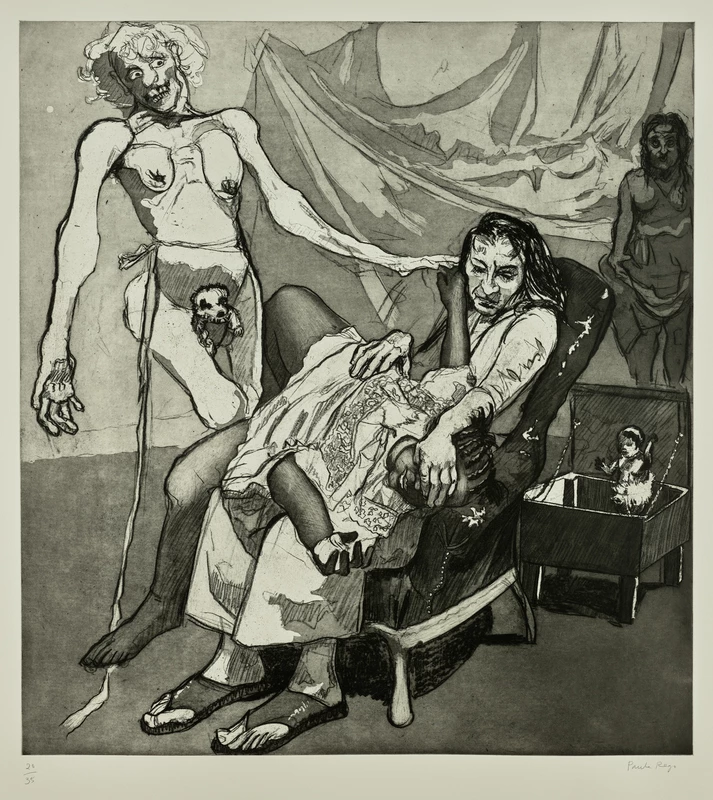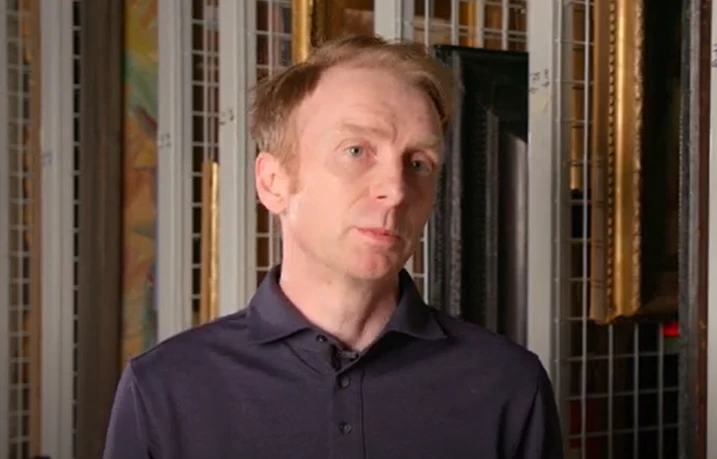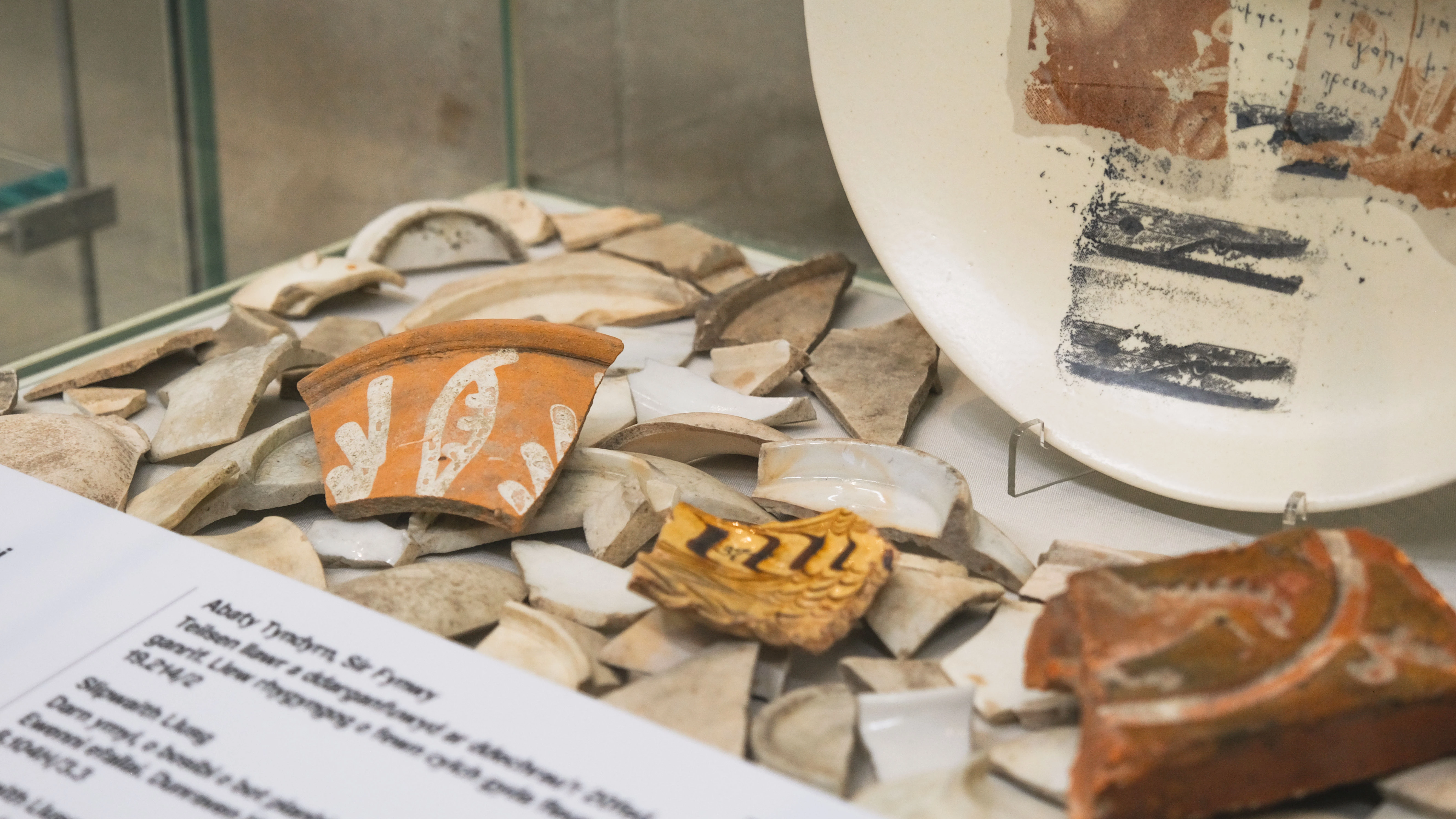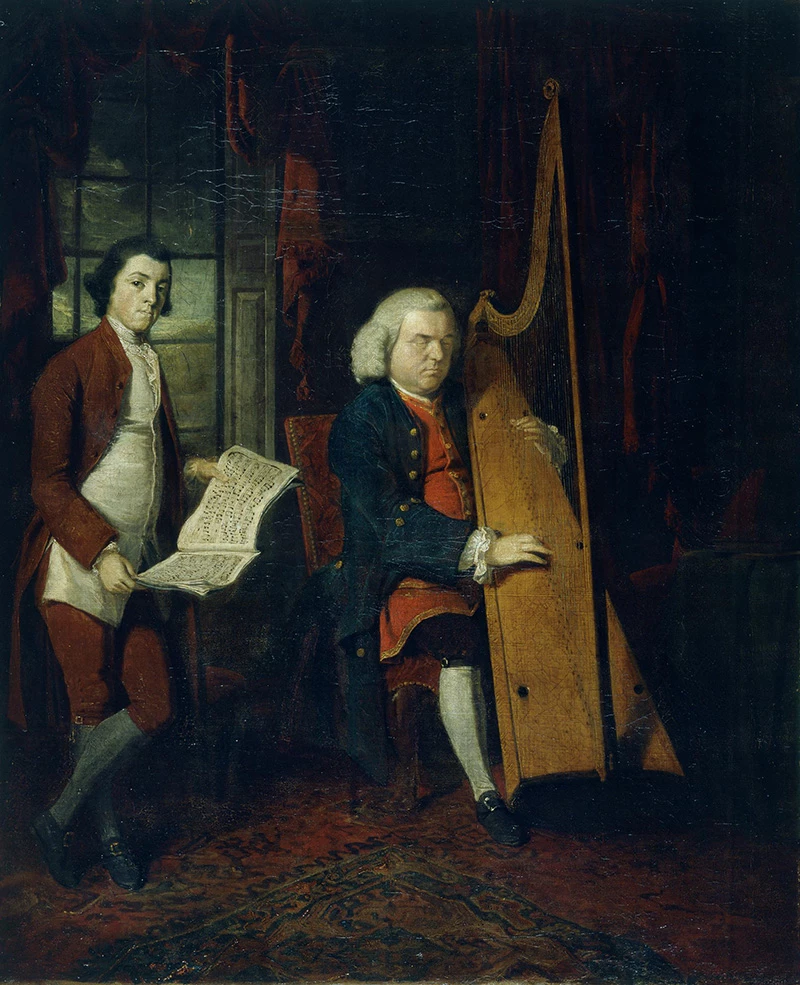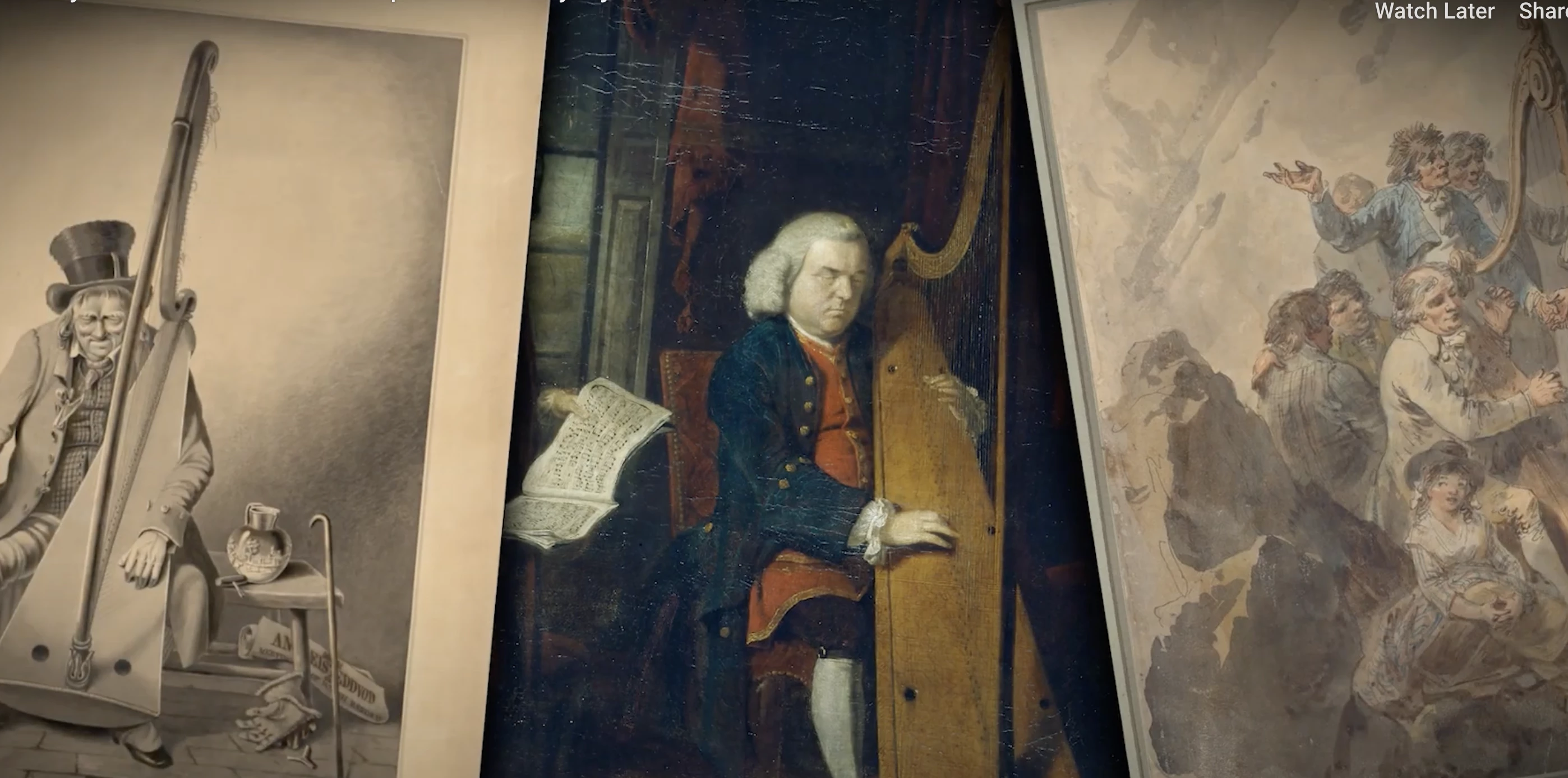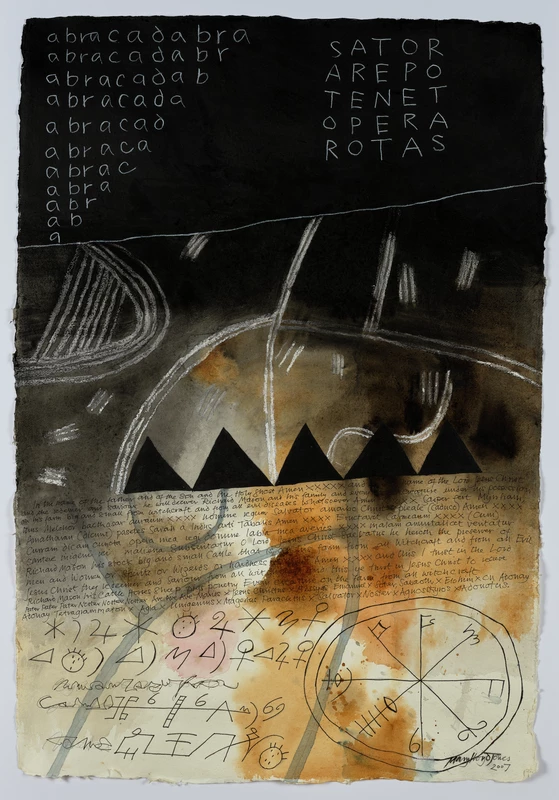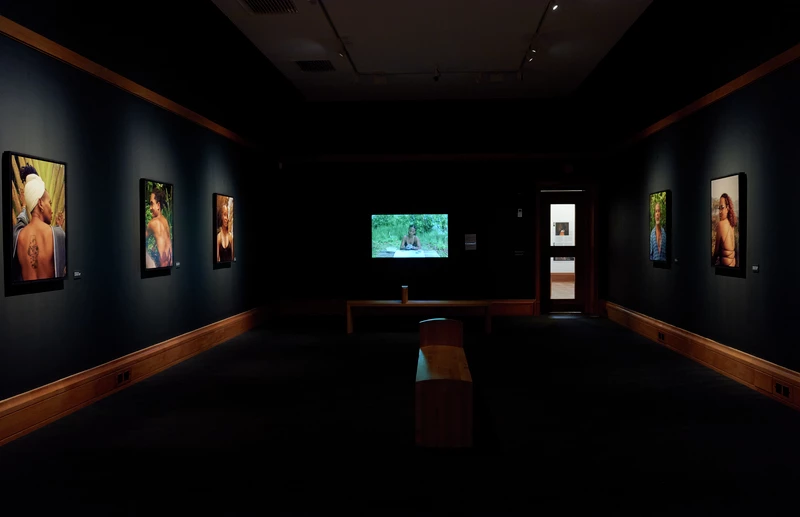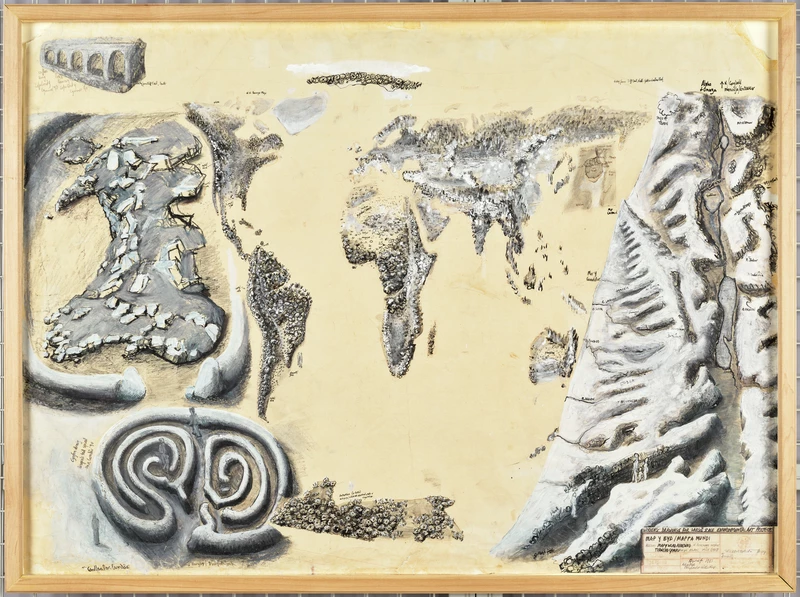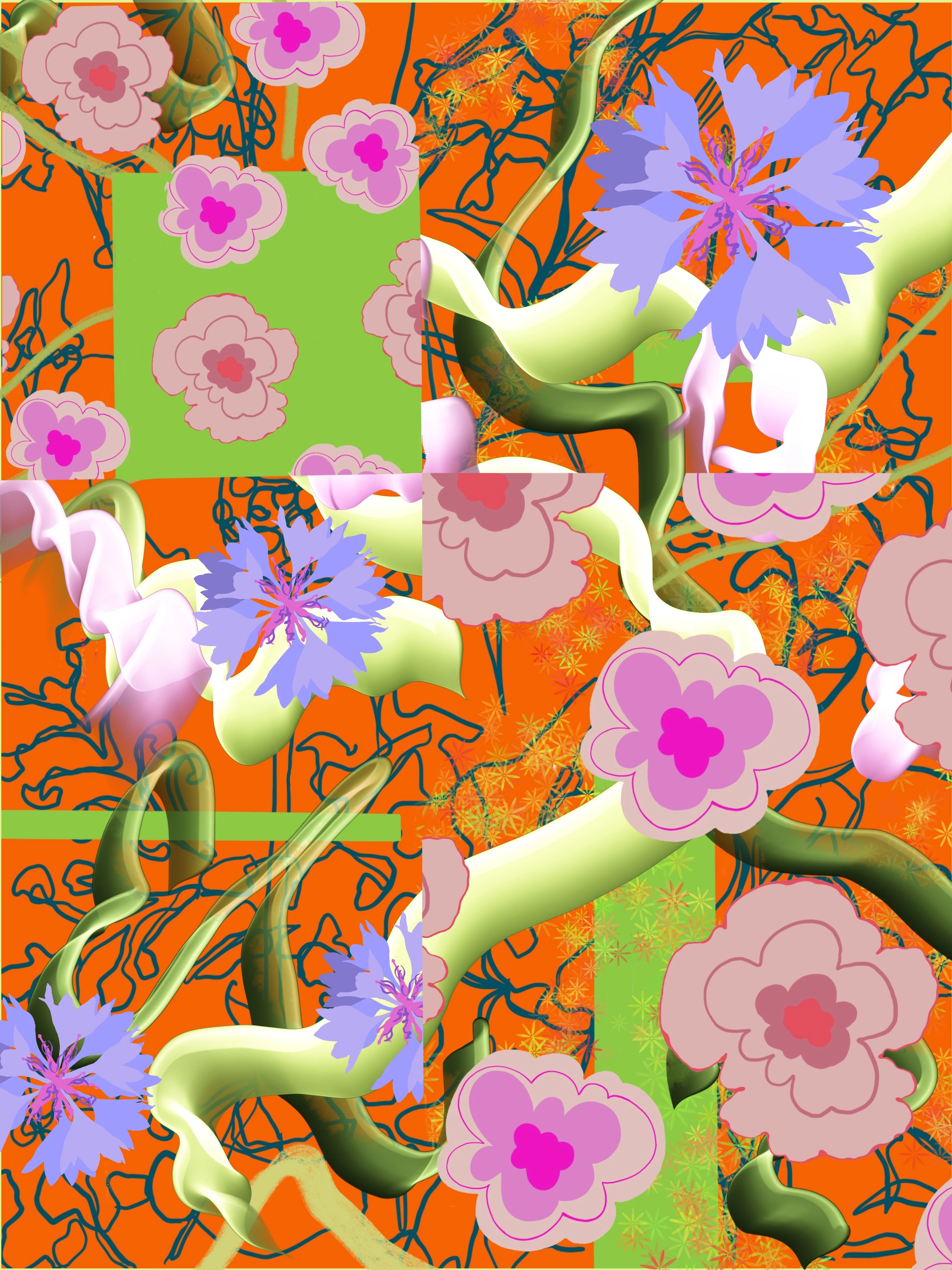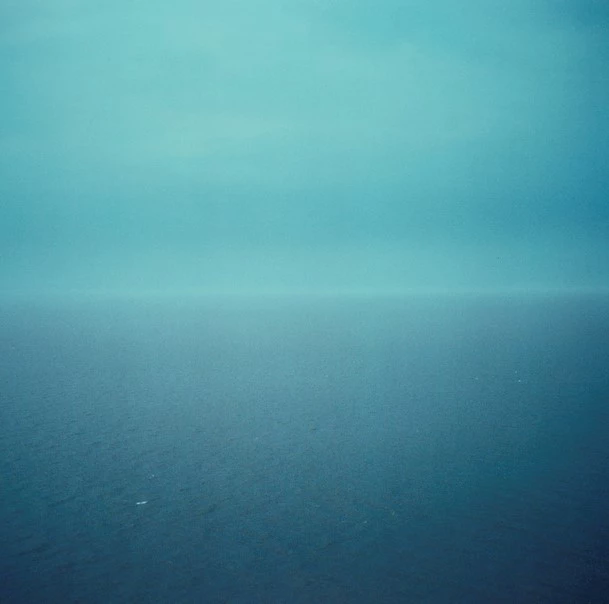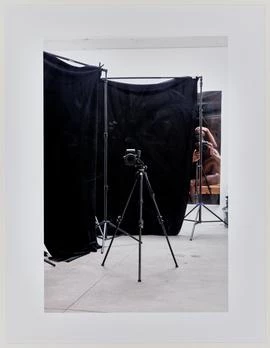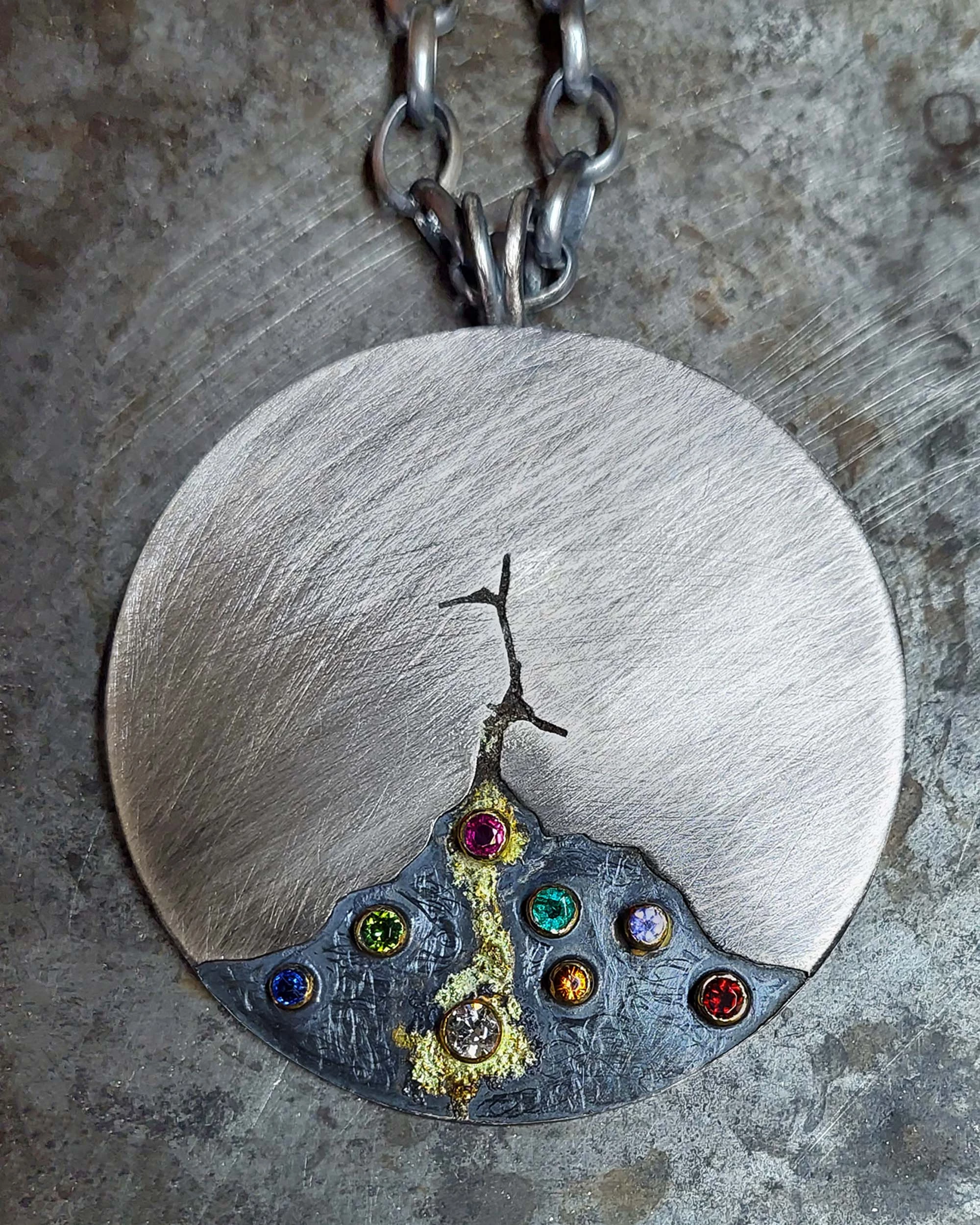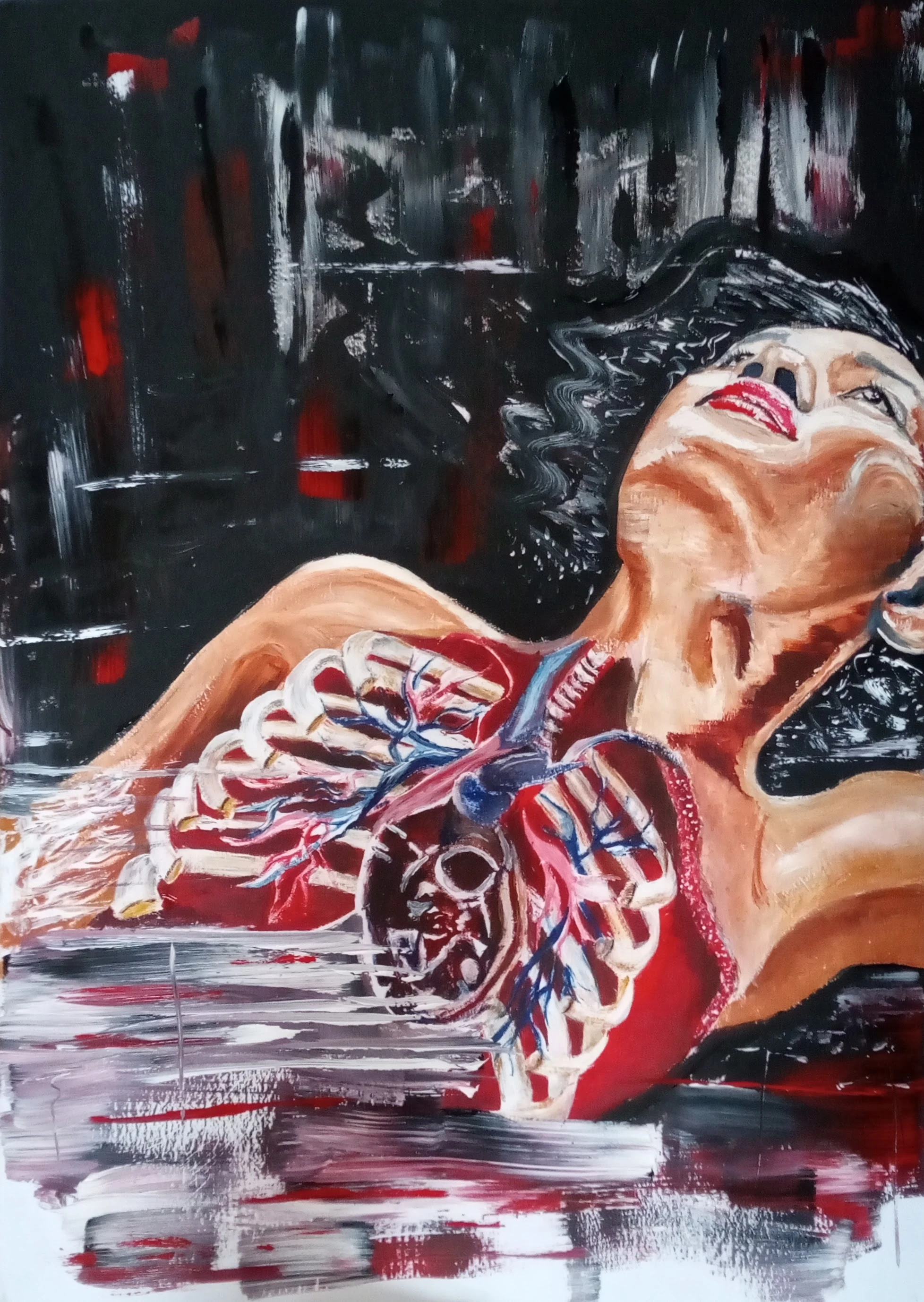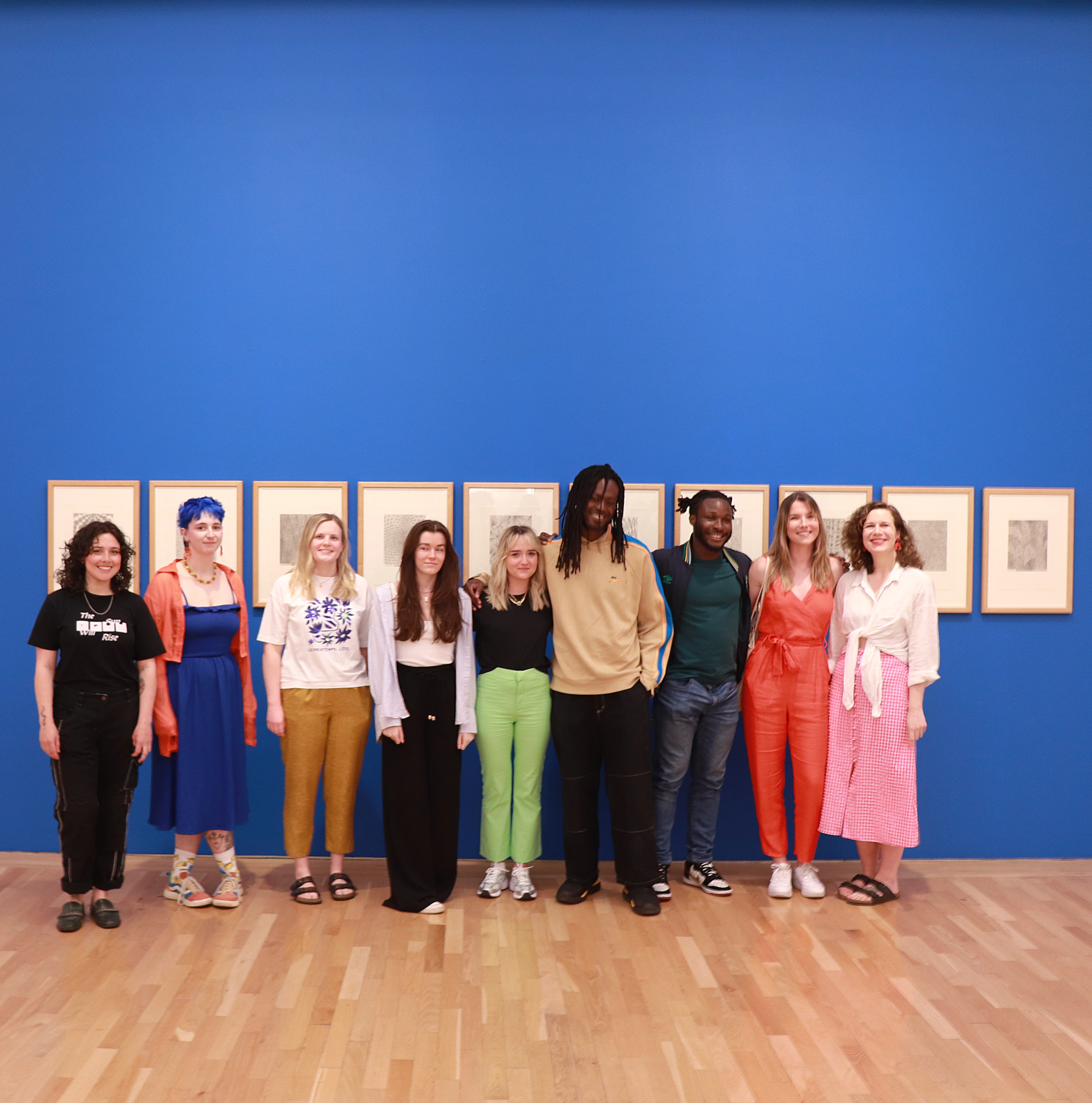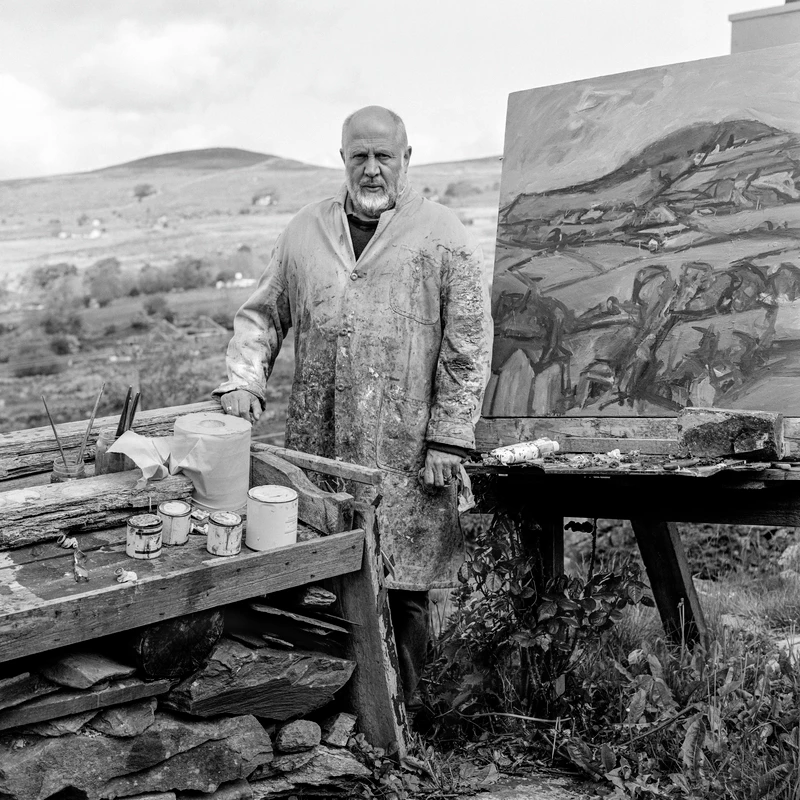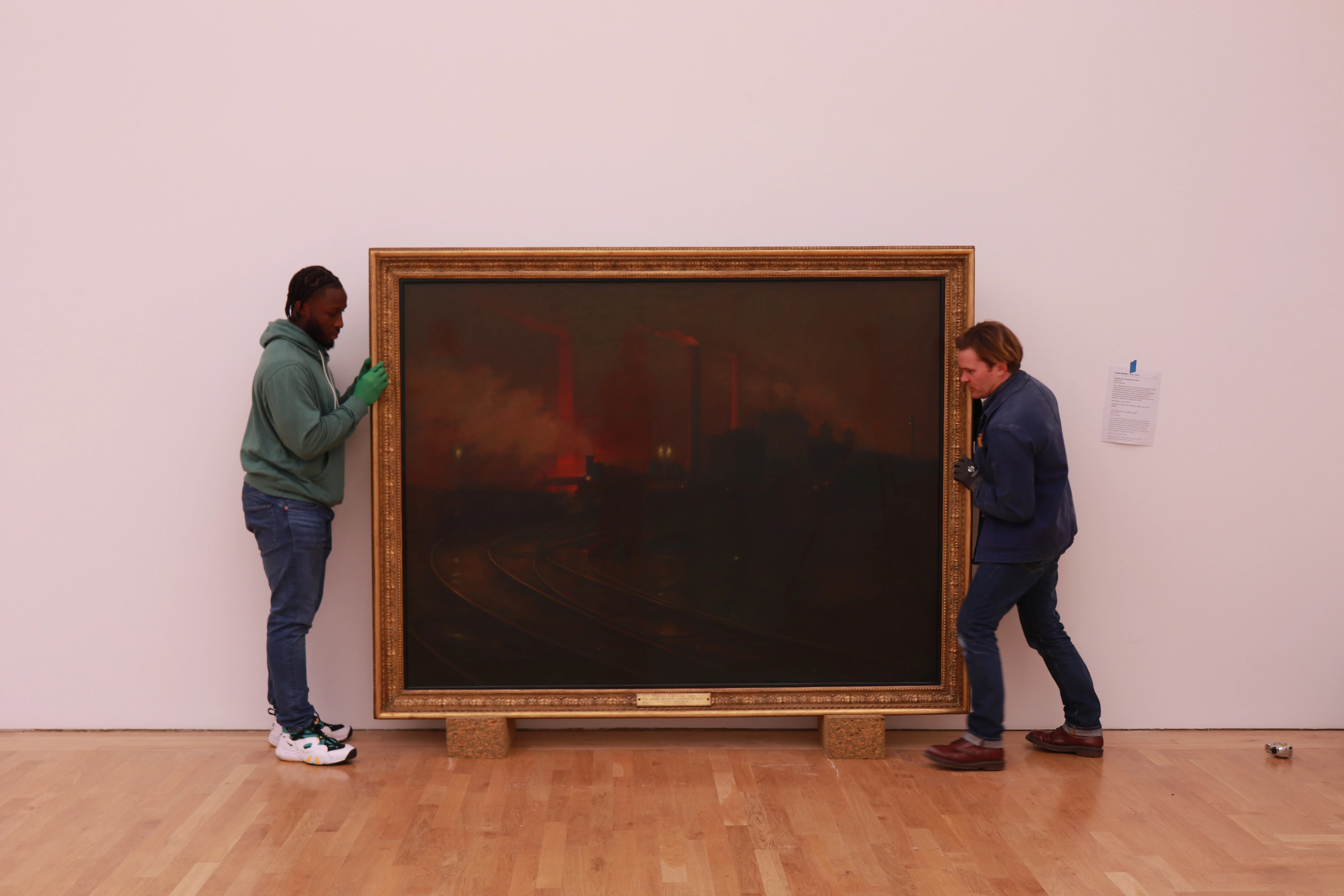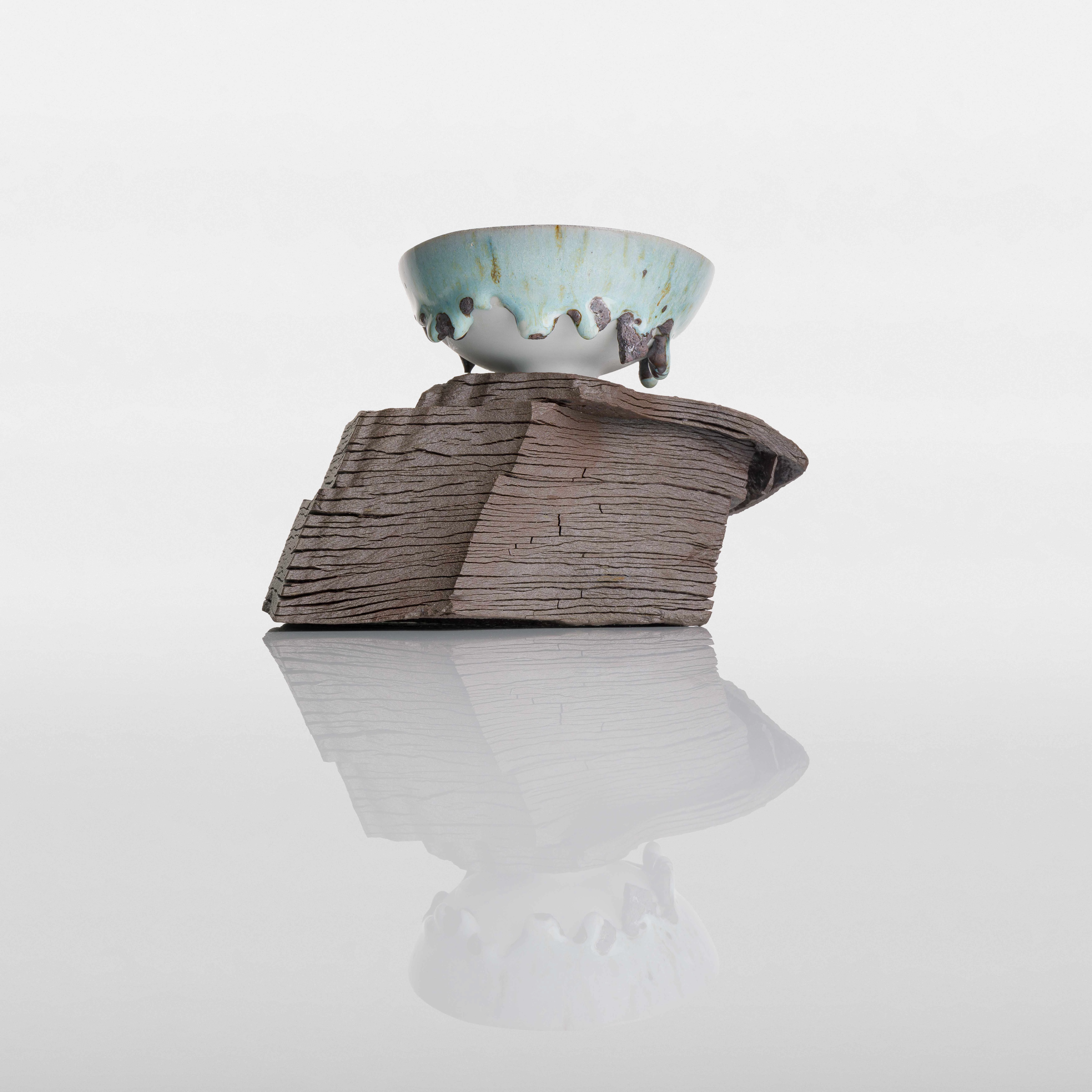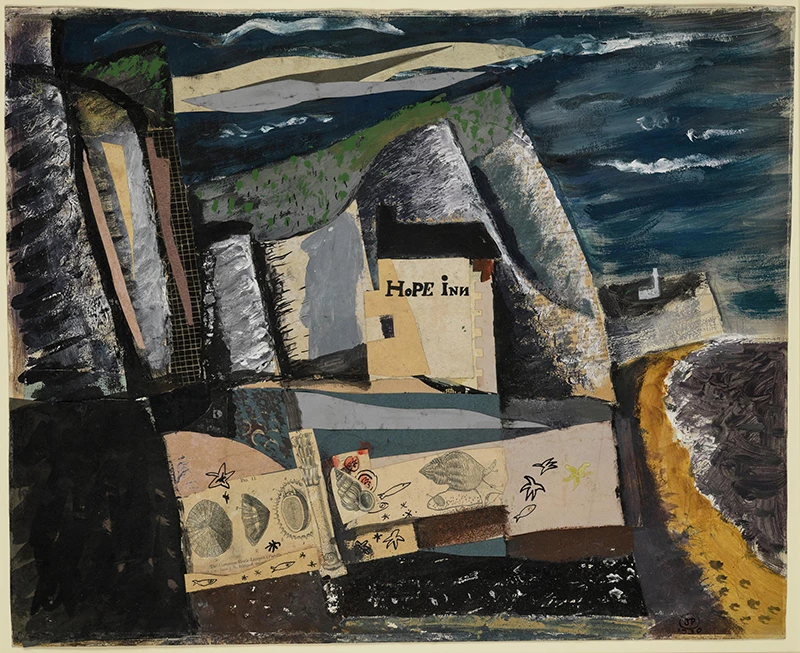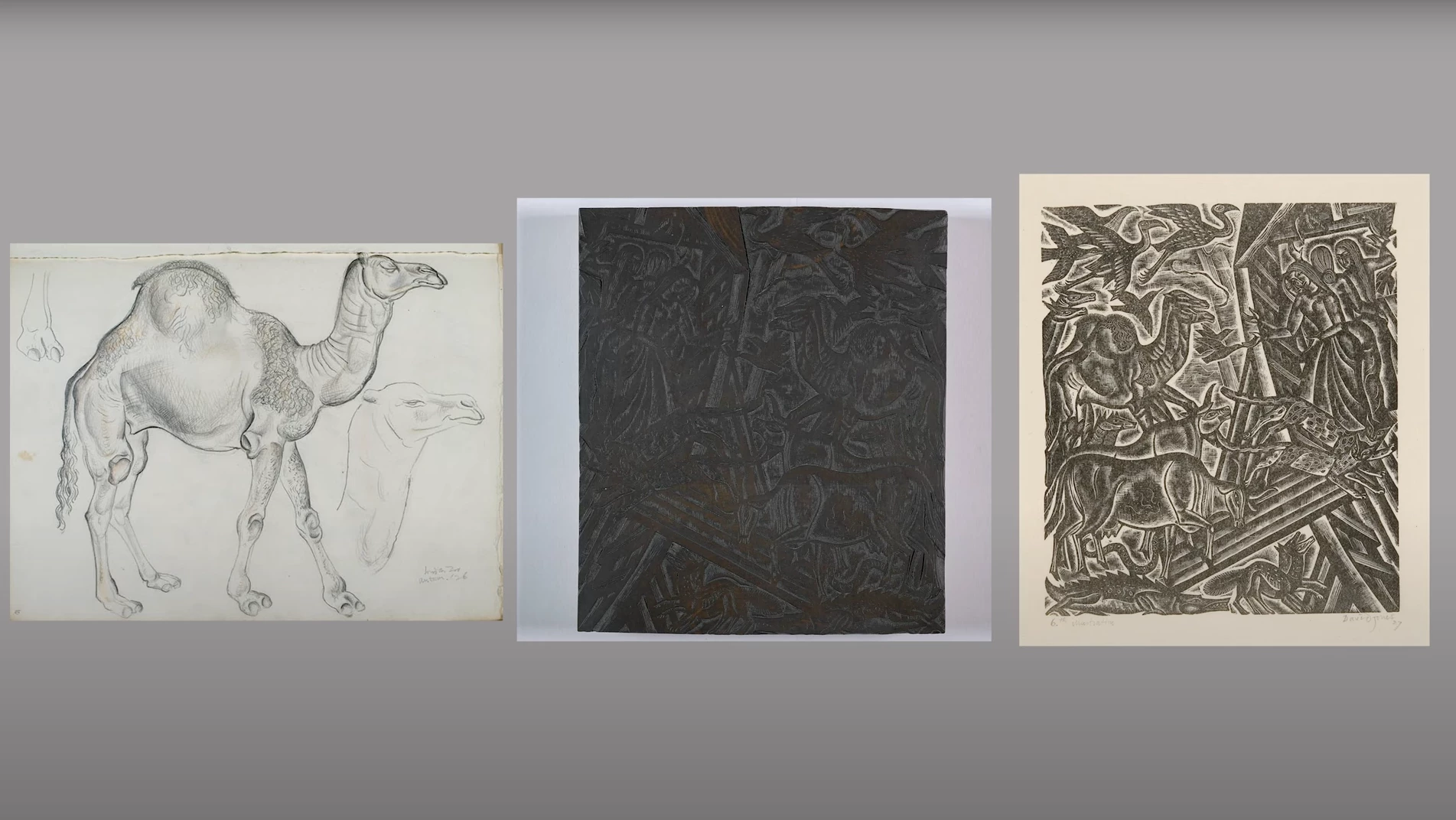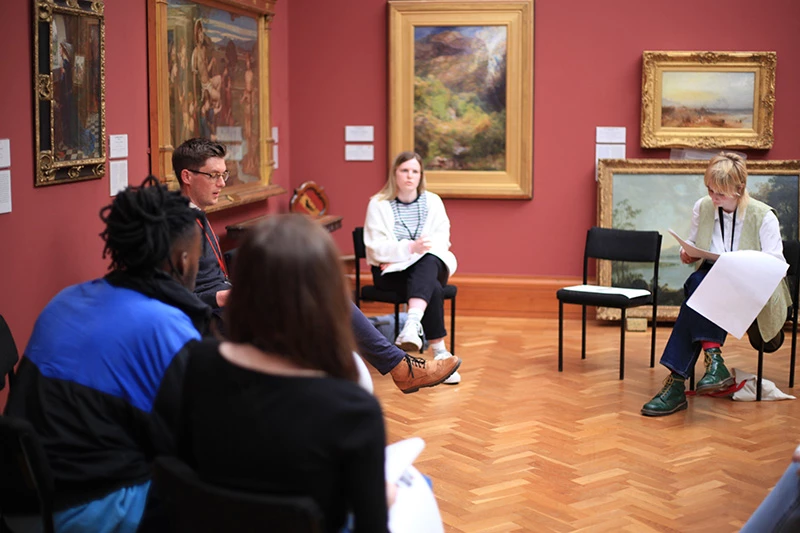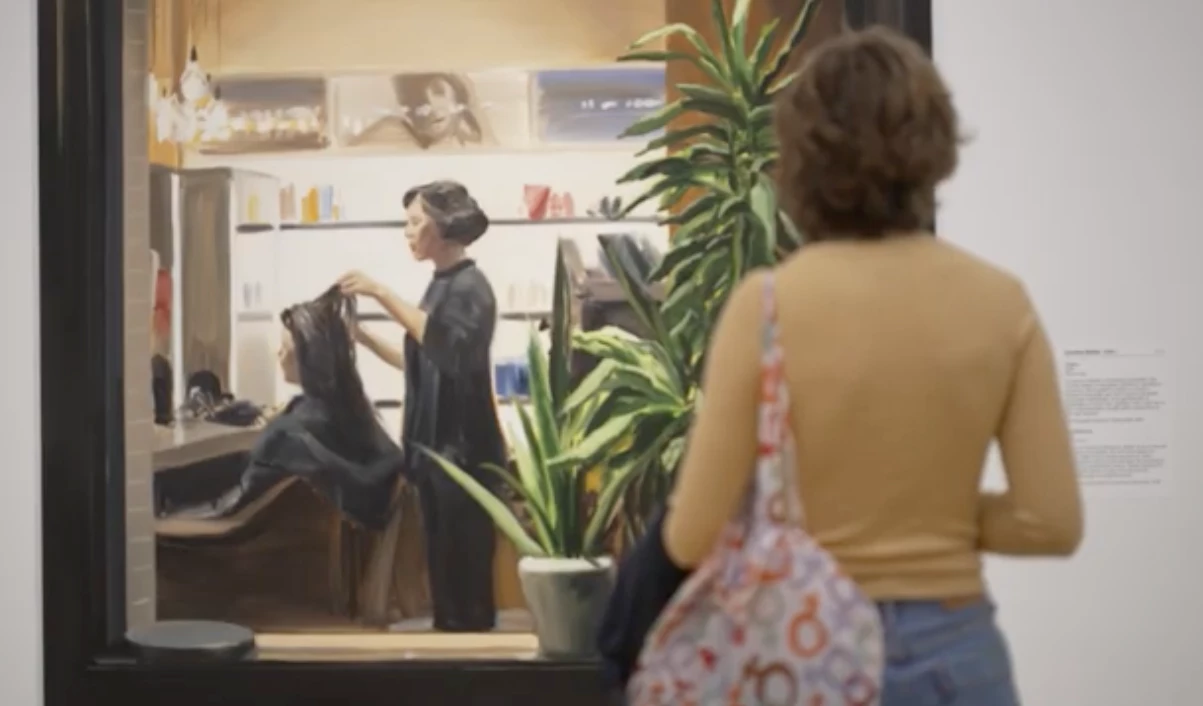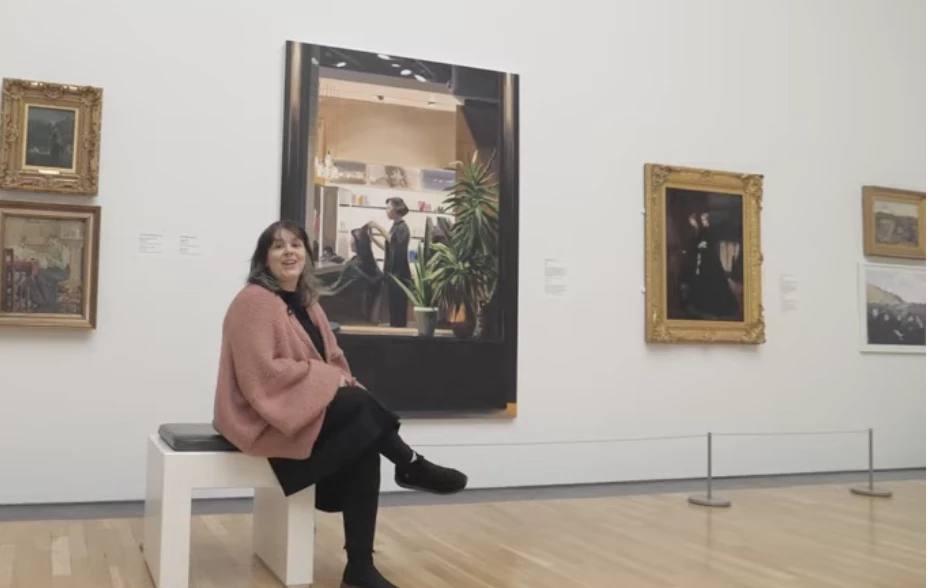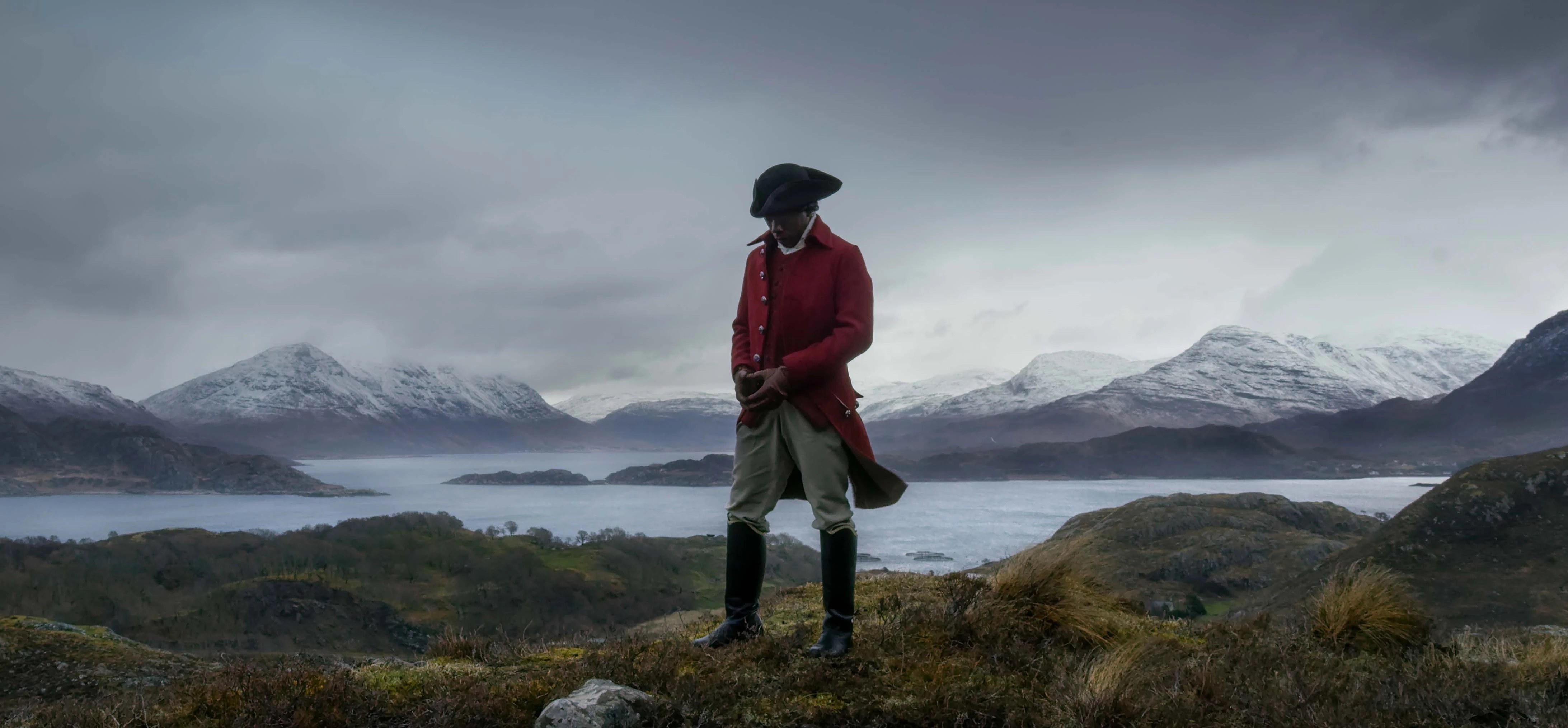Back in October 2022 I was at the National Gallery in London standing in front of Canaletto's painting, Venice: Campo S. Vidal and Santa Maria della Carità ('The Stonemason's Yard') and feeling slightly worried.
CANALETTO, Venice: Campo S. Vidal and Santa Maria della Carità ('The Stonemason's Yard'), about 1725 © The National Gallery, London
I had just been informed this was the painting that would be loaned to the National Library in May 2024, as part of the National Gallery's bicentenary celebrations. The brief for me as Interpretation Officer at the Library's exhibitions department was to curate an exhibition around this piece using our own collections. The big question for me, staring at the painting was "How do we interweave our specifically Welsh collections with this Italian masterpiece?"
Canaletto was famous for his idyllic paintings of Venice, but The Stonemason's Yard is different; it celebrates the industrial as well as the ideal. Instead of the usual romantic view of Venice that is normally the subject of Canaletto's works, here he has decided to elevate workers and ordinary people.
It was this contrast between the idyllic and the industrial which led to the curation of an exhibition that celebrates the contrasting landscapes of Wales – Idyll and Industry.
Artists have been inspired for centuries by beautiful views of Wales’ majestic mountains, verdant valleys and castles, but also by the scars of the industrial revolution. Wales continues to be a haven for contemporary artists as they reimagine and reshape the outline of her hills and valleys.
After months of mulling over several long lists, almost 90 Welsh landscapes from the national collection - around 50 of which are contemporary works - can now be seen alongside Canaletto's painting on the walls of Gregynog Gallery. Here’s a taste of what you can expect in the exhibition...
Idyll
By the end of the 18th century the majestic mountains, waterfalls and castle ruins of Wales attracted artists from all over Britain. Instead of fearing the dangers of these wild places, people began to admire their natural splendour and the mythology and history of the landscape.
From the 1920s to the late 1960s, a group of artists – the neo-Romantics - returned to the traditional subject of landscape painting. In the same way that artists such as Richard Wilson and JMW Turner had transformed landscape painting by focusing on the sublime power of nature, these artists looked to create their own unique artistic visions. This was a turbulent time in the world, and the aim of these artists was to capture the 'spirit' of a place at a time of change.
ELWYN, John, Cardiganshire Meadows, 1959 © Artist’s Estate
Despite living most of his life in England, John Elwyn painted memories of the farms and lanes of his childhood in rural South Cardiganshire throughout his career. His artworks often conveyed his deep longing, his ‘hiraeth’, for the landscapes of his home. But there is also a distorted element to his landscapes, which can be explained by the darkness of the Second World War manifesting itself in the imagery.
Throughout the centuries, artists have developed unique methods to depict the Welsh landscape, drawing inspiration from its natural, historical, and social features. Their interpretations enrich our appreciation and understanding, and often depict the intimate relationship between people and their surroundings.
HOWARDS JONES, Ray, Way Down to Easter Bay, 1981 © Artist’s Estate
Ray Howard-Jones was a prolific Welsh artist best known for her seascapes and paintings of the spectacular Pembrokeshire coastline, particularly of the areas around Skomer Island and Marloes. She spent many summers between 1949 and 1958 on Skomer, and these stays showed her that nature and her deep inner spiritual life were sources of great inspiration. She created a huge body of work on this island, noted for their impressionistic style and remarkable use of colour.
Industry
The Industrial Revolution in Wales attracted people from a wide range of backgrounds and cultures, creating a thriving society, and the landscape of these areas began to change due to these growing communities. By the 20th century, a new generation of artists emerged who had grown up alongside miners and quarrymen, with their work often depicting the people, their homes and their gathering places as integral to the landscape.
CHAPMAN, George, Hopscotch, 1959 © Artist's Estate
English artist George Chapman first visited the Rhondda Valley in 1953. This visit gave his work new direction, and he would return time after time saying: “I realised that here I could find the material that would perhaps make me a painter at last.” Chapman's depictions of the Rhondda portray the essence of Valleys' towns and communities. Rather than focusing on the parks and pleasant areas, he delved into the overlooked corners — the backstreets and alleys, often at dusk and in inclement weather. He carefully watched and captured the everyday life of the Rhondda, as shown in this painting of children playing hopscotch with dark hills and smoking chimneys in the background.
Industry has no doubt left its mark on Wales. The land itself is scarred by derelict mines and looming slag heaps. Wales' industrial scenery has been depicted by artists in contrasting ways, seen as either disrupting nature or celebrating a distinctive way of life. Their work reflects a complex connection to Wales' industrial environment, exploring the impact of industry on both communities and the environment.
LLOYD JONES, Mary, Cwm Rheidiol, 1991 © Mary Lloyd Jones
Mary Lloyd Jones’ work is greatly inspired by locations that bear the scars of human activities such as mining and quarrying. These processes reveal what typically remains concealed beneath the earth's surface. Mary integrates these subterranean elements with surface features and weather conditions to create visual representations of these places. The colours chosen are often inspired by the soil, rocks, and vegetation beneath her feet, infused with brighter colours that add her characteristic vitality.
Abstracting the Landscape
Today, many contemporary artists investigate how the Welsh landscape and personal identity connect through abstract art. By stripping away literal imagery, artists convey emotional and psychological connections to the land. Through colour, texture, and composition, artists evoke sensations and memories, inviting viewers to contemplate their own sense of place and belonging in the world.
HAINES, Elizabeth, The Other Land © Elizabeth Haines
Elizabeth Haines’ most recent paintings are influenced by the landscape of Wales. Though they are indeed landscapes, they settle in a precarious hinterland between representation and abstraction, where information gained from years of drawing from nature has blended with the imagination. Her paintings have been described as “suggestive and mysterious, whilst still working in the great British tradition of the landscape, reading and interpreting nature and returning it to the viewer enriched.”
Whilst famous scenic views are celebrated in this exhibition, we also see works that have been inspired by industrial and urban areas. Together, these landscapes define the unique character of Wales.
The Idyll and Industry exhibition is free, and open until 7 September 2024. Please visit library.wales/canaletto for more information.
